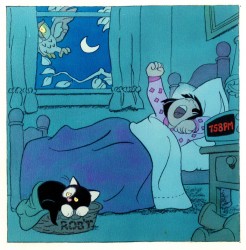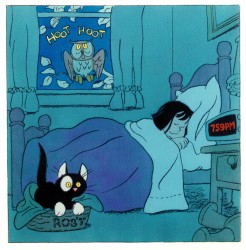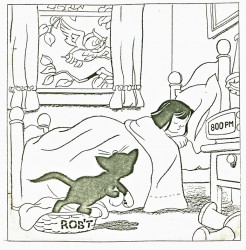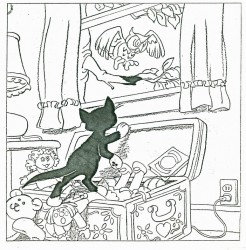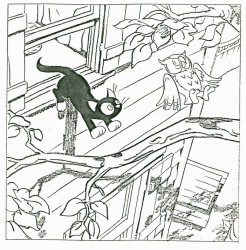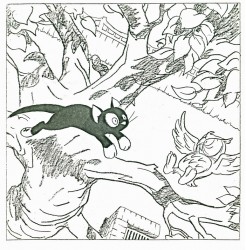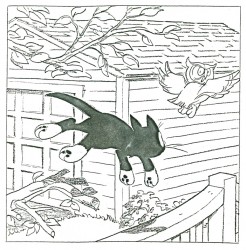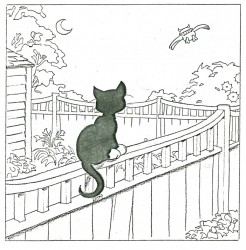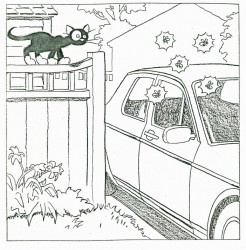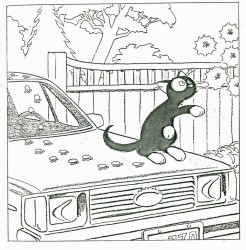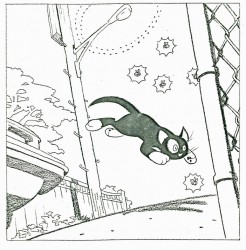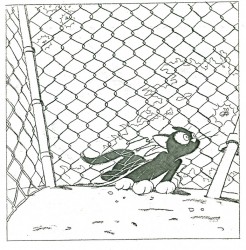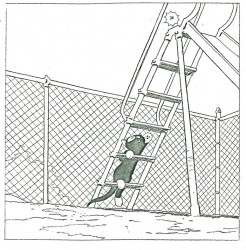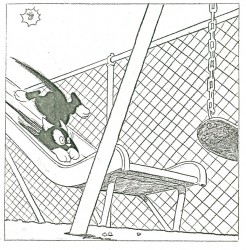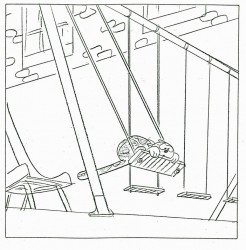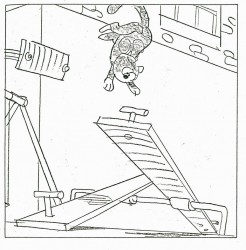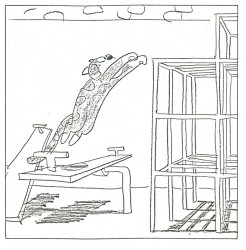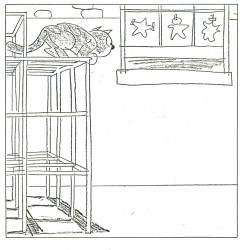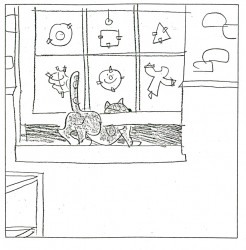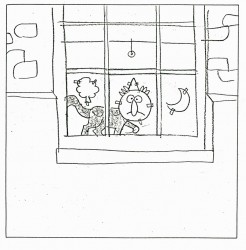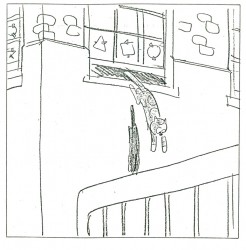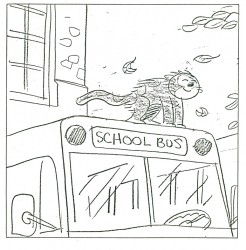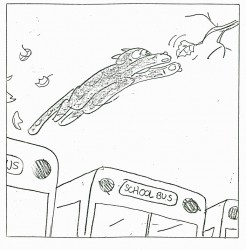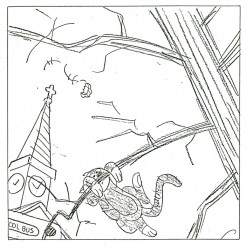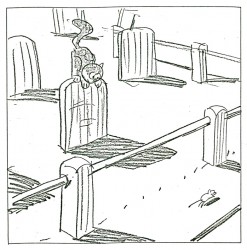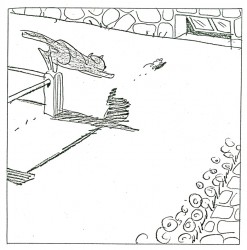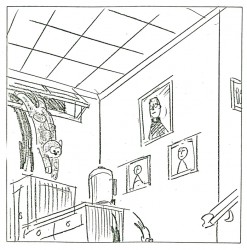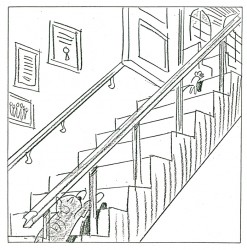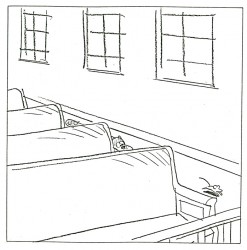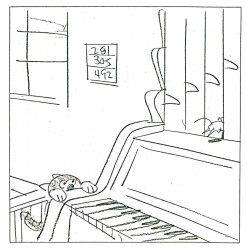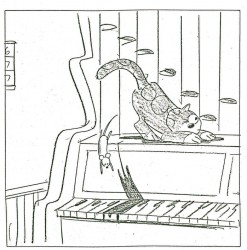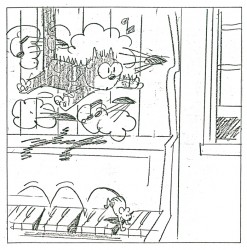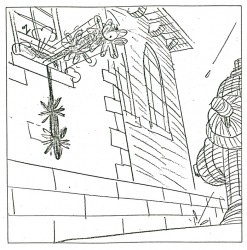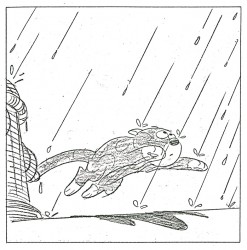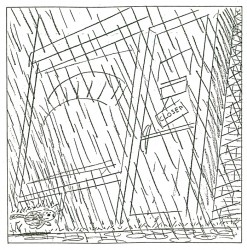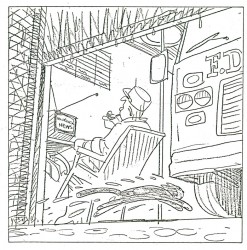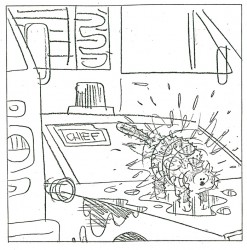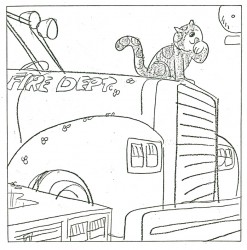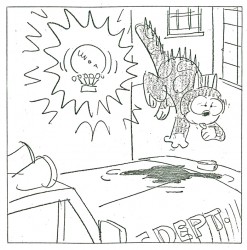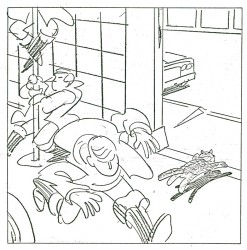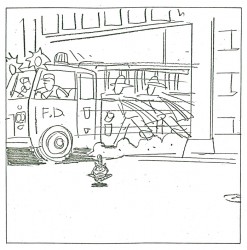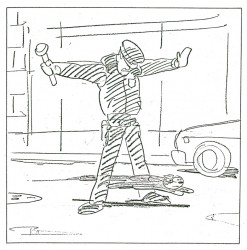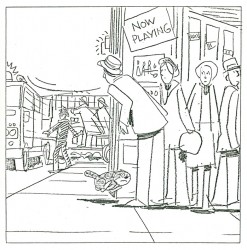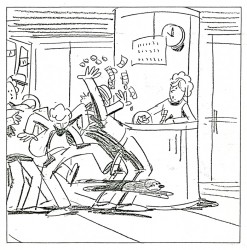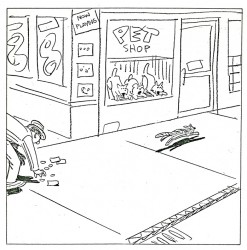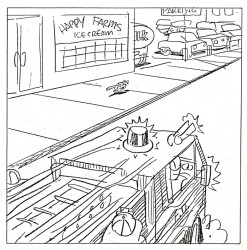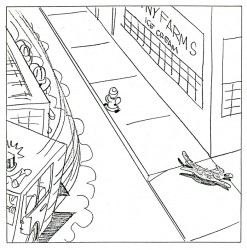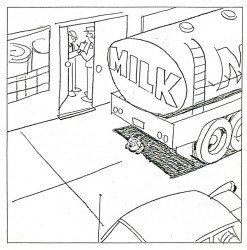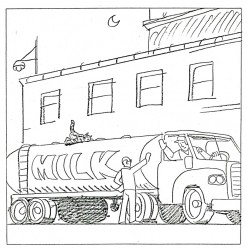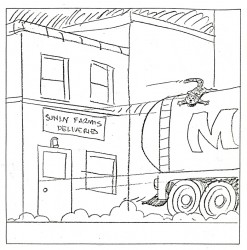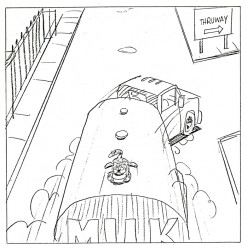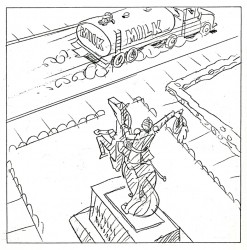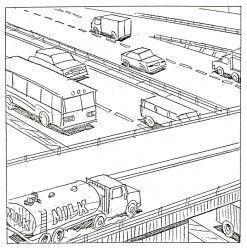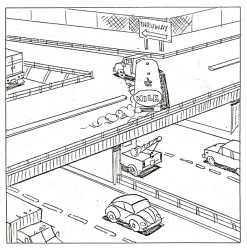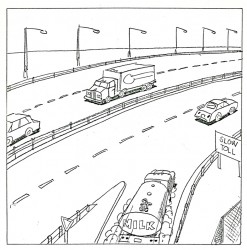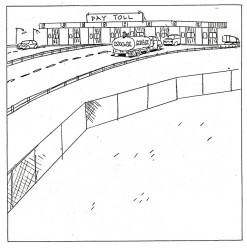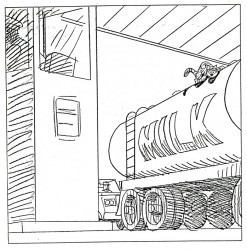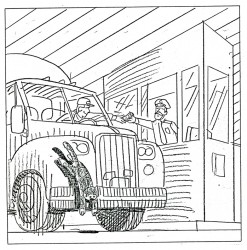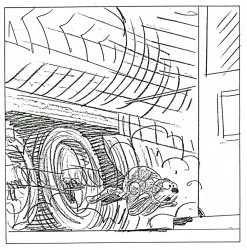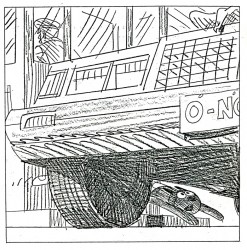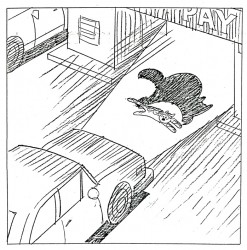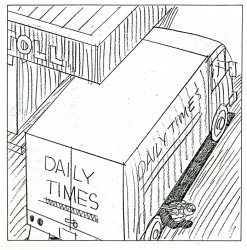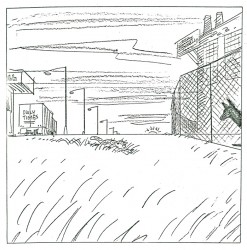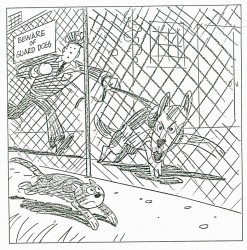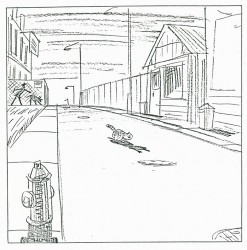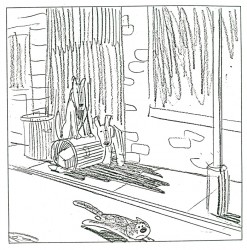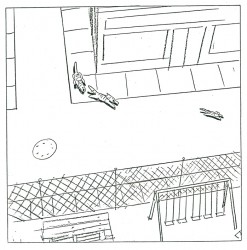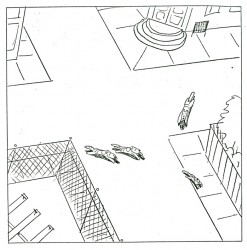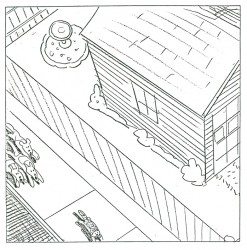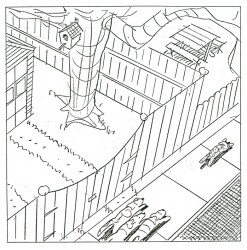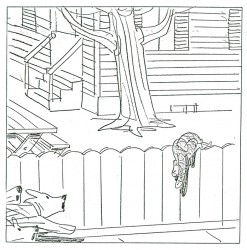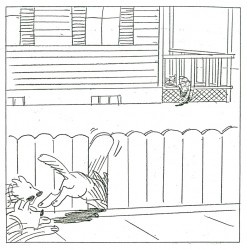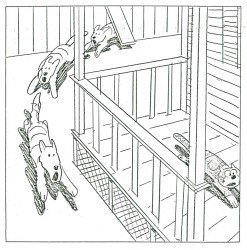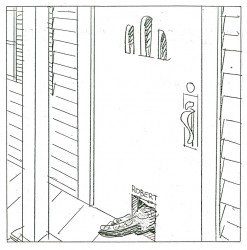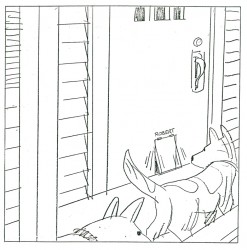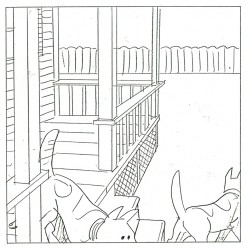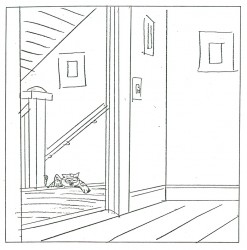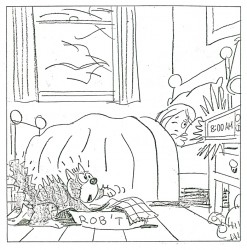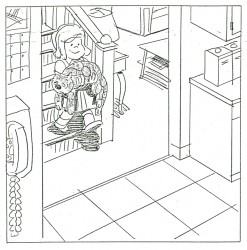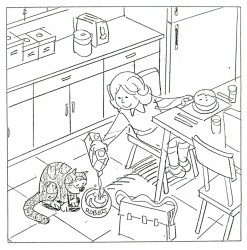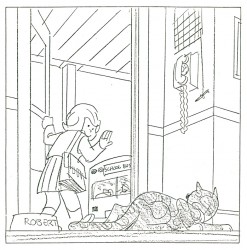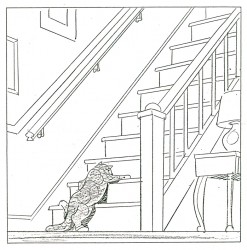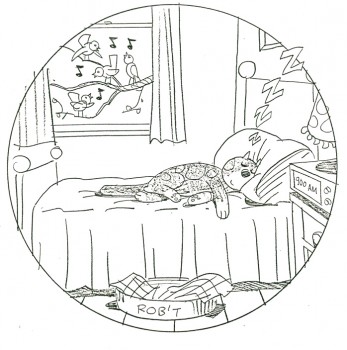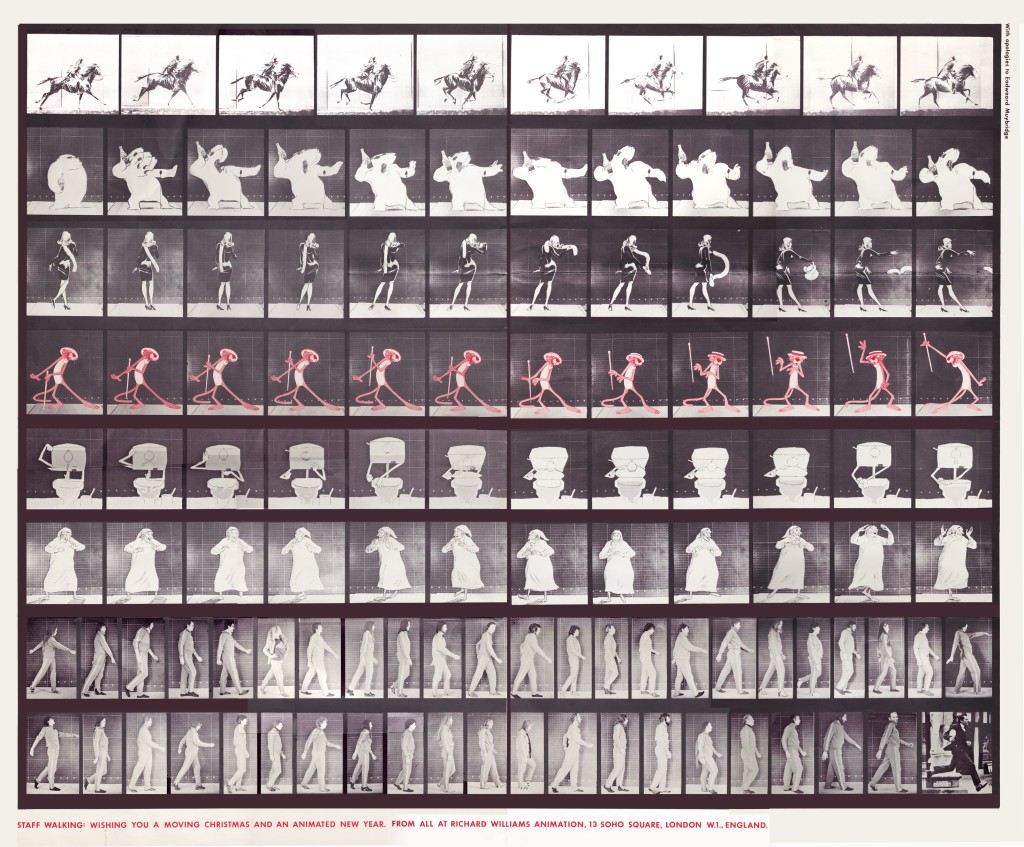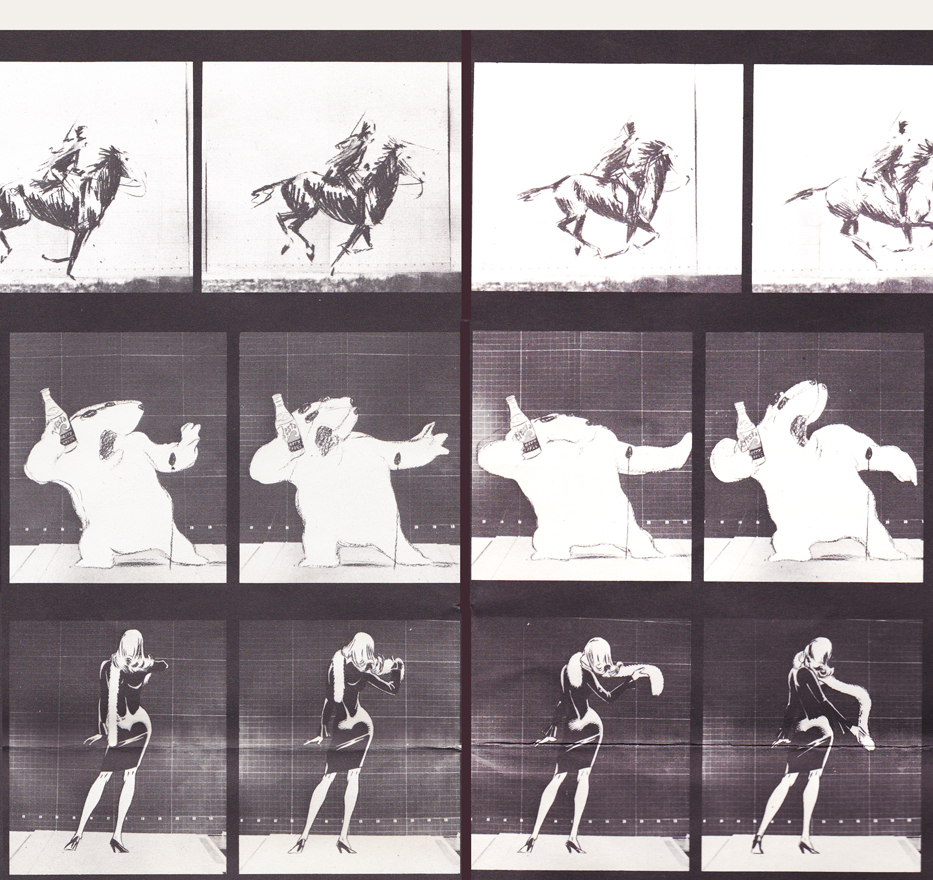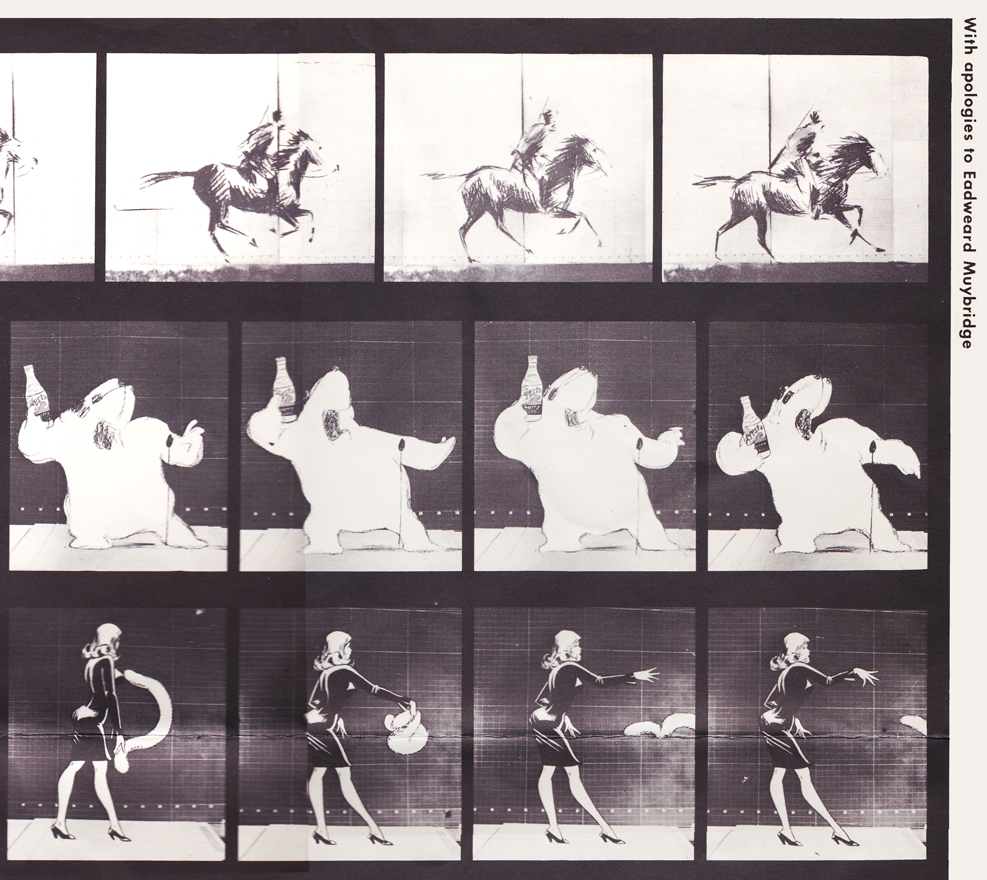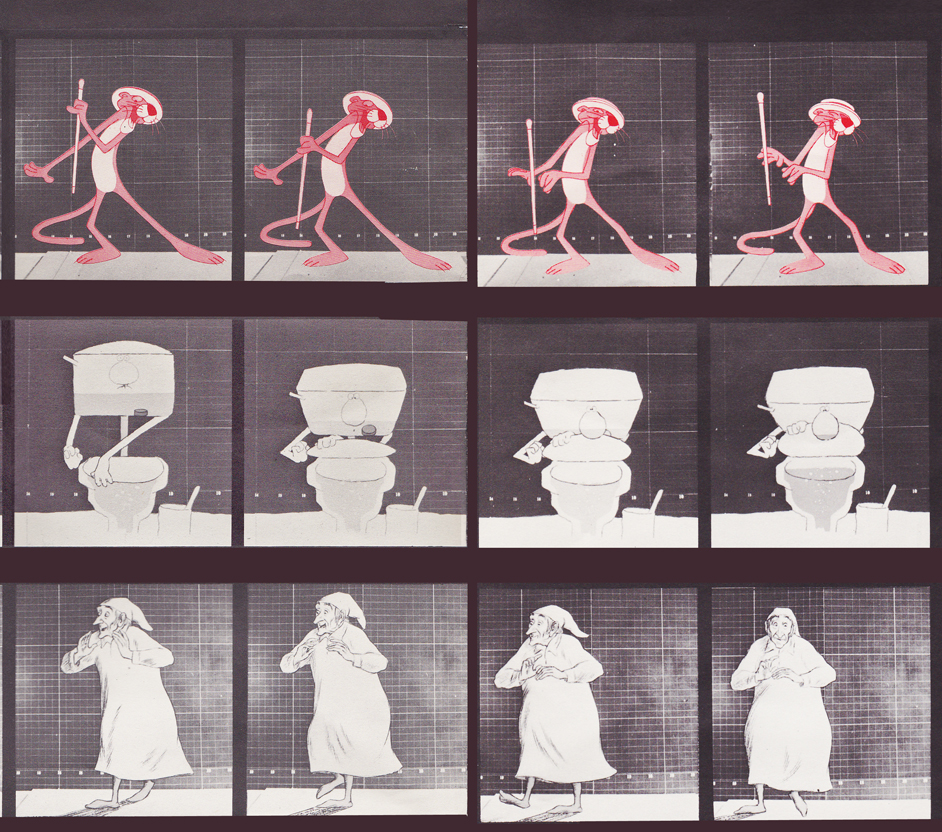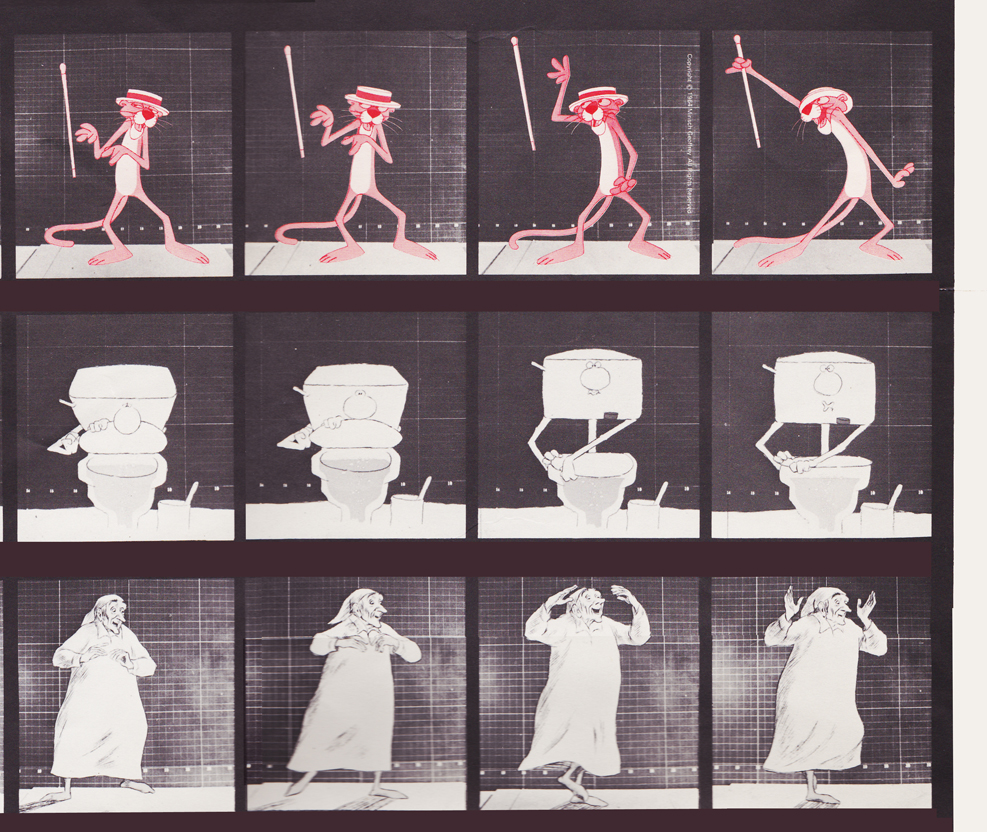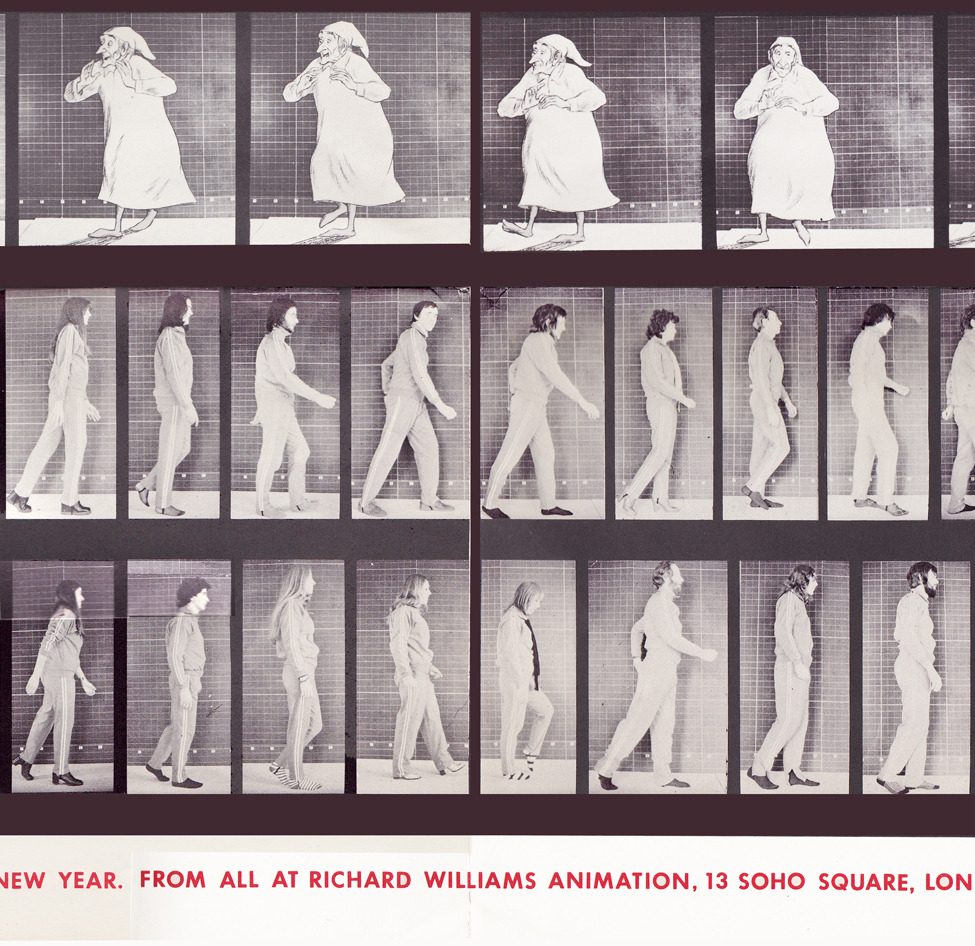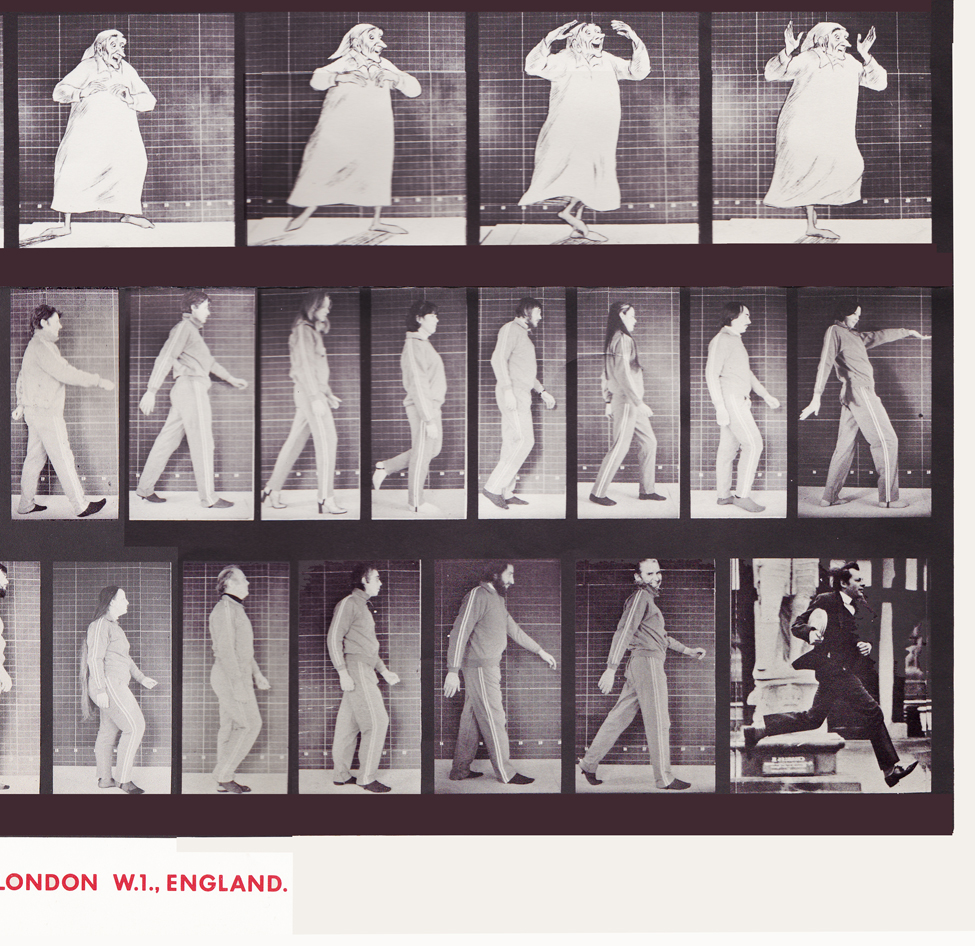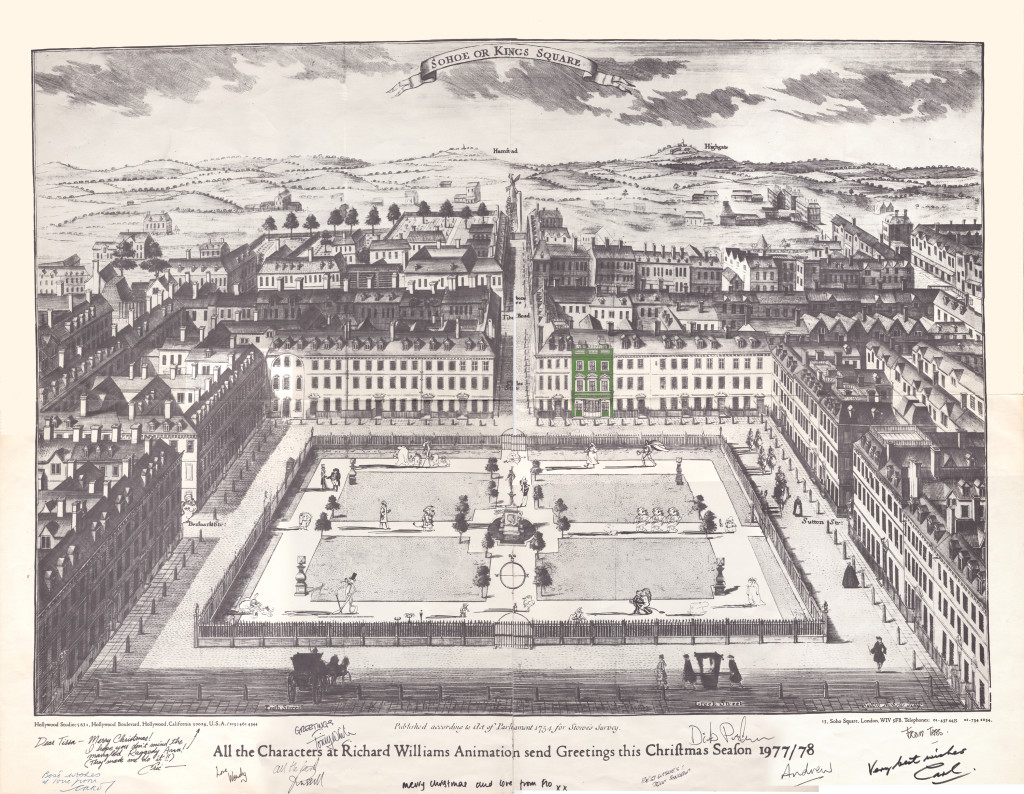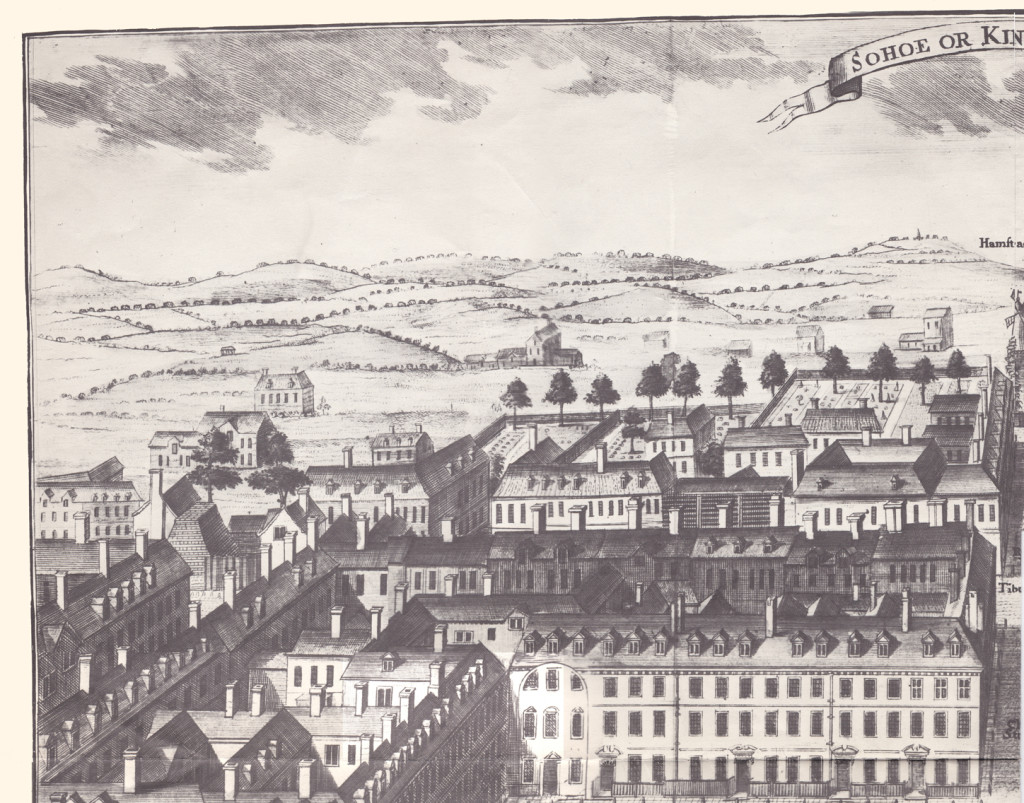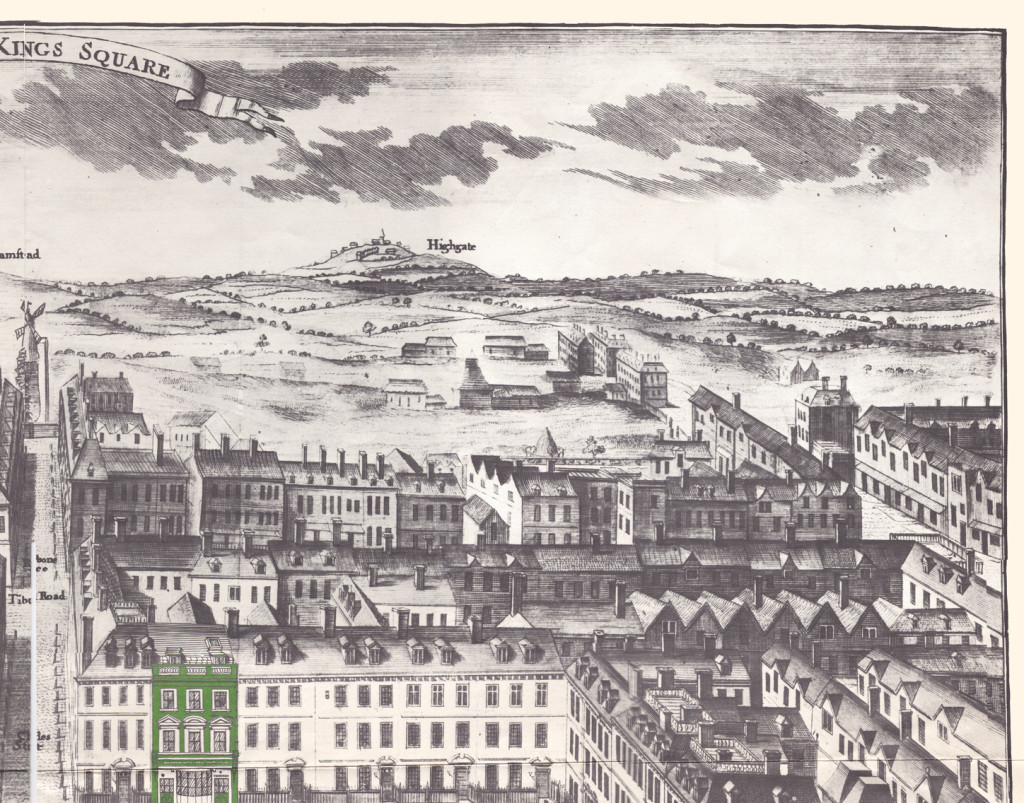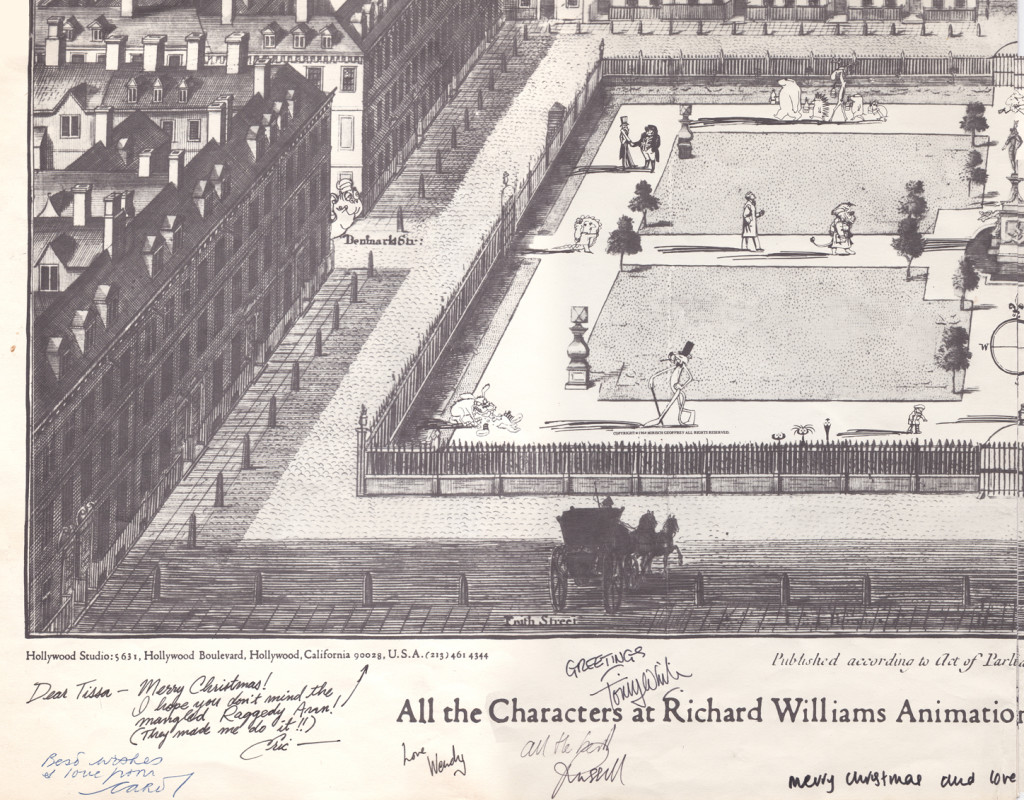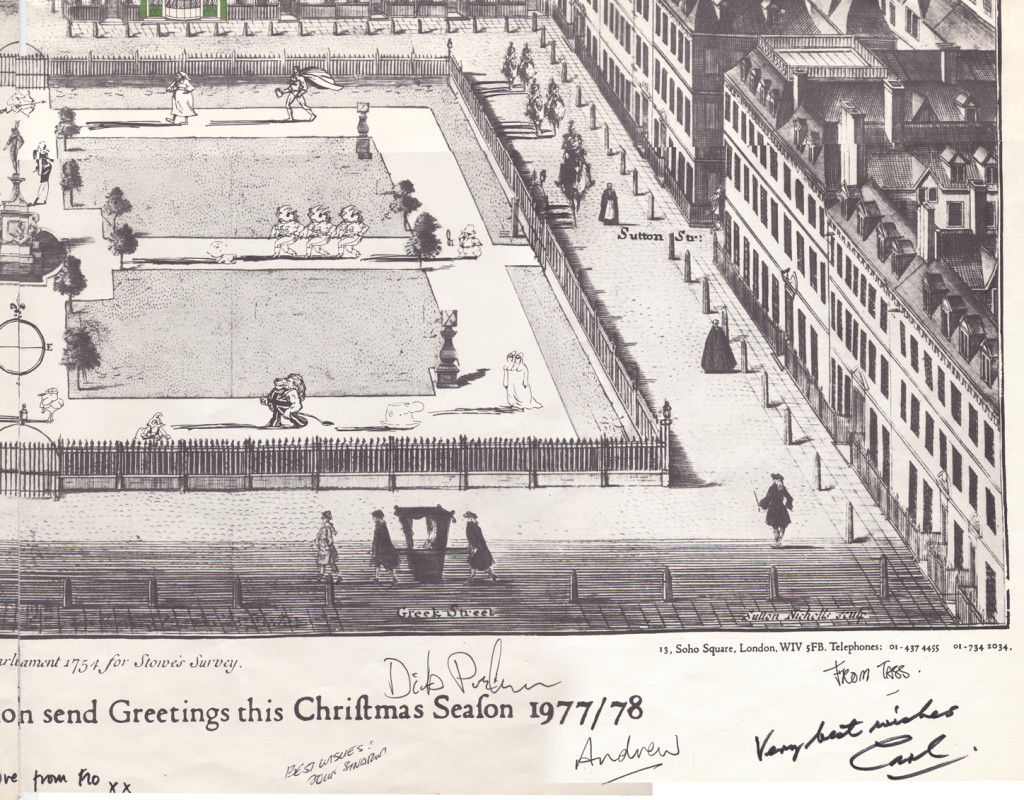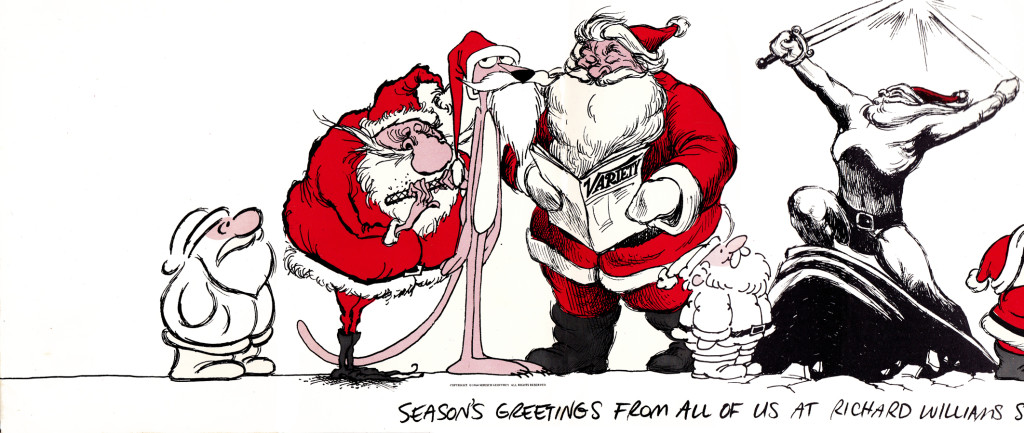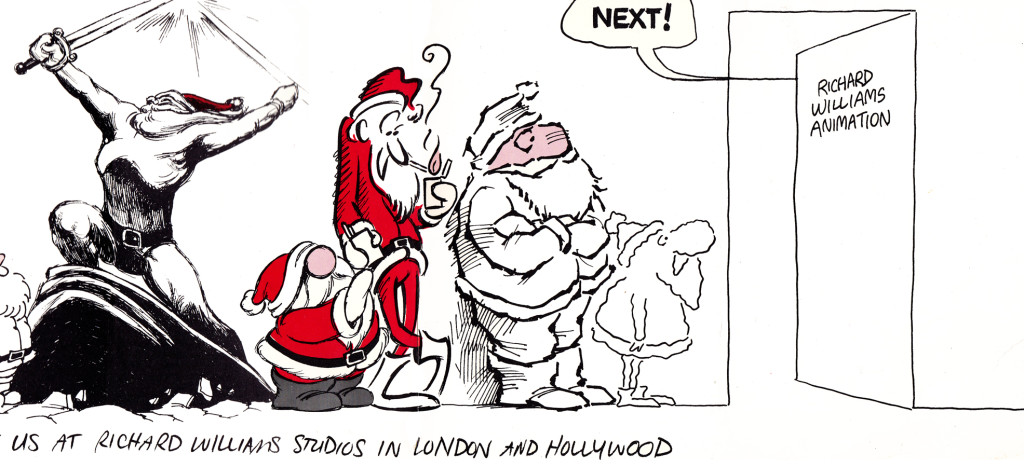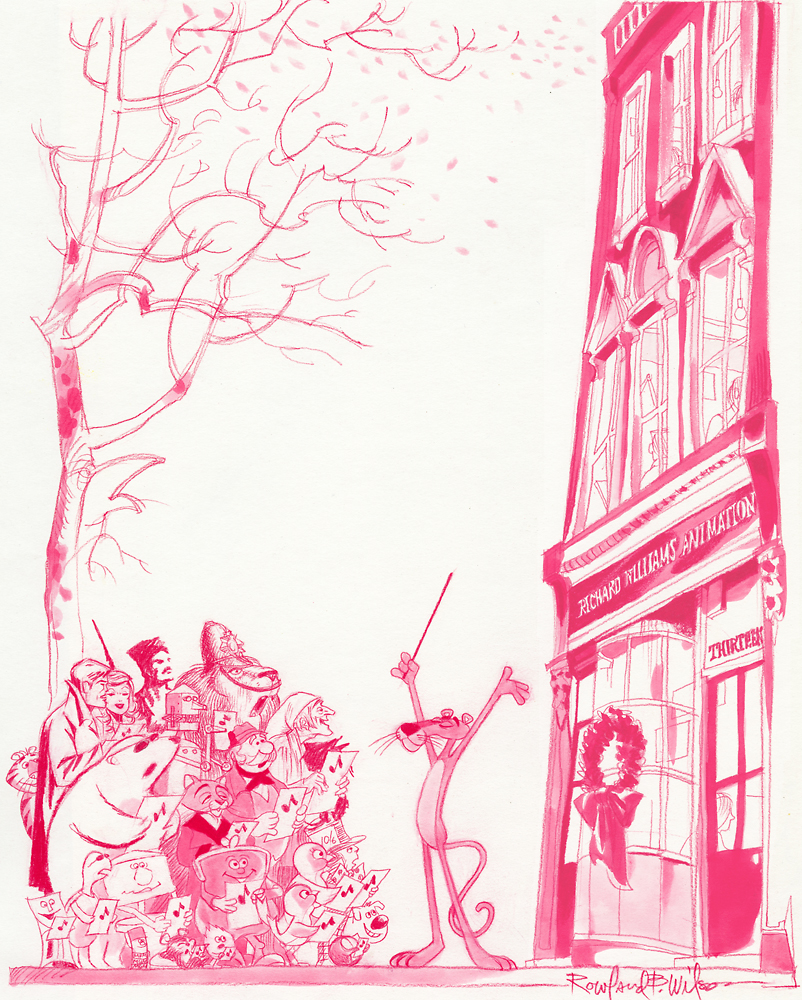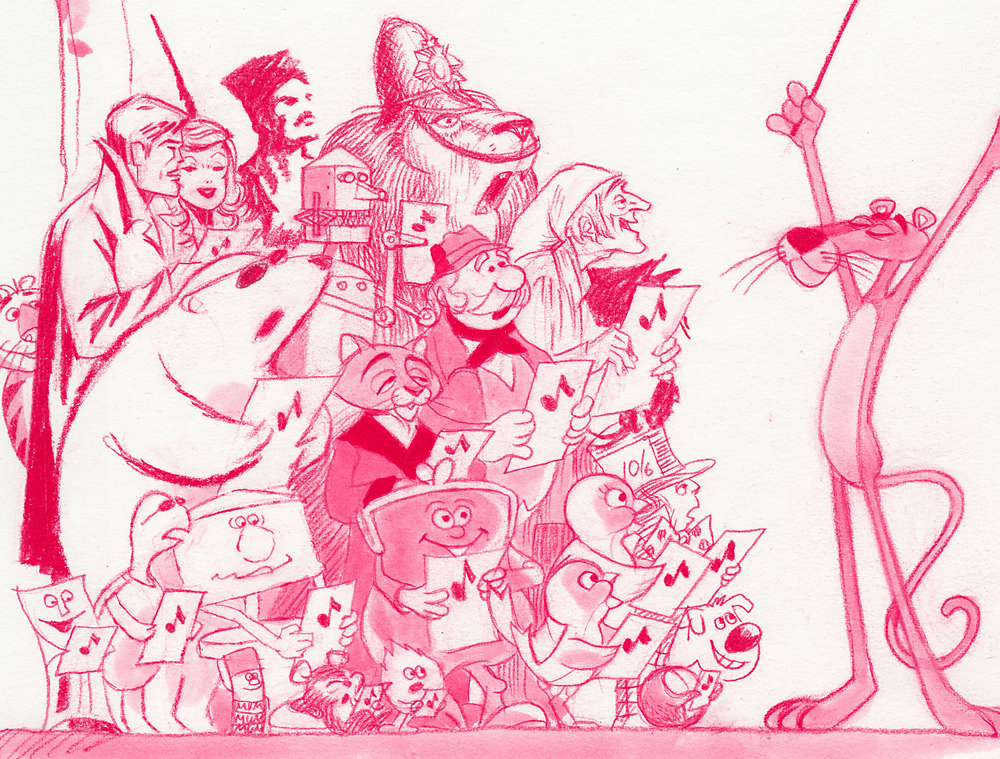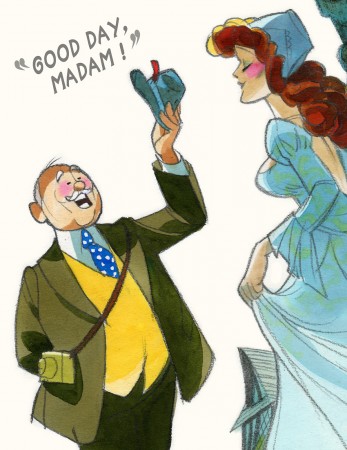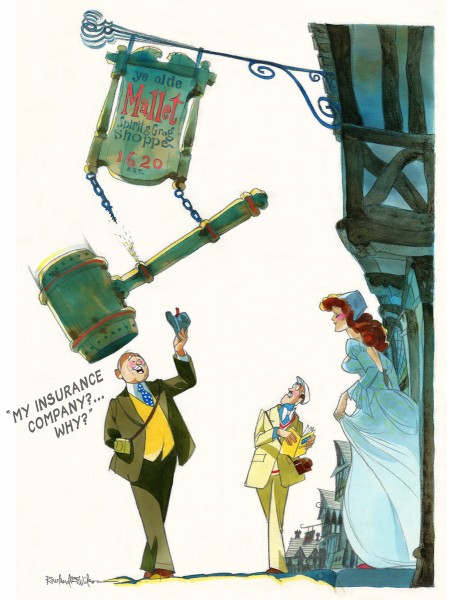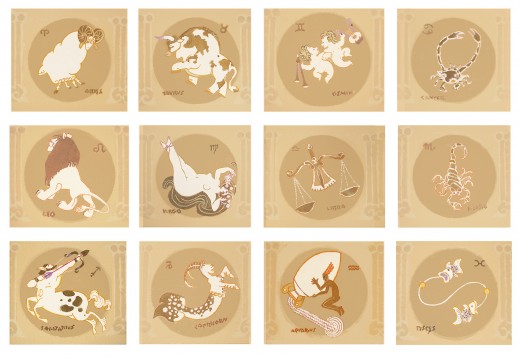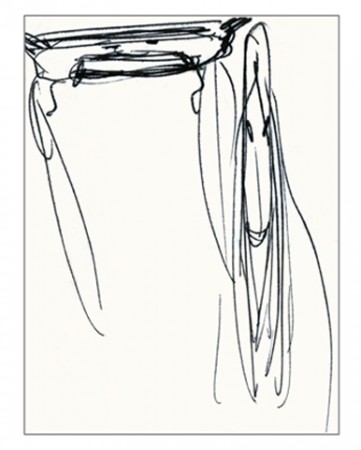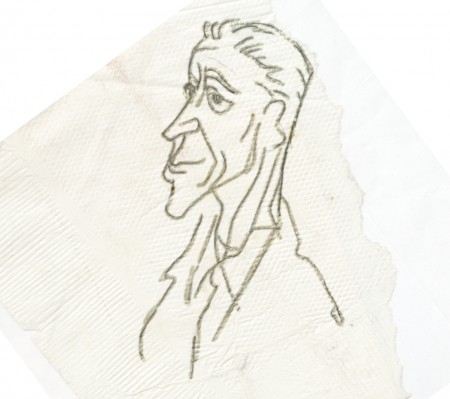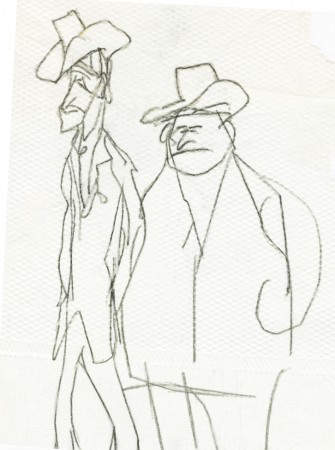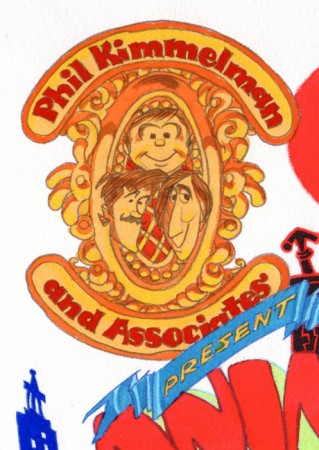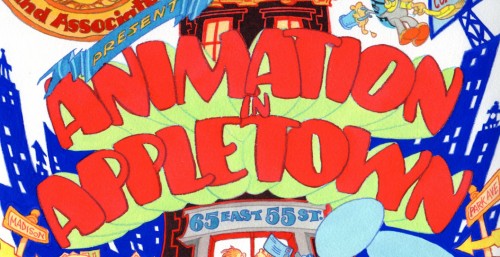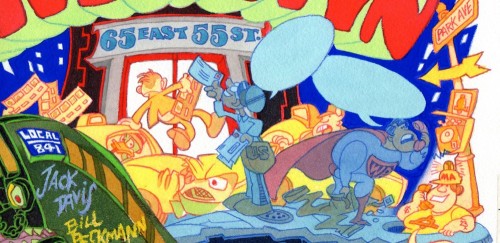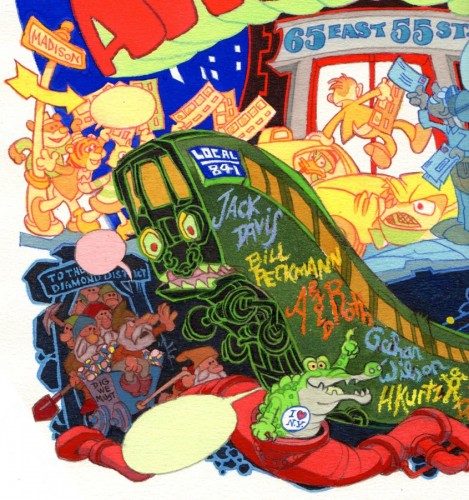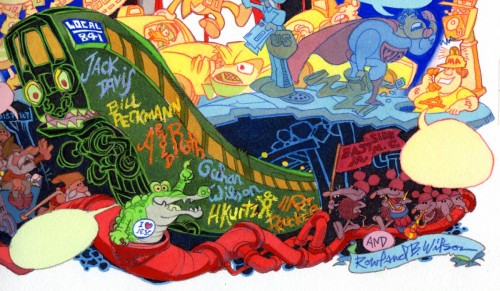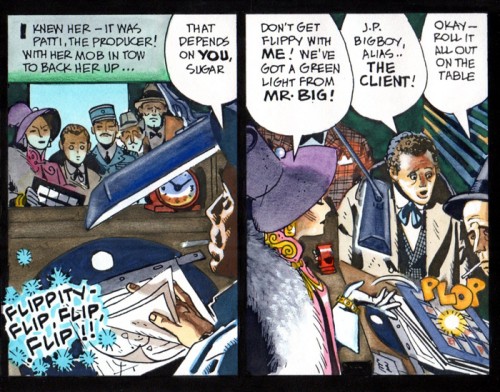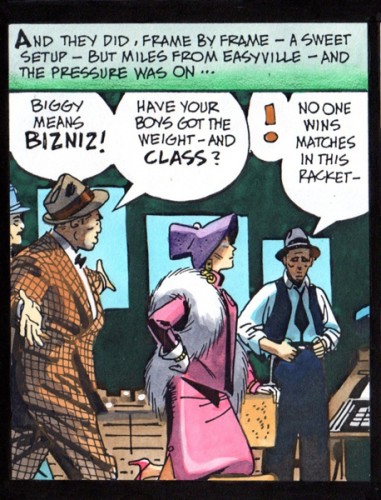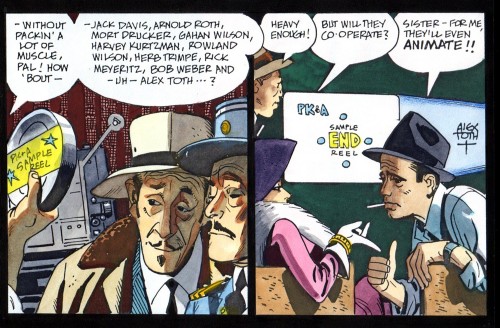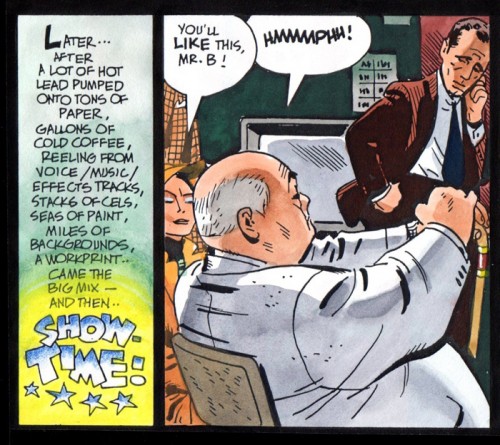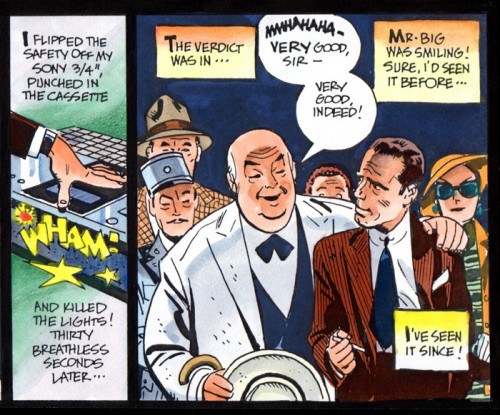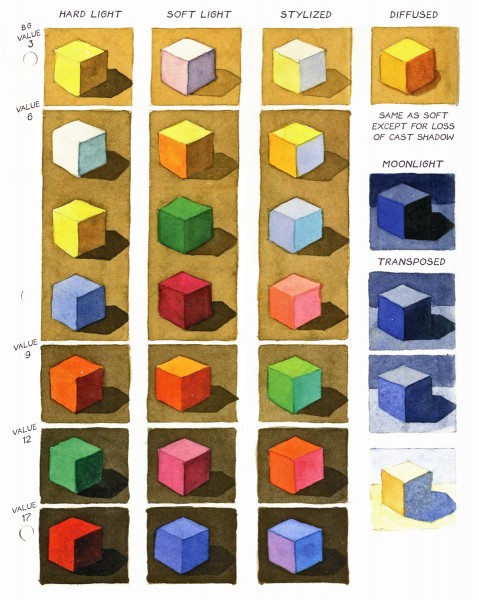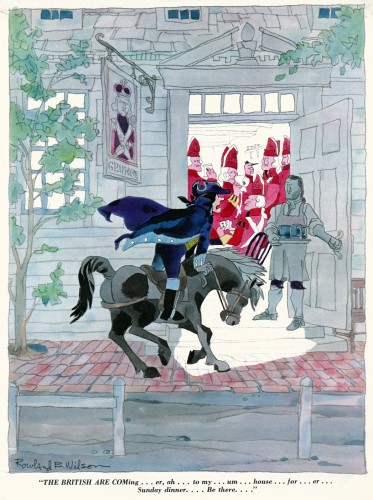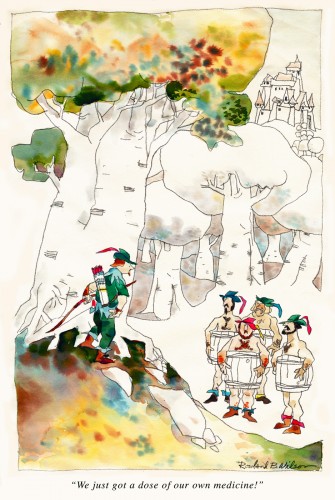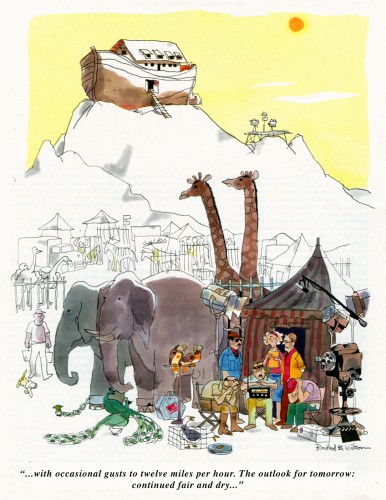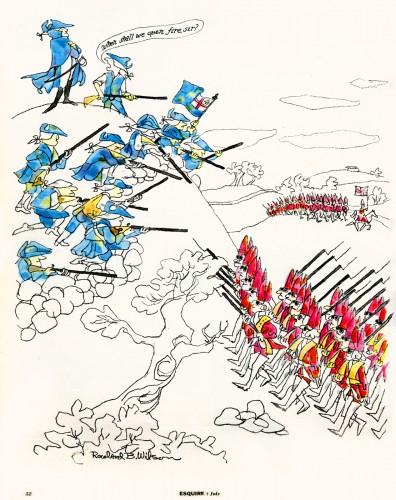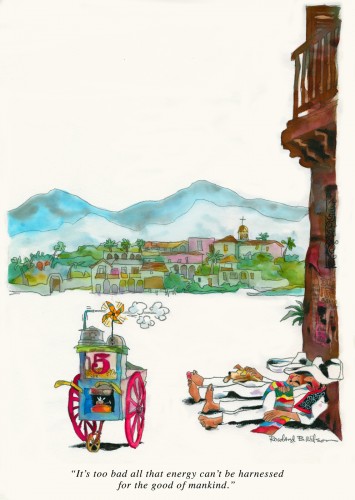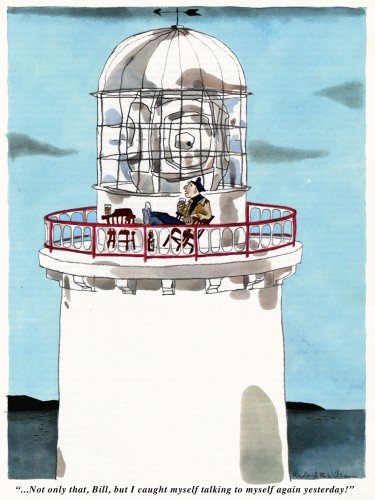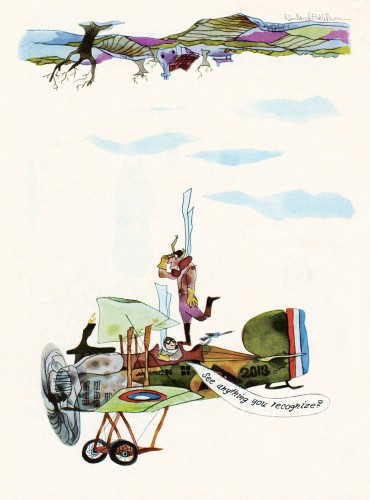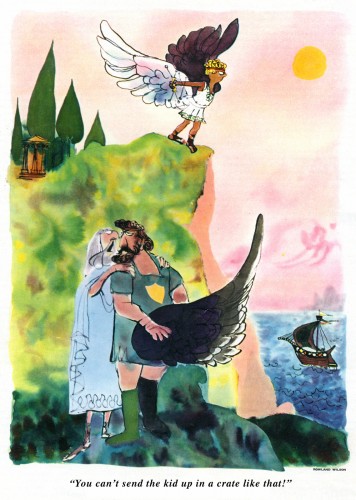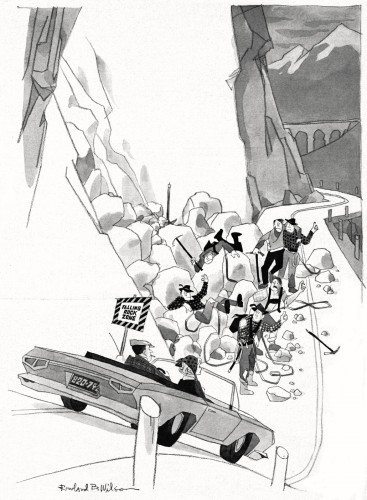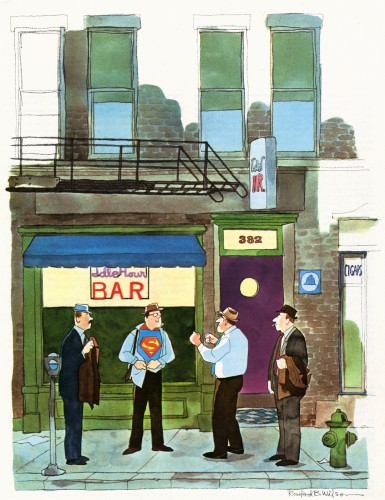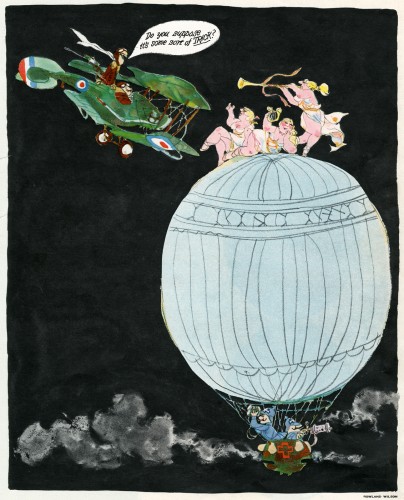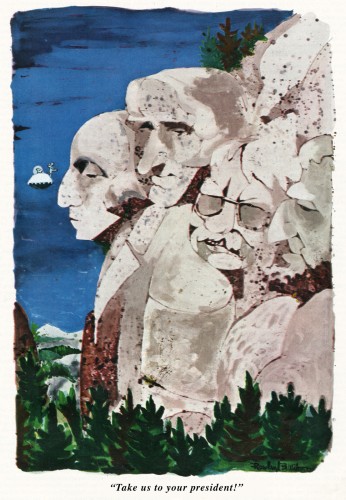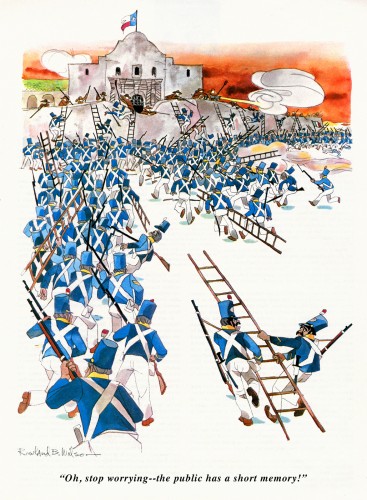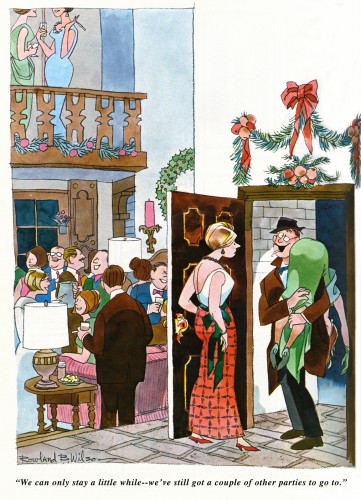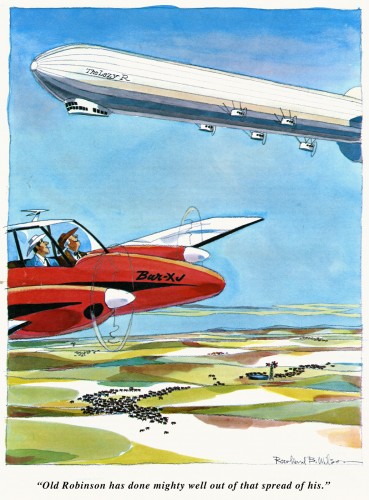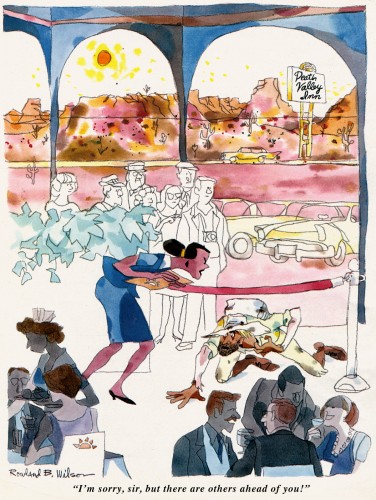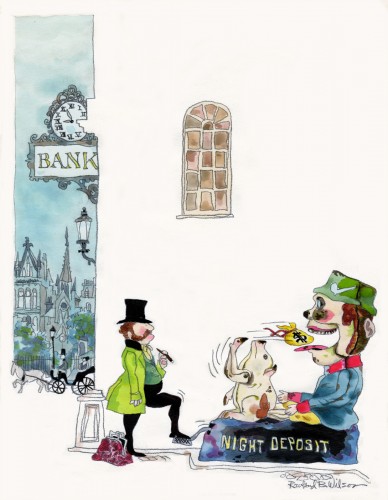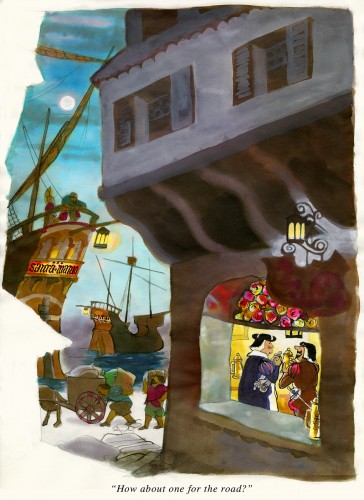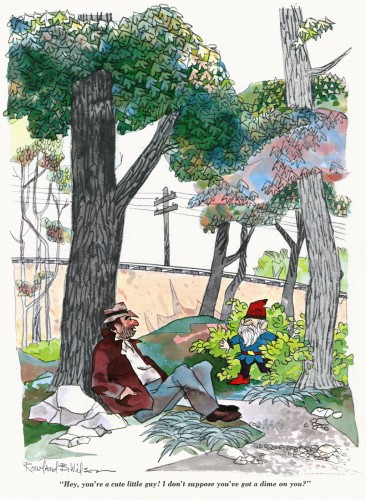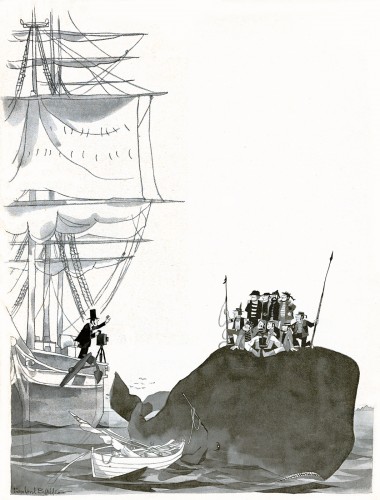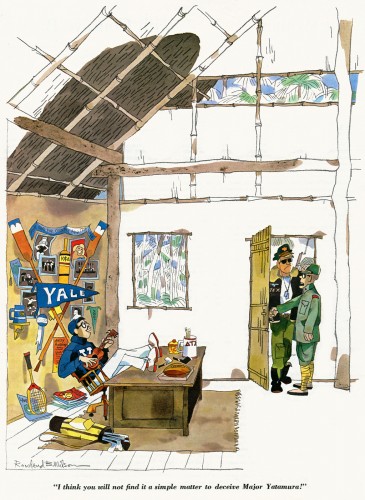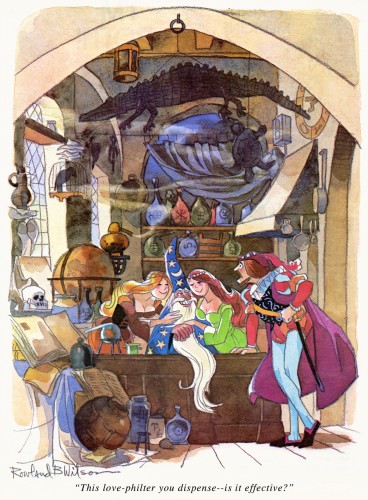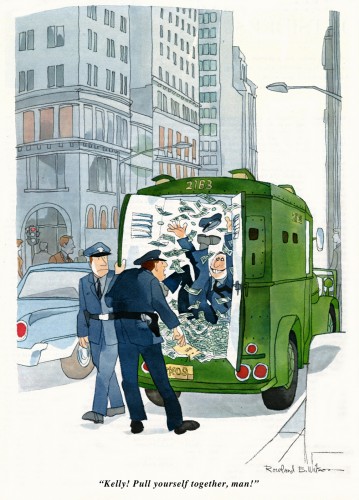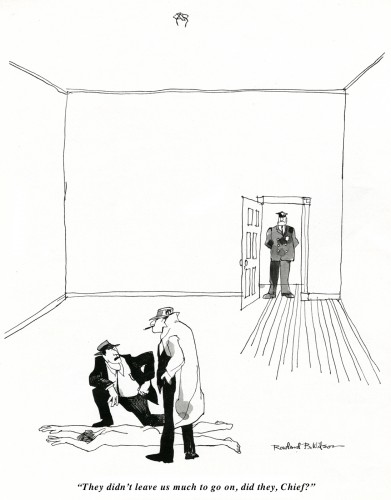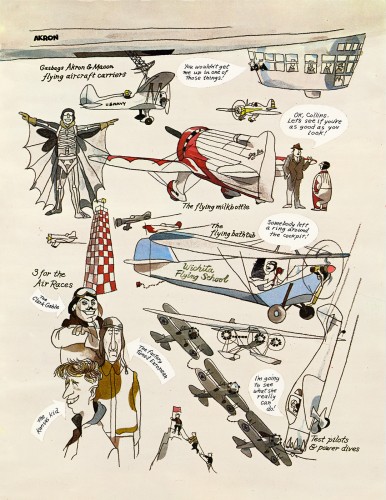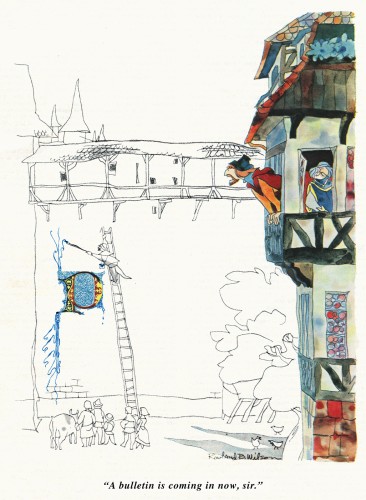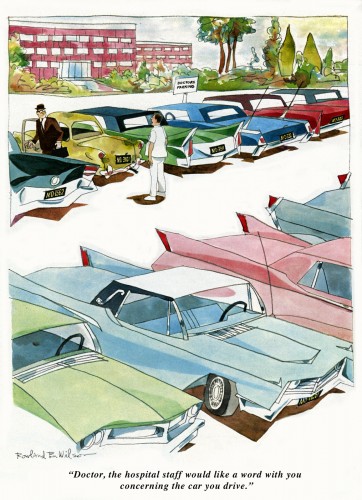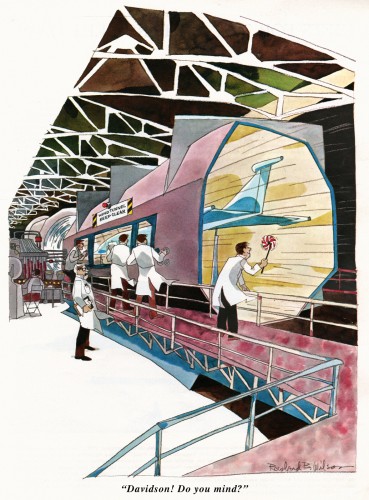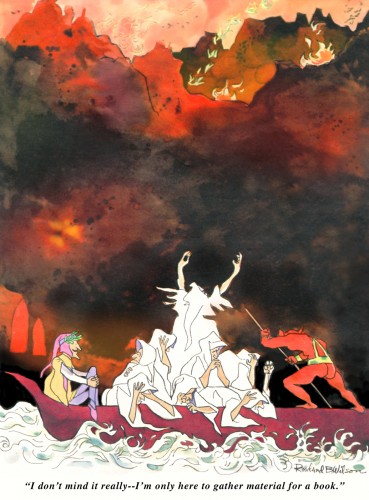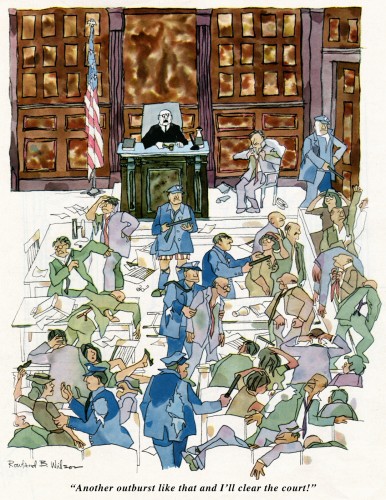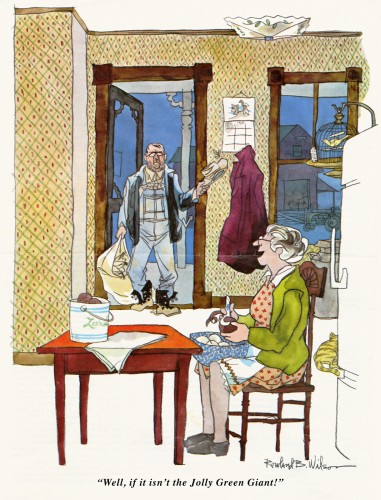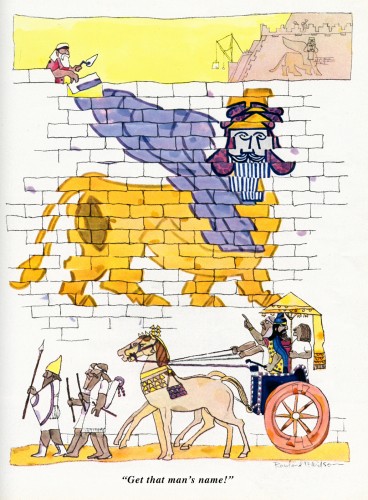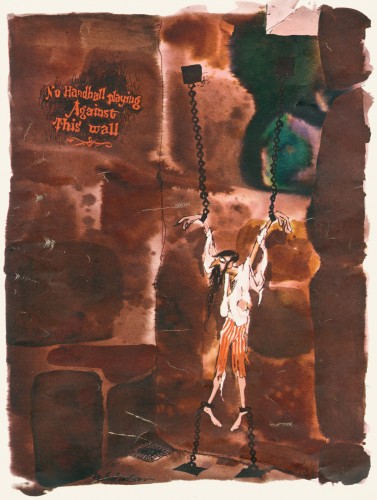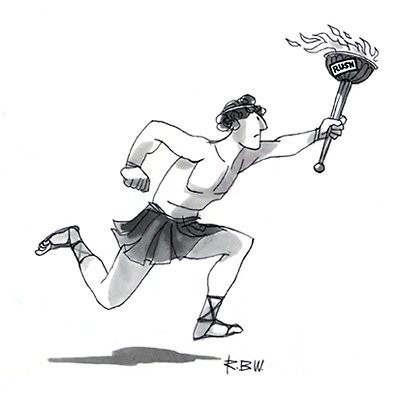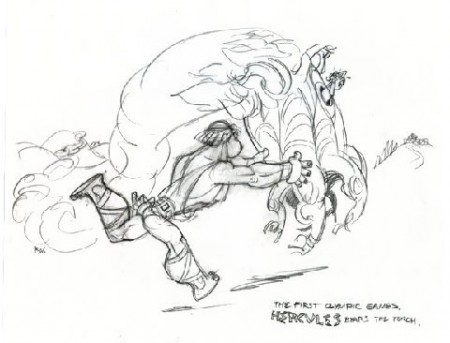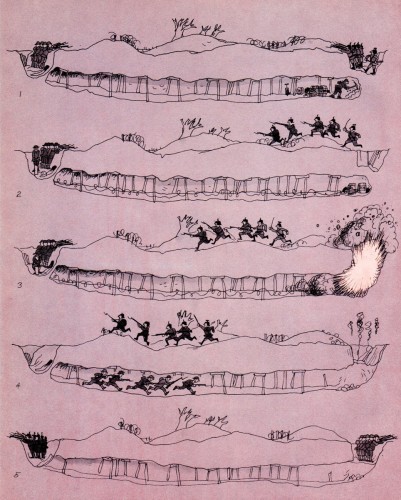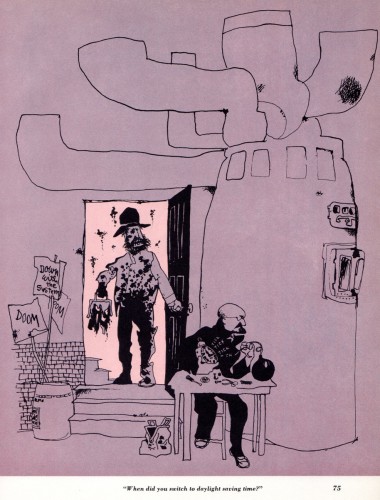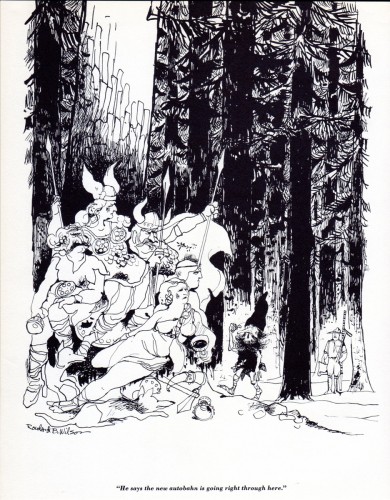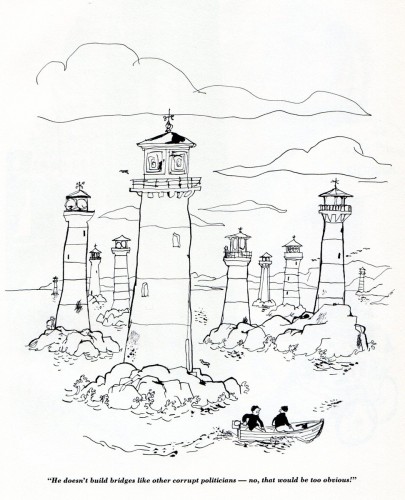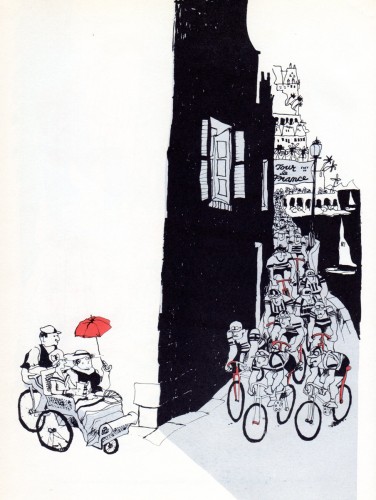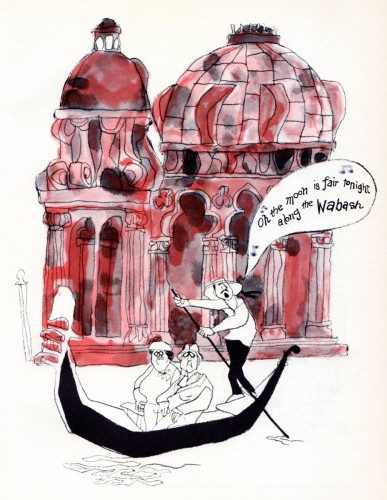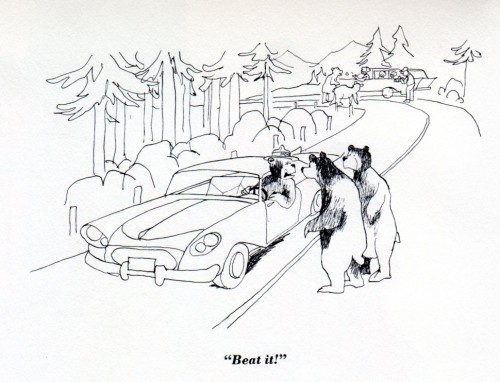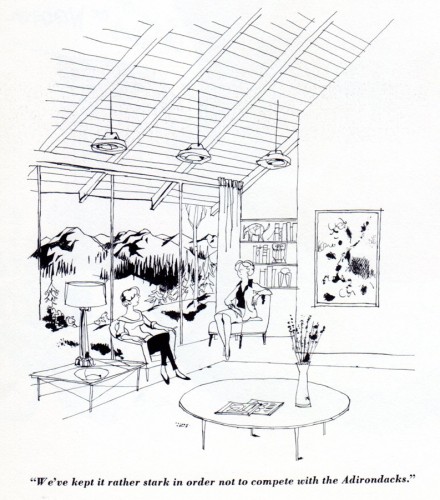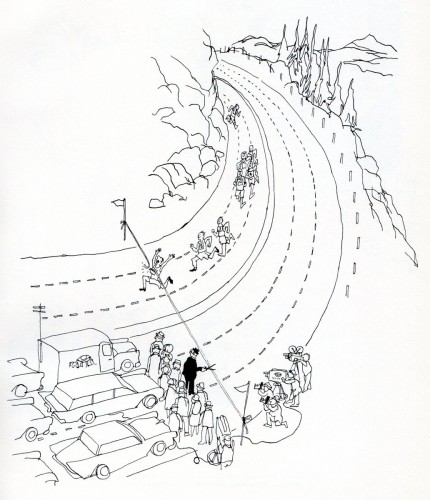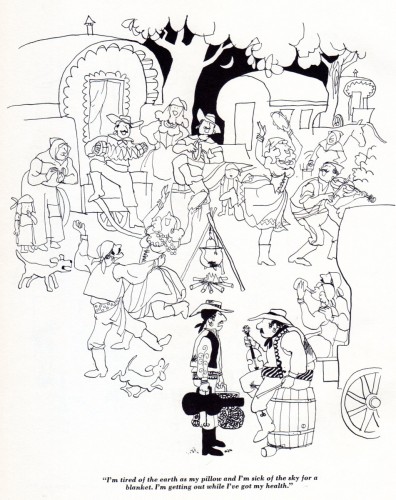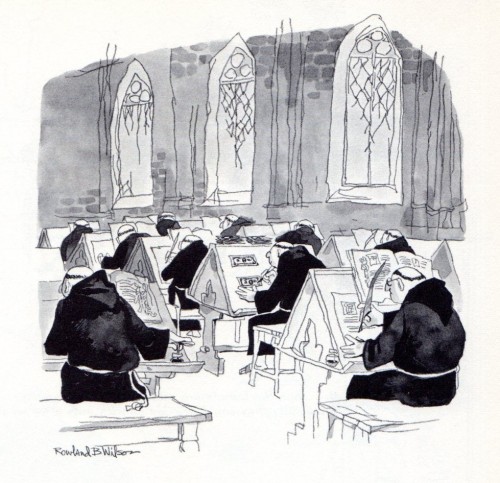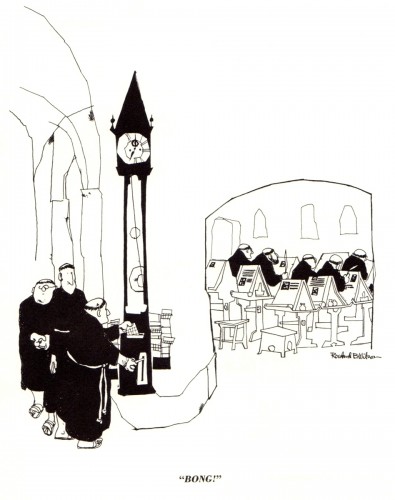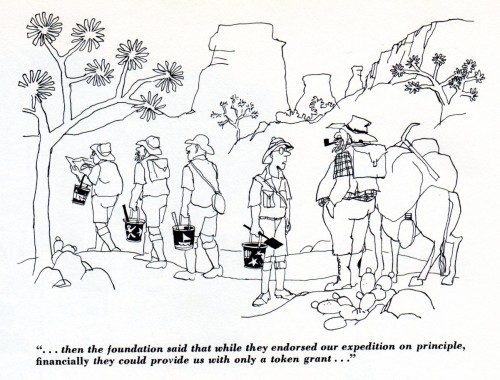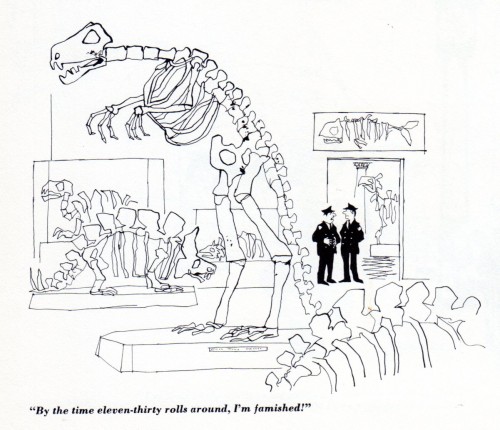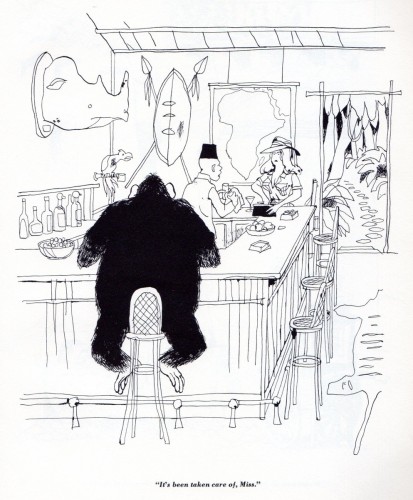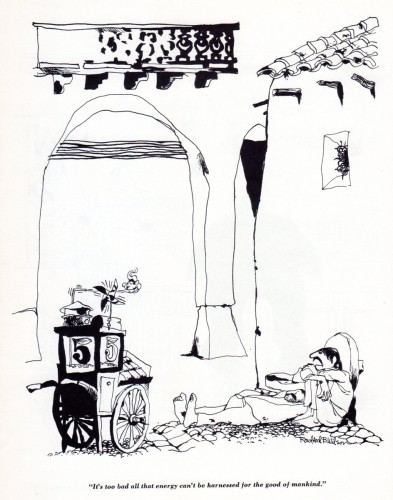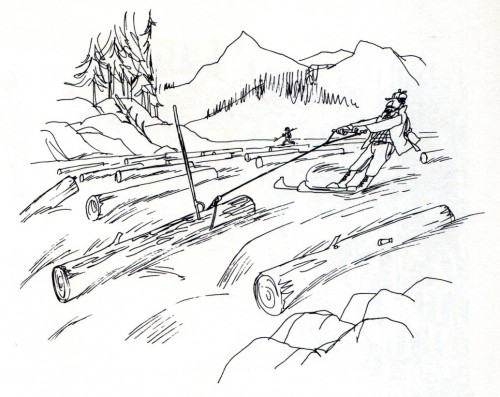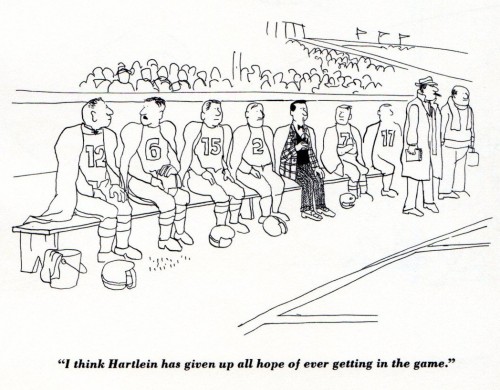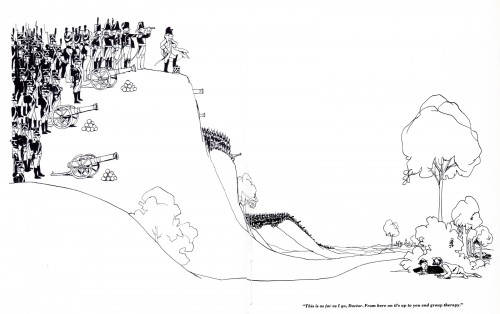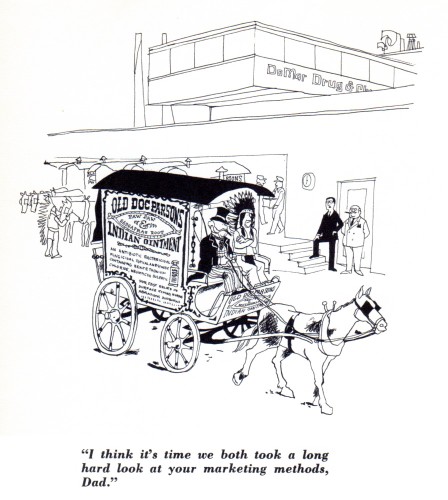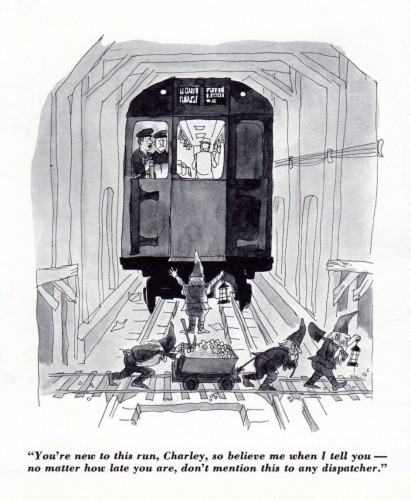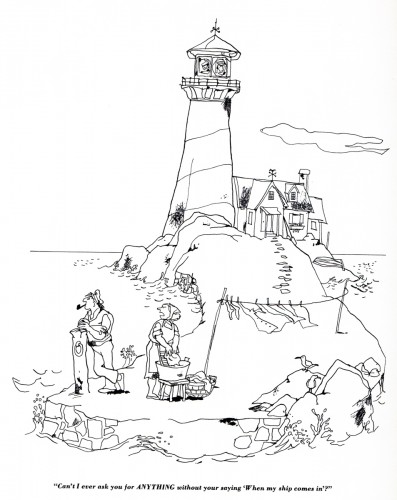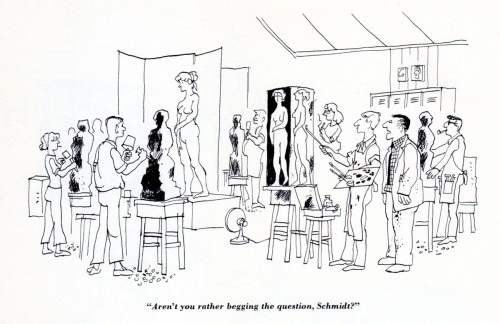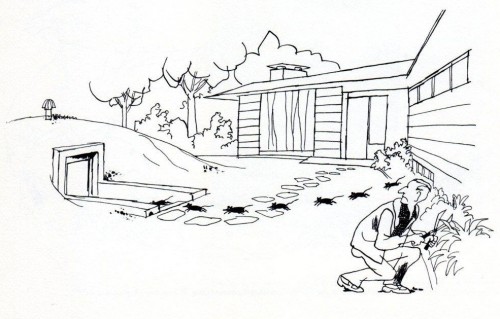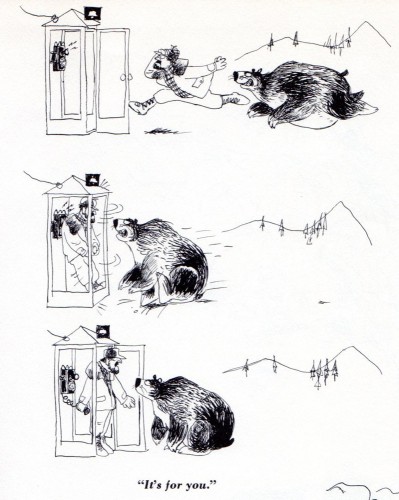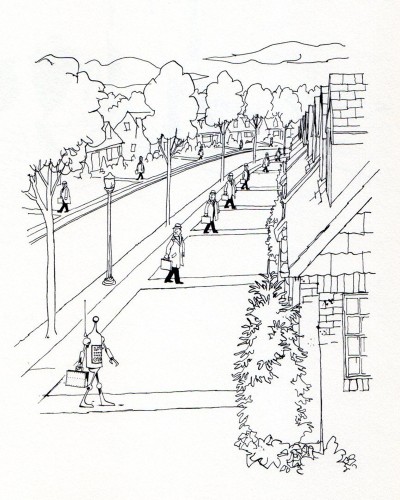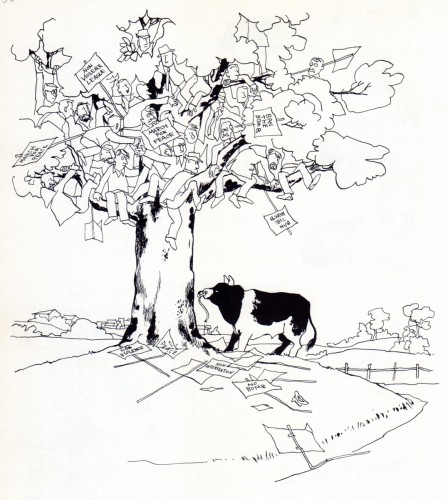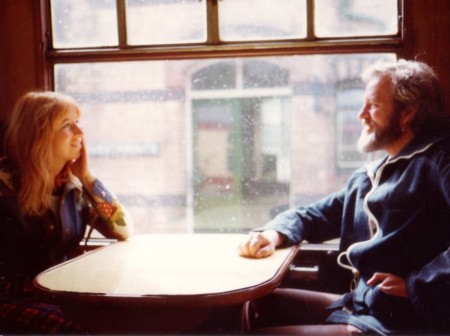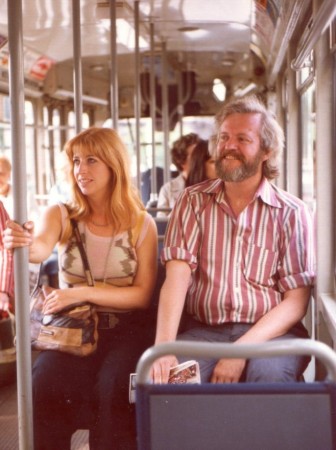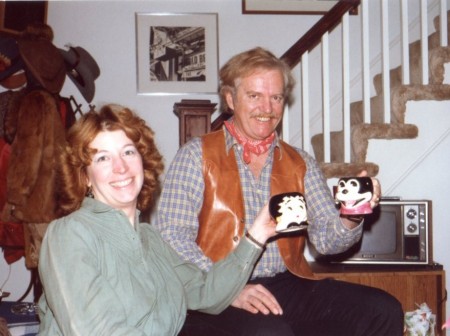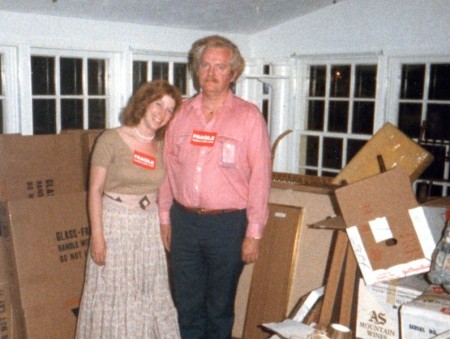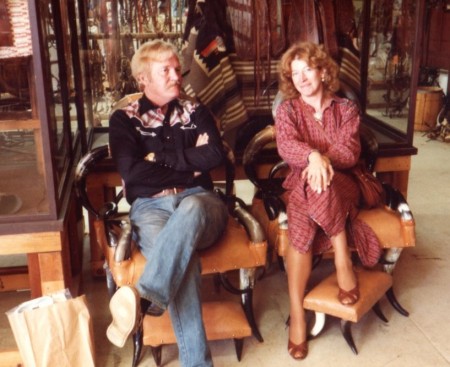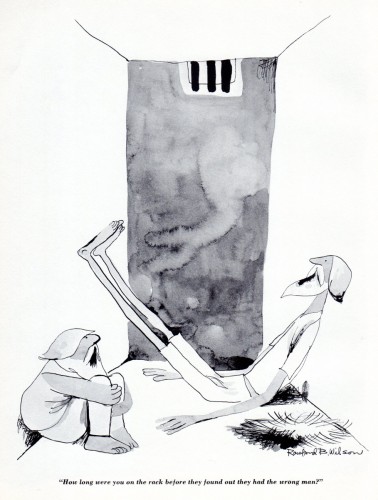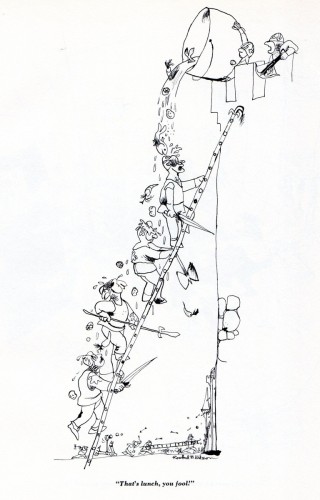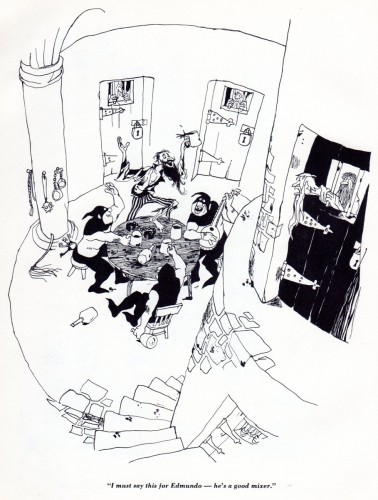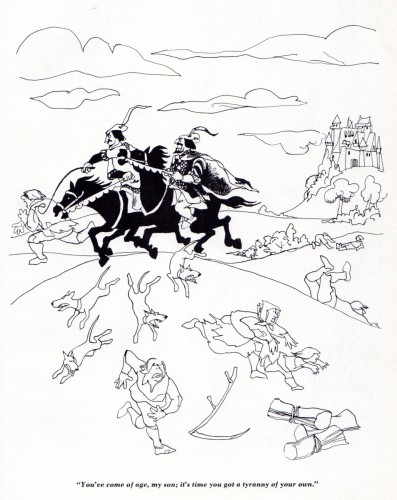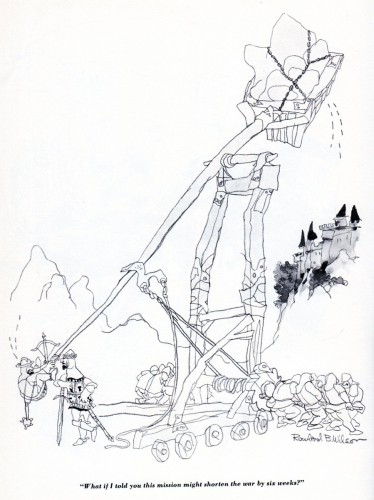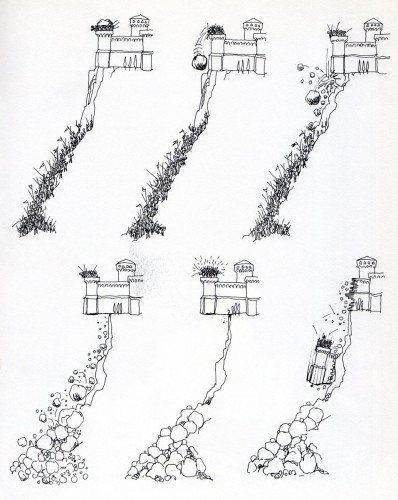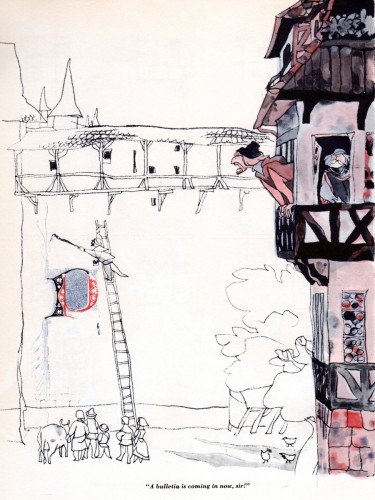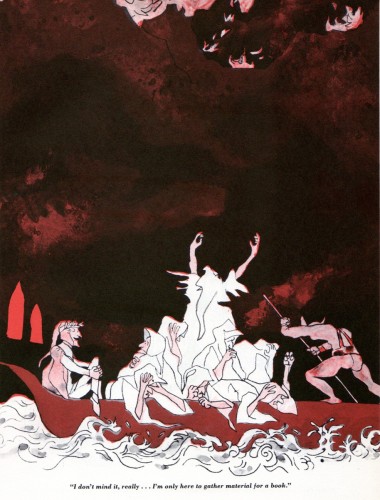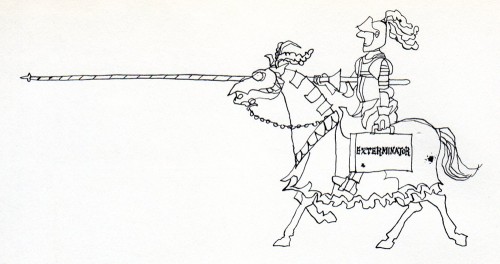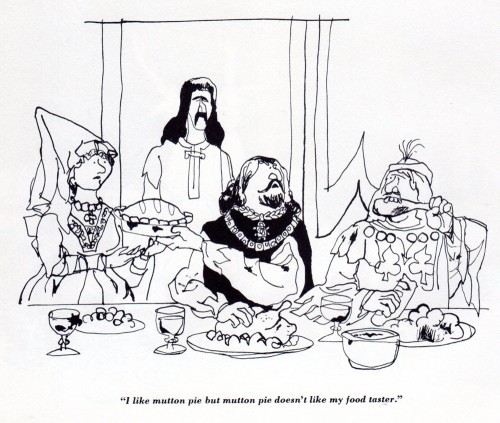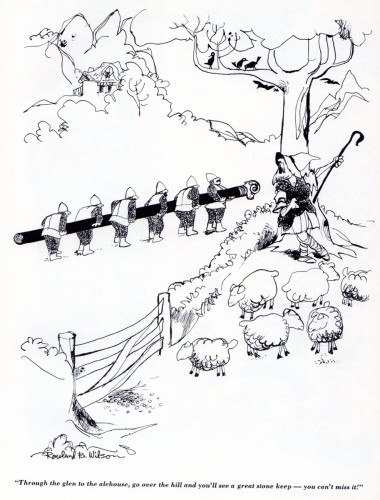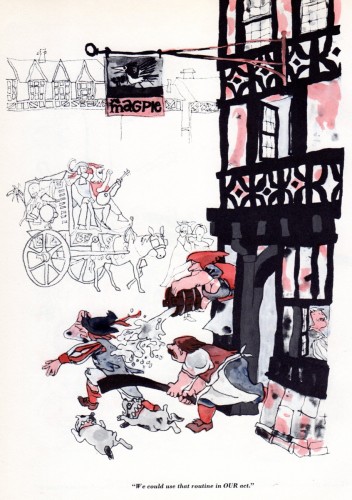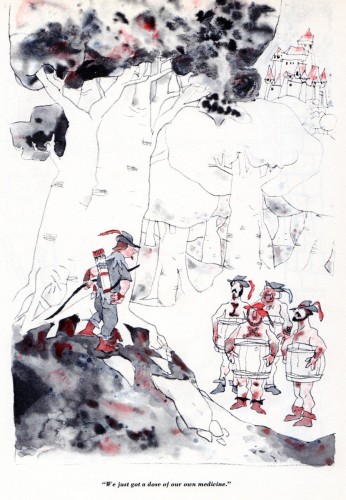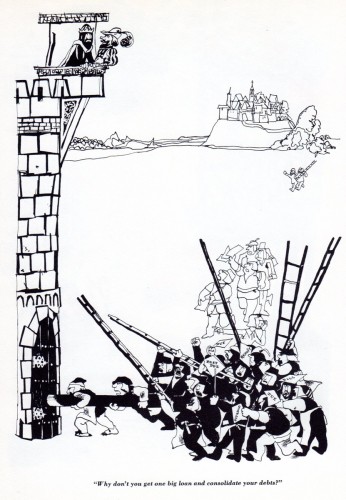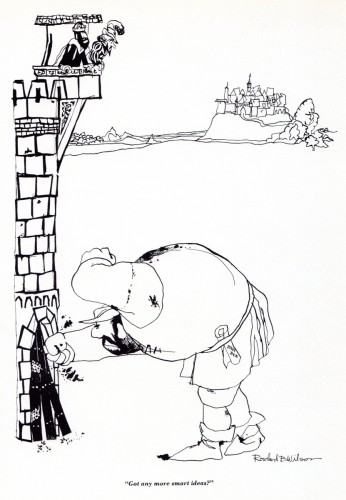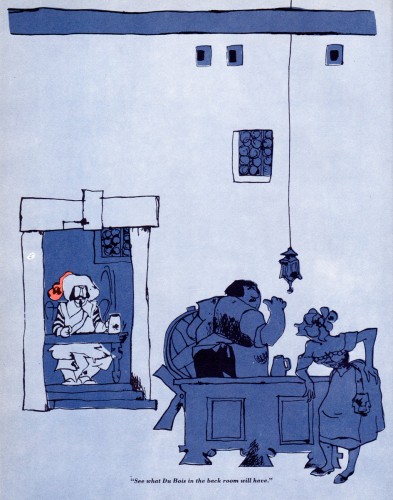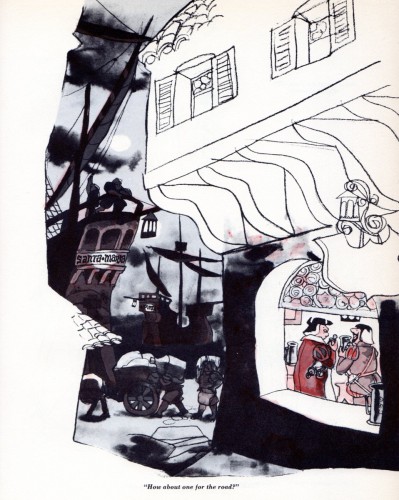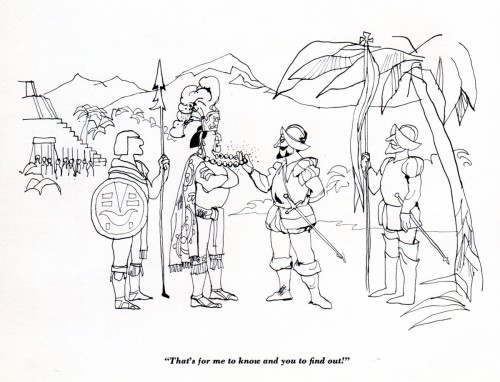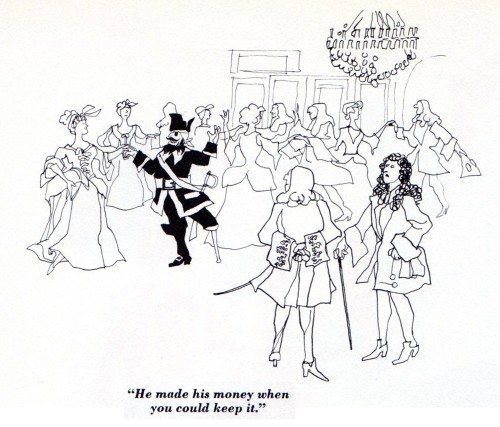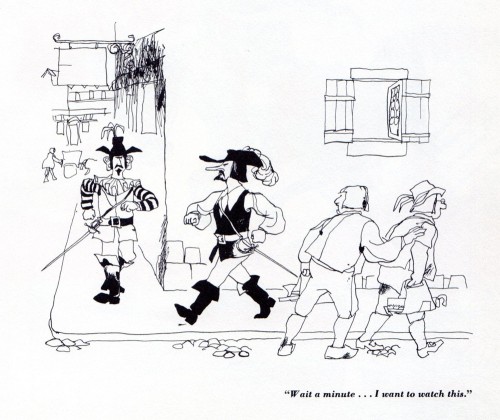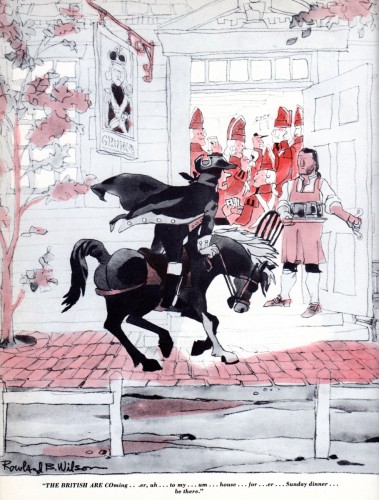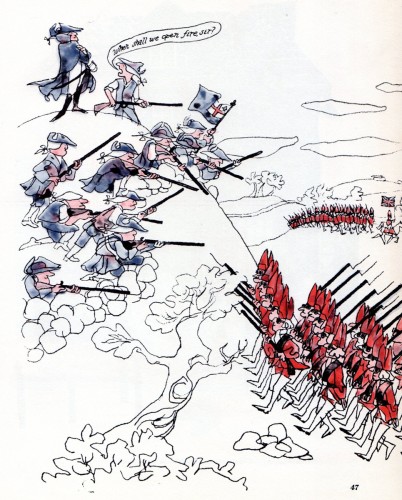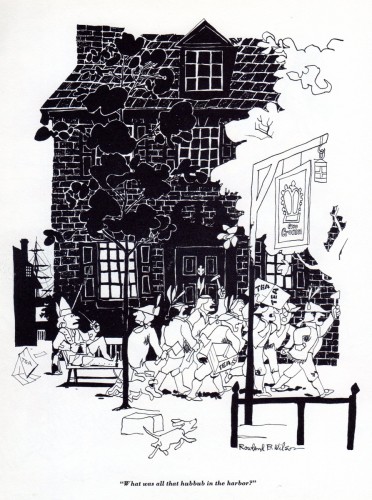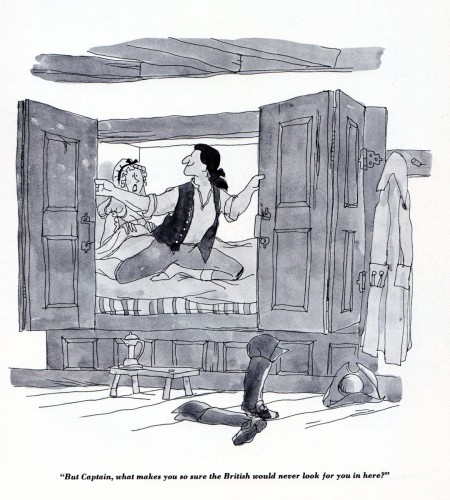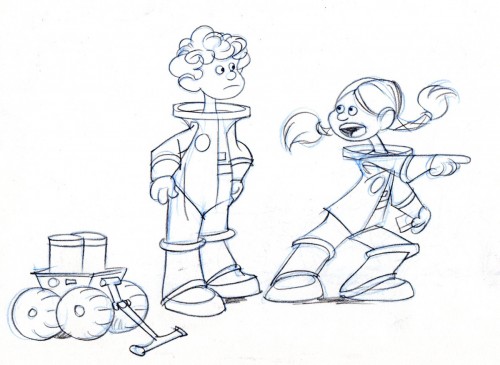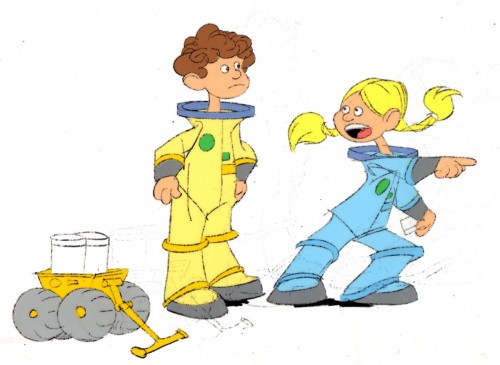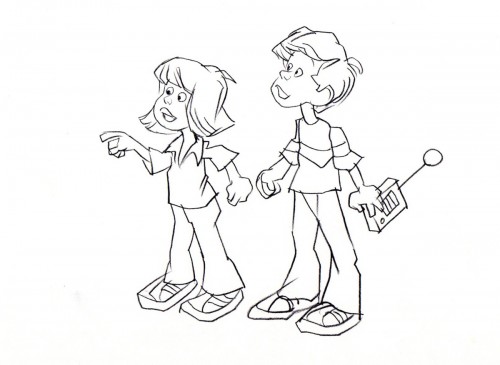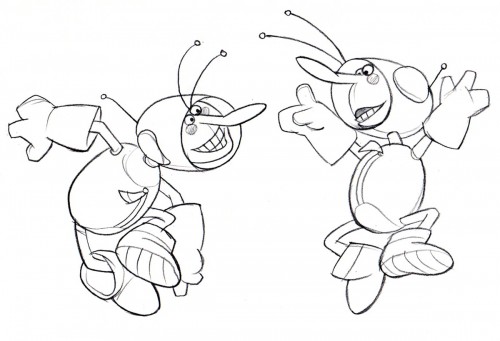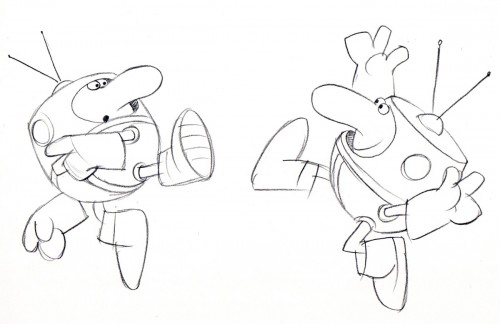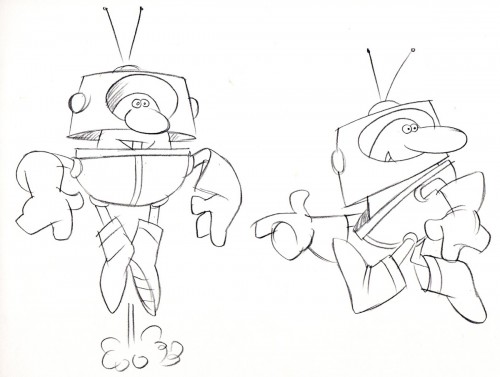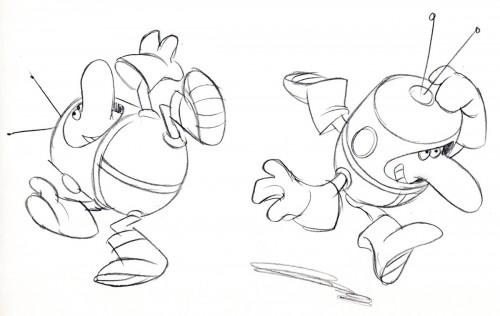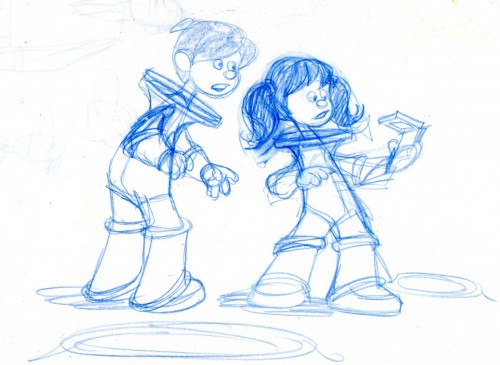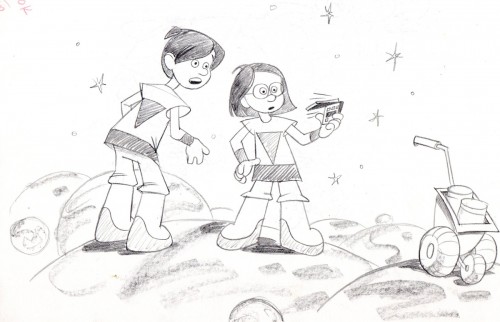Category ArchiveRowland B. Wilson
Action Analysis &Animation &Articles on Animation &Books &Commentary &Disney &Illustration &Richard Williams &Rowland B. Wilson &SpornFilms &Story & Storyboards &Tissa David 10 Jun 2013 03:31 am
Illusions – 3
I’ve written two posts about Frank Thomas and Ollie Johnston‘s book, The Illusion of Life the last couple of weeks. I came to the book only recently and realizing that I’d never really read the book, I thought it was time. So in doing so, I’ve found that I have a lot to write about. The book has come to be accepted almost as gospel, and I decided to give my thoughts.
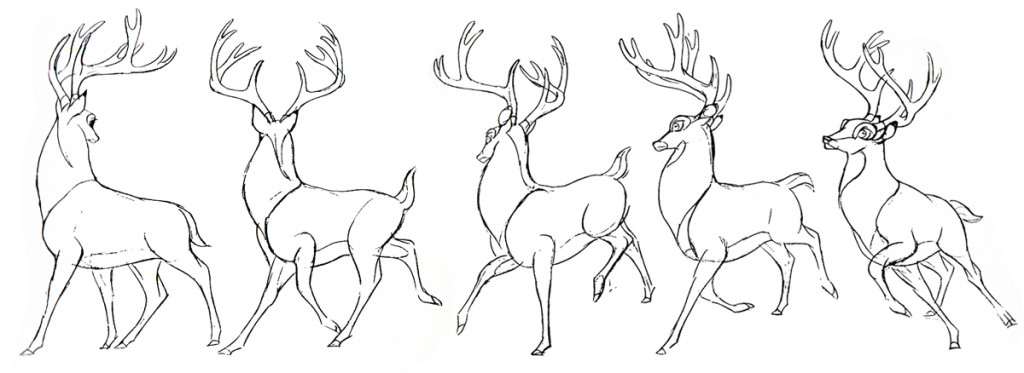
There were two major complaints I’ve had with what I’ve read in their book so far, and I spent quite a bit of time reviewing those.
- First out of the box, I was stunned to read that these two of Disney’s “nine old men” said that they’d originally believed that each prime animator should control one, maybe two characters in the film. Then, later in life they decided that an animator should do an entire scene with all of the characters within it. This is not what I’d seen the two (or the nine) do in actual practice. post 1
Secondly, they argue for animating in a rough format, and they give solid reasons for this. As a matter of fact, it was Disney, himself, in the Thirties who demanded the animators work rough and solid assistants who could draw well back them up. Then much later in the book the two author/animators suggest that it’s better for an animator to work as clean as possible with assistants just doing touch-up. This helped out the Xerox process, but didn’t necessarily help for good animation. post 2
The book starts out sounding like it’s going to be a history of Disney animation, but then starts getting into the rules of animation (squash and stretch, overlapping action and anticipation and all those other goodies) exploiting Disney animation art in demonstration. Soon the book moved into storytelling and how to try to keep the material fresh and interesting. It all becomes a bit obvious, but you keep hoping that some great secret will be revealed by the two masterful oldsters.
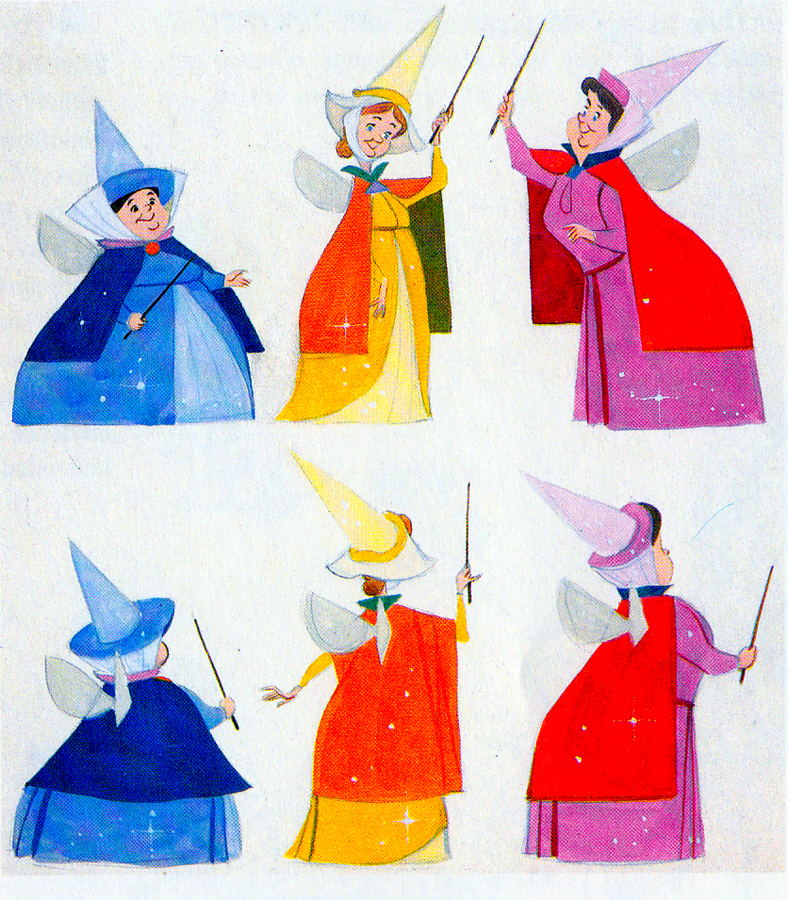 They do go into depth about how to develop characters when making animated films. They offer lots of examples from Orville, the albatross in The Rescuers to the three fairies in Sleeping Beauty, but their greatest attention goes to Baloo the Bear in The Jungle Book. They were having a hard time with this guy; they had been trying to do an Ed Wynn type character, until Walt Disney, himself, suggested Phil Harris. Once they auditioned Harris, they knew they were on the right track, and the character kept grabbing more screen time and grew ever larger. In the end, audiences just loved him.
They do go into depth about how to develop characters when making animated films. They offer lots of examples from Orville, the albatross in The Rescuers to the three fairies in Sleeping Beauty, but their greatest attention goes to Baloo the Bear in The Jungle Book. They were having a hard time with this guy; they had been trying to do an Ed Wynn type character, until Walt Disney, himself, suggested Phil Harris. Once they auditioned Harris, they knew they were on the right track, and the character kept grabbing more screen time and grew ever larger. In the end, audiences just loved him.
Personally, I’ve always hated Phil Harris’ performance in this film. What was it doing in Rudyard Kipling’s book? When I was a kid, Harris and Louis Prima were the perfect examples of my father’s entertainers. He loved these guys and spent a lot of time in front of the family TV watching the Dinah Shore Show______Tom Oreb designs for Sleeping Beauty.
and other such entertaining Variety Shows with
lots of little 50′s big-band jazz-type acts. I hated it; this was my parent’s kind of music and humor and had nothing to do with me. I was the kid who paid his quarter to see the Walt Disney movies (that was the children’s price of admission in 1959.)
In their book they say they knew he was perfect because generations of kids later (who have no idea who Phil Harris was) still take joy from Baloo. What they forgot is what I knew all along. This was The Jungle Book. If they had been truly creative, they would have developed a character in line with Kipling’s material that would have been an original, not an impersonation of Doobey Doobey Doo, Phil Harris. The same is true of Louis Prima as a monkey. (There was a time when Disney said that they should never animate monkeys because monkeys are funny on their own, in real life. Animation wouldn’t make them funnier.) Sebastian Cabot, as Bagheera, works as does George Sanders as Shere Khan.
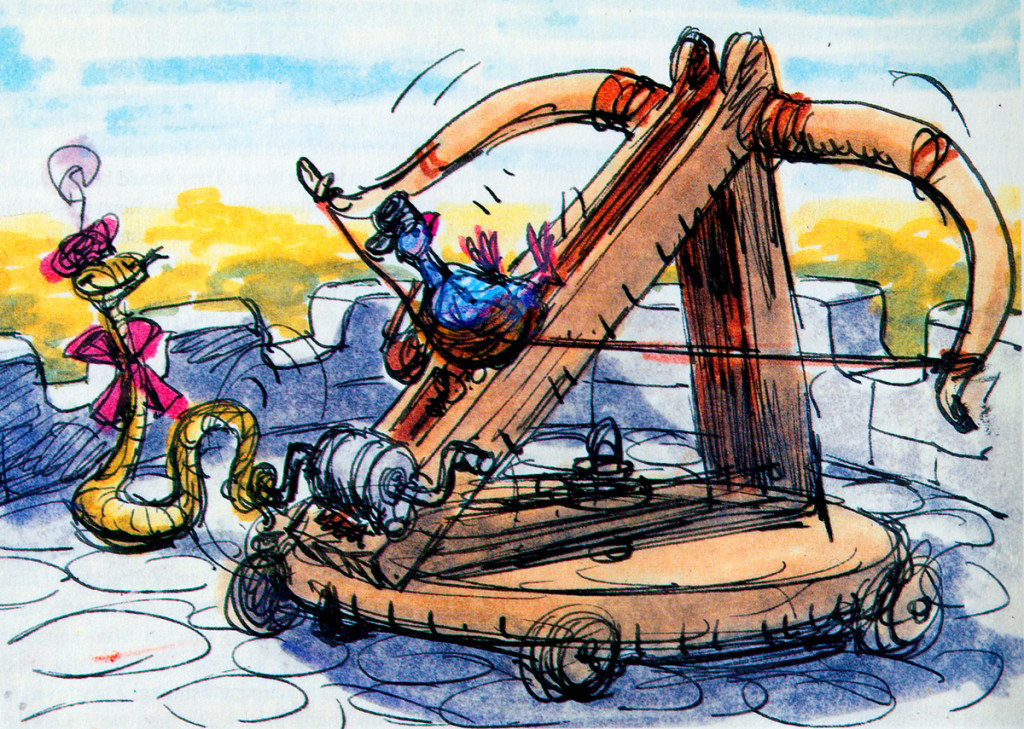
- Right: A discarded sequence from Robin Hood showed a messenger pigeon so fat and heavy he had to be shot into the air. This gave the animators the beginnings of The Albatross Air Lines in The Rescuers.
Phil Harris was so successful, they dragged him into Robin Hood as well. Robin Hood. The very same character from The Jungle Book is now Little John! All those cowboy voices in Robin Hood don’t work either, especially when you mix them up with Brits like Peter Ustinov and Brian Bedford. When these two thespians work against Pat Buttram, Andy Devine and George Lindsey, it’s one thing. Throw in a Phil Harris, and you have something else again. Where are we, the audience, supposed to be? Is it “Merry Ol’ England”? Or is it the lazy take on character development by a few senior animators who have taken license to jump away from the story writers for the sake of easy characters of the generation they’re familiar with. Robin Hood is a mess of a story – even though it’s a solid original they’re working from, and I find it hard to take written advice from these fine old animation pros who take an easy way out for the sake of their animation; shape shifting classic tales to fit their wrinkles.
At least, that’s how I see it – saw it. And perhaps that’s why it’s taken me so long to read this book. I felt (at the age of 14 when these films came out) that the Disney factory had turned into something other than the people who’d made Snow White and Bambi and Lady and the Tramp.
They had, in fact, become the nine old men.
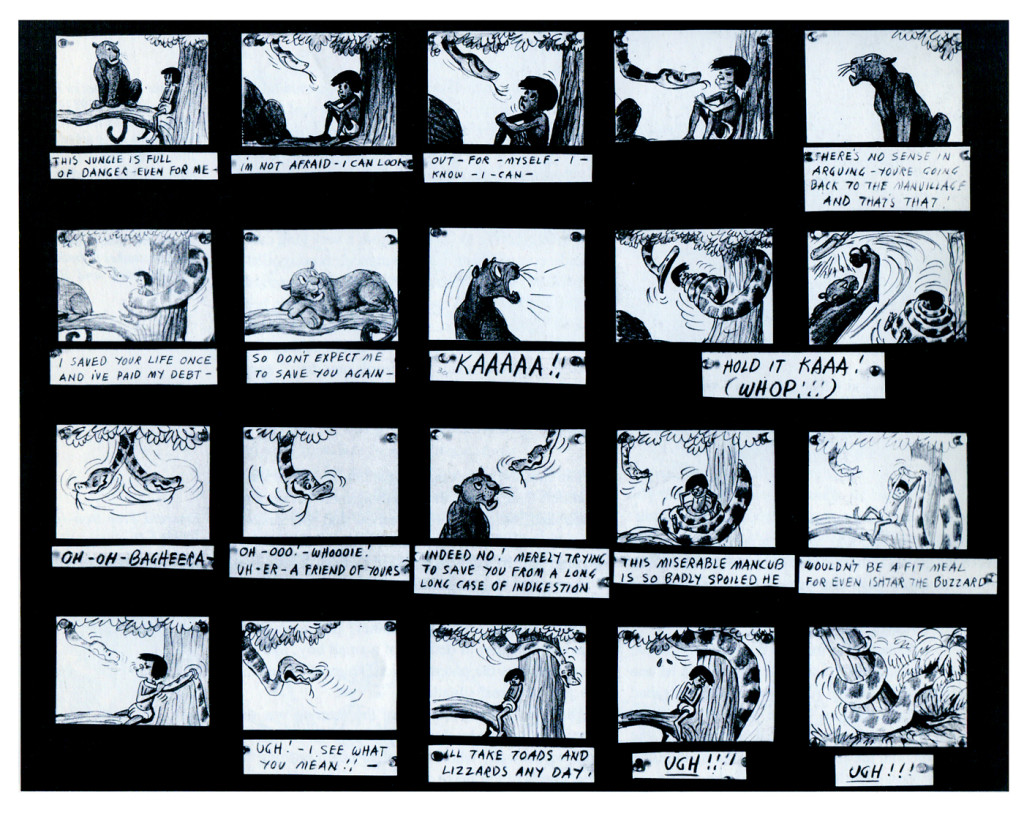
The Jungle Book was the last film Bill Peet worked on. He left
before the film was done. He’d had a long, contentious relationship
with Disney. He never felt he’d gotten the respect he deserved.
They were incredibly talented animators, and they certainly knew how to do their jobs. The animation, itself, was first rate (sometimes even brilliant as Shere Khan demonstrates), but try comparing the stories to earlier features. Even Peter Pan and Cinderella are marvelously developed. Artists like Bill Peet and Vance Gerry knew how to do their jobs, and they did them well. When Peet quit the studio, because he felt disrespected, Disney’s solid story development walked out the door.
The animators were taking the easy route rather than properly developing their stories. The stories had lost all dynamic tension and had become back-room yarns. Good enough, but not good.
Today was Nik Ranieri‘s last day at Disney’s studio. He’s definitive proof, in the eyes of Disney, that 2D animation is dead as an art form. This is the end result of some of the changes Thomas and Johnston suggest in their book. The medium took a hit back then; it just took this long for the suits to catch up. Good luck to Nik and the other Disney artists who no longer work steadily in what is still a vitally strong medium.
Bill Peckmann &Books &Rowland B. Wilson 31 May 2013 05:28 am
Bedtime for Robert
- Bill Peckmann collaborated with Rowland Wilson, back in the early ’80s, on a charming little book for children that never found a publisher and, consequently, never was completed. Bill had a bound copy of the book – in a mockup form – and sent it to me. I, naturally, would like to share it.
First, here’s the note on the inner sleeve of the cover:
- ABOUT BEDTIME FOR ROBERT, A WORDLESS BOOK
Bedtime for Robert is intended to bring to small children an early experience of the special personal relationship one has to a book; the availability and flexibility that a book enjoys over a fixed-time medium such as television.
Being wordless, the book needs no translation. The child has access to it at any time without relying on adults. This early exposure to the physical reality of books will, we believe, enhance the experience of reading later on.
The story combines the pull of a narrative with information that appeals to a child’s curiosity: in this case what goes on at night in the adult world. Although the child must go to bed (reluctantly), Robert the cat’s curiosity leads him into this forbidden adult world. Robert is all cat with cat qualities, not a little person in a cat suit as most cartoon cats are. The child can project his own emotions into the character.
The authors are booklovers with extensive experience in both print and film. We have both won Emrnys and other awards for our animation designs for educational TV.
We believe this is the first book to utilize the principles of film continuity in a printed form. This continuity is vital to the understanding of a narrative without the aid of words.
The use of film pacing supports the unfolding of adventure and humor in a wordless story.
The book is planned to be in color. The pages up to 17 are in finished linework and the rest is in rough layout form.
Robert is conceived as a series. The character and structure would remain constant. The variables would be in the cat’s adventures in various places, seasons, times of the day, and occupations.
Please contact either of us at the addresses below. This is a simultaneous submission.
Yours truly,
Rowland Wilson
Willi Peckmann
You’ll see immediately how original this book is:
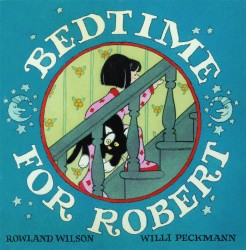
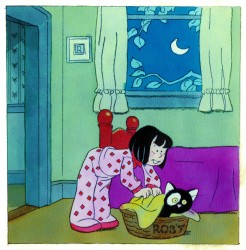 3
3(Click any image to enlarge.)
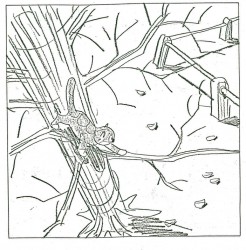 28
28 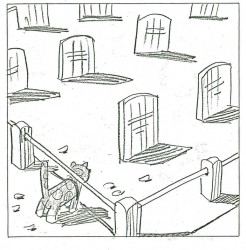 29
29
And just to put everything in proper perspective, here’s a letter they received from Houghton Mifflin rejecting the book. He was Rowland B. Wilson, for god’s sake!
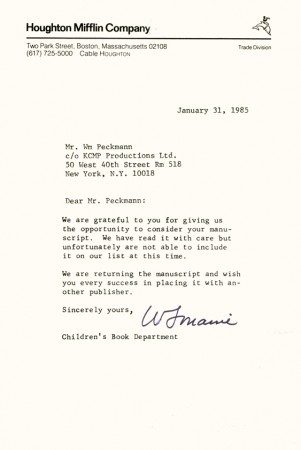
Bill Peckmann added this background info: “The rejection slip from
Houghton Mifflen really hurt the most because our thinking at the time
was that since they were publishing Bill Peet’s books (my all time
favorites), we thought they would understand the concept of “Robert”
better than anyone else. Go figure”
John Canemaker &Layout & Design &Models &Photos &Rowland B. Wilson 05 May 2013 05:55 am
More Raggedy Ann Photos – 2
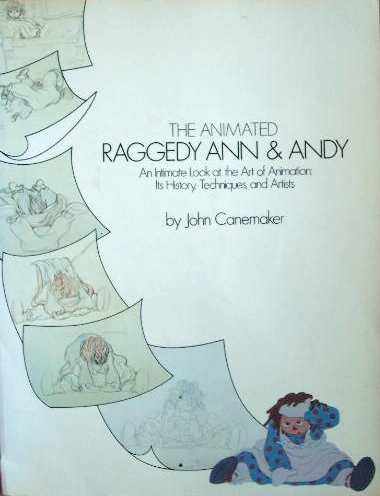 - Last week, I posted a stash of photos taken by John Canemaker for the book he wrote called, “The Animated Raggedy Ann and Andy.”
- Last week, I posted a stash of photos taken by John Canemaker for the book he wrote called, “The Animated Raggedy Ann and Andy.”
John Canemaker took all the photos, himself, which led to a more intimate look at an animated film. There were no photo decisions by committee; it was decided to use a photo if it told the story John was trying to relay. For that reason, the book really is one of the best “Art of . . .” type books on the market. (I’m not just saying that because there were photos of me in there – though that would be a good reason, too.)
The book was as exciting – in the making – as was the film. Too bad at the last minute the train of a film ran wildly off the tracks. In a way, I wish the book were written after the film was completed so that we could read the true story of what happened in those last six months of chaos.
The decision was slow in growing and fast when it finally fell, that the movie was enormously over budget. I was in on all the morning production meetings where managers and supervisors and directors would all meet. Those had started off nicely, at the beginning of the film, and went insanely wrong before long. There was the time when I was ordered to fire – that day – two inbetweeners. I was told that we had to give the staff a lesson that they had to work harder. (That might have been hard to do since everyone was giving it their all.) It so happened that one new inbetweener, on her first scene, ignored my instructions (and her immediate supervisor’s) by erasing all of Jack Schnerk‘s drawings. She felt she could animate the scene better, and she set out to prove that.
One down. The second person to fire was someone I was told (by Dick Williams, himself,) that I had to fire. It was obvious that there was a personality conflict since the guy was a great artist and definitely someone who should have stayed on. I was able to arrange for him to be switched to the BG department, thus fired by me from doing inbetweens and hired by them, in the same day, to do watercolors. He continues on, even today, working at a top position in design at Blue Sky. I don’t know about the woman, but I hope she gained a little humility that day 30-something years ago. That story didn’t make it into the book.
What there was in the production was a great first year of production where the art of animation was treated in its highest form. We were all out to make the greatest film of all time and bring it to the big screen. We had some of animation’s finest animators gathered to work on it. Assistants and Inbetweeners in New York were offered classes, after hours, which tried to teach animation to the new. With teachers like Tissa David and Art Babbitt and more experienced Assistants; a lot was conveyed. I was usually too busy to make it to many of these classes, but I always kept a close eye on what was taught. It really was fun and incredibly valuable to many of us.
At some point along the way, the LA studio was closed and key people from there came here. All of our space was overcrowded and uncomfortable. The Xeroxing in NY, a sweet grey line that took a while to construct, was replaced by a thick back line, when management sent work to Hanna-Barbera to outsource the xerography and some of the painting. Shadows were eliminated. Color copiers were rented. Scenes that had been animated in a non-photo blue pencil on 16 fld paper were being copied and reduced, at the same time, in B&W so that they could use 12 fld cels to color the art. A penny saved is a penny gained; I guess. This meant that a number of my inbetweeners were used to put 4 sets of crosses on the animation drawings so that there’d be some form of registration on the reduced artwork. Certainly the registration went all to hell in the process, thus allowing the latter half of the film to have a lot of slippage on the big screen. Lots of weaving animation in scenes that were rushed.
Emery Hawkins‘ amazing taffy pit took a big hit when it was animated more like a limited animation movie. All that beautiful rolling motion Emery had created on the cinemascope screen suddenly hits the wall and stasis sets in. The film was never going to be a classic of he silver screen, but it should have been a hell of a lot better.
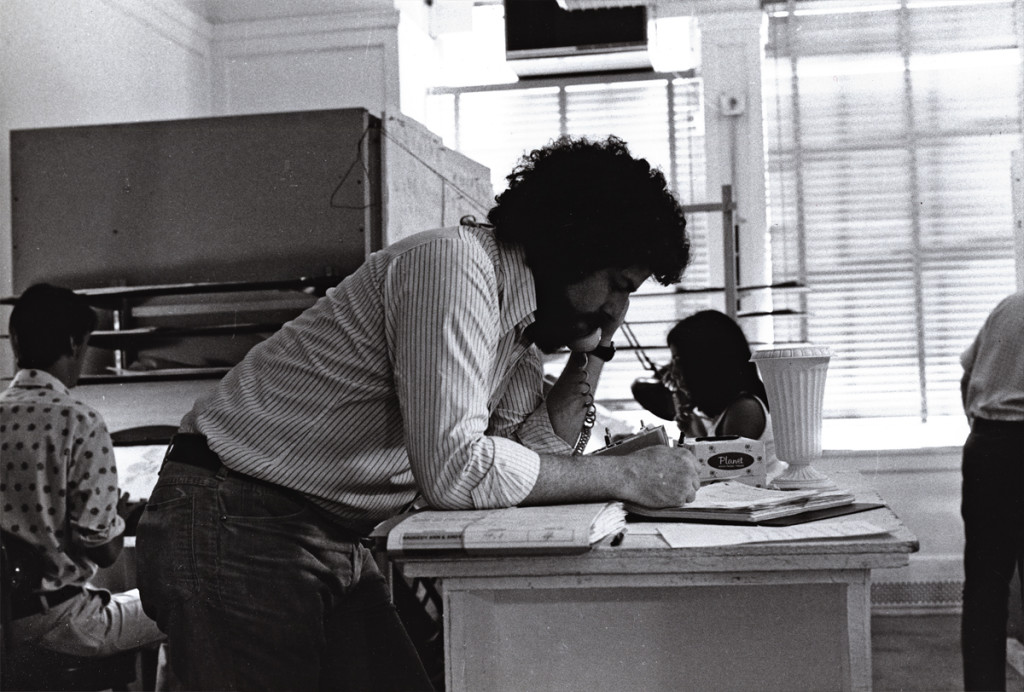 1
1Here I am doing what I did most of the day.
I talked on the phone. Ennervating stuff.
A young Kevin Petrilak is in the rear left. He was an inbetweener
in the Taffy Pit. Dan Haskett ran that group of people.
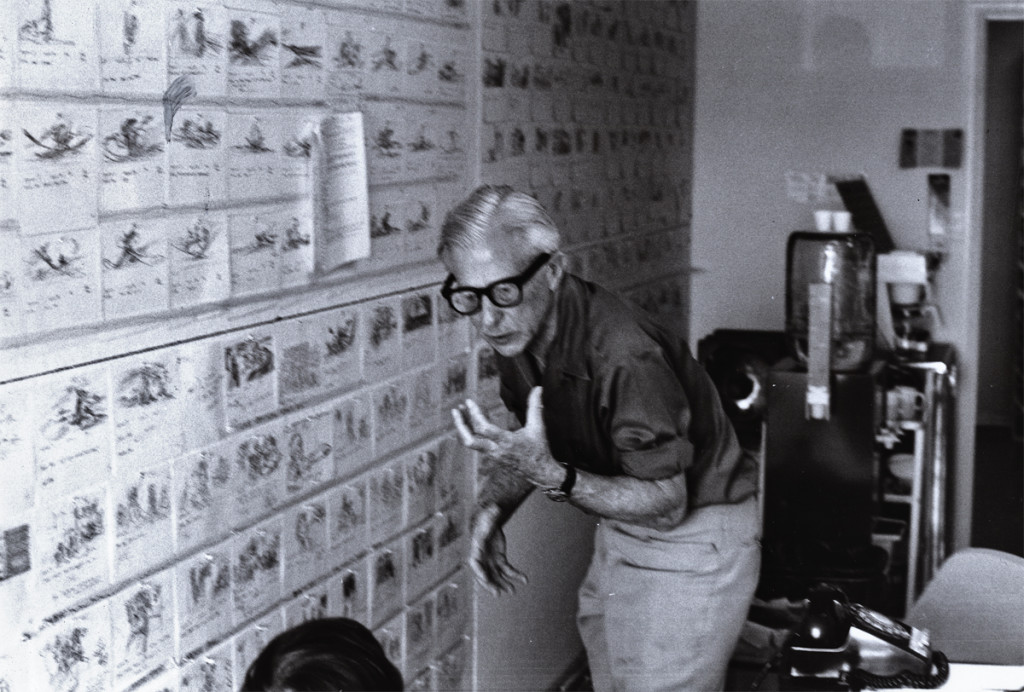 2
2
Here’s Art Babbitt teaching. He loved doing that. Dick tried to
recreate the classes he’d had in London a couple of years earlier. We – all New York -
sure appreciated the two weeks of lessons. I have Dick’s notes from these sessions.
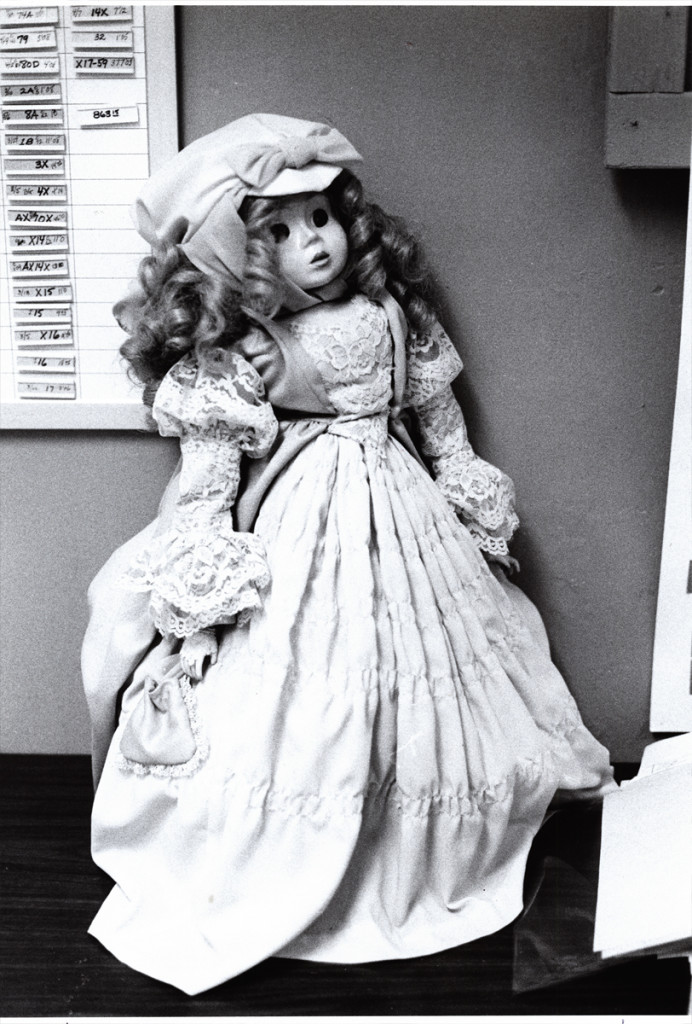 3
3
This is a beautiful doll. Babette. She was at the film’s center.
The Pirate kidnaps her and takes her to sea. Raggedy Ann & Andy
take off in pursuit of her to bring her back to the playroom.
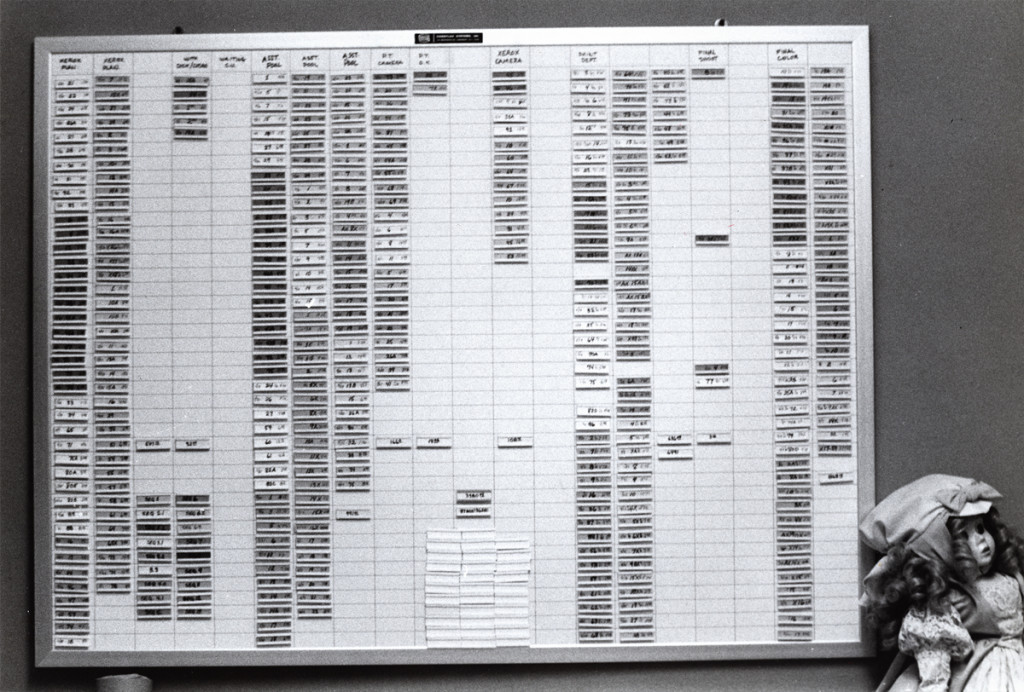 4
4
This is a wall of stats. It represents footage counts produced in
every department working on the film. This hung in Mike Sisson’s office.
He was the production manager who tried to usurp the entire production.
A couple of weeks before everything changed, managerially, on Raggedy, Sissons
approached Cosmo Anzilotti and me at lunch. He saw us at the restaurant and came
over to us. He wanted to lead a take over cutting Dick out of the film and
putting Cosmo in to finish directing the film. I’d be made Cosmo’s assistant.
I had no intentions of being another Iago, and said as much.
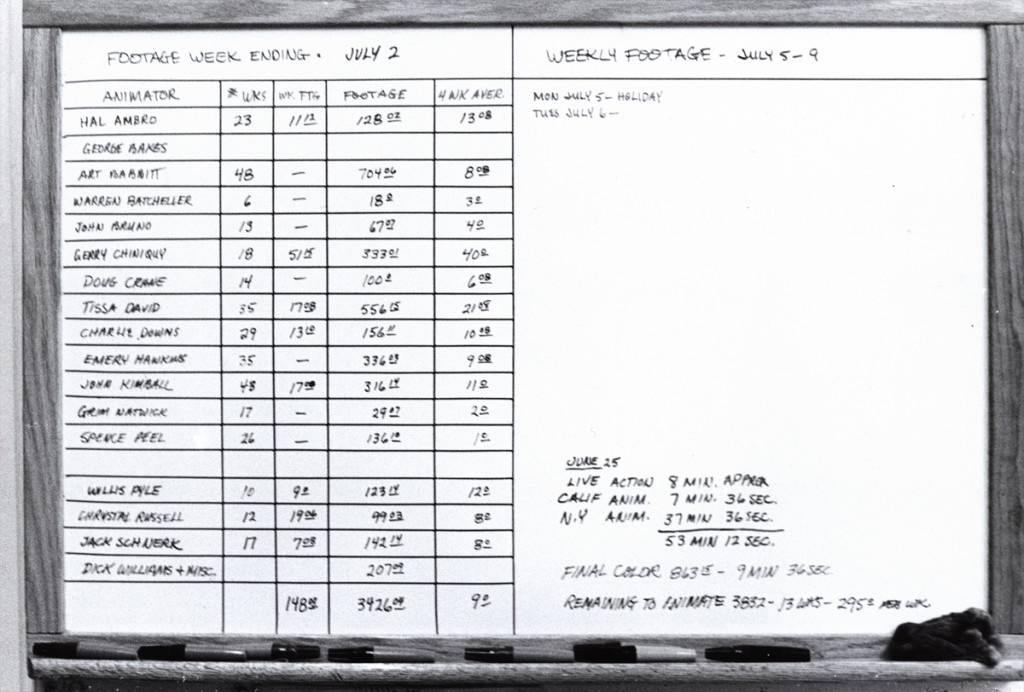 5
5
This chart covered the animators footage counts. A running record.
I told Cosmo that Dick had brought me onto the film, and I’d do anything for
him. If it meant leading a large group to quit the show, I’d do that. Cosmo
seemed relieved. He wanted to do the same and we both told Sissons how we
felt. He greeted our news with an ass’ smile and thanked us. We were no
longer on the winners’ side, and I watched closely to know when to exit.
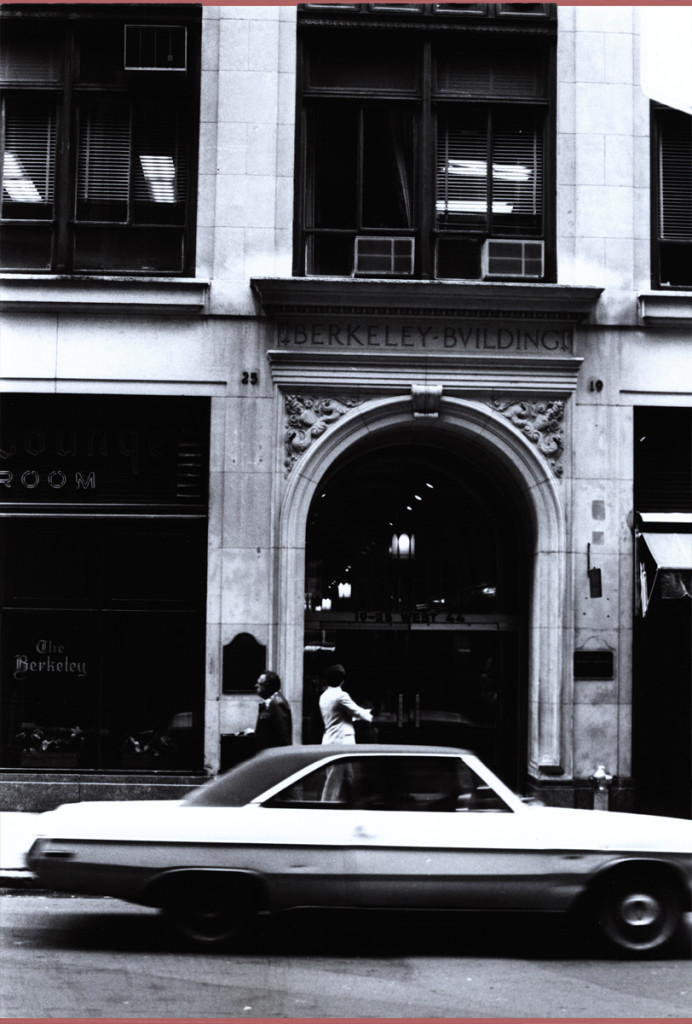 6
6
This was where the NY headquarters were planted. In the middle of 45th Street.
Most studios in the forties and fifties had places on 45th Street. Paramount,
Hal Seeger’s studio, lots of other smaller studios such as Pablo Ferro or Ray Seti’s.
![]() 7
7
Didi Conn was the actress who voice Raggedy Ann. When the VOs were coming
to an end, Didi worked late and her mother was with her. They needed help
getting home (Long Island.) The mother was afraid to drive. I volunteered
and drove them home. I took the Long Island Rail Road back to the City.
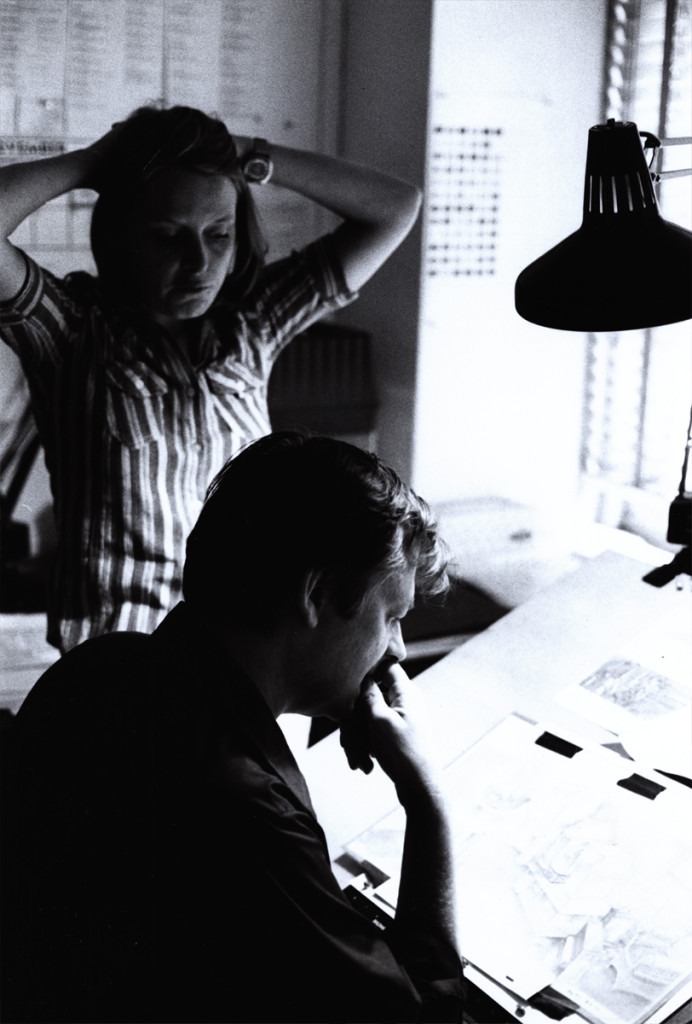 8
8
This is Sue Butterworth with Dick Williams. She was the watercolorist who
led the BG department and designed the wc style of the film. I thought her
work a bit inconsistent and often lacked the dynamic look good BGs require.
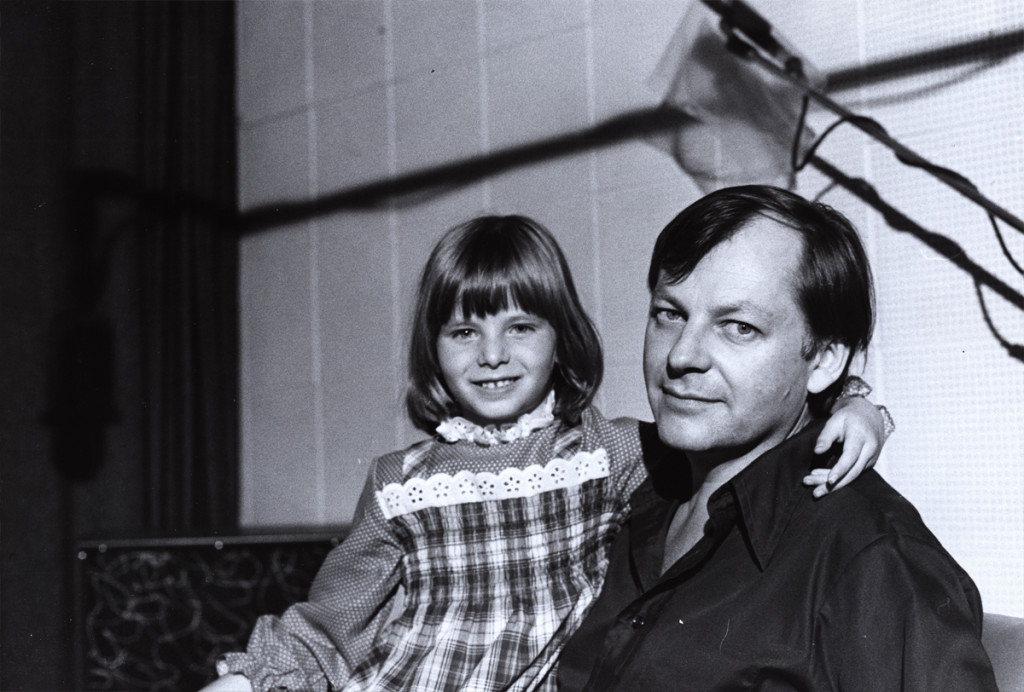 9
9
Here’s a picture of Dick Williams with his daughter,Claire.
Claire played the part of Marcella, the little girl at the film’s start.
They shot the live action in Boonton, NJ during the first days of the
production. All those hours they were out filming, I watched the shop.
Alone in an enormous darkened most of the time in the enormous office,
I could only spend time reading and rereading the script and sketching
my idea of some of the characters.Infrequently, the financial manager
of Lester Osterman Prods., the production company, would pass through.
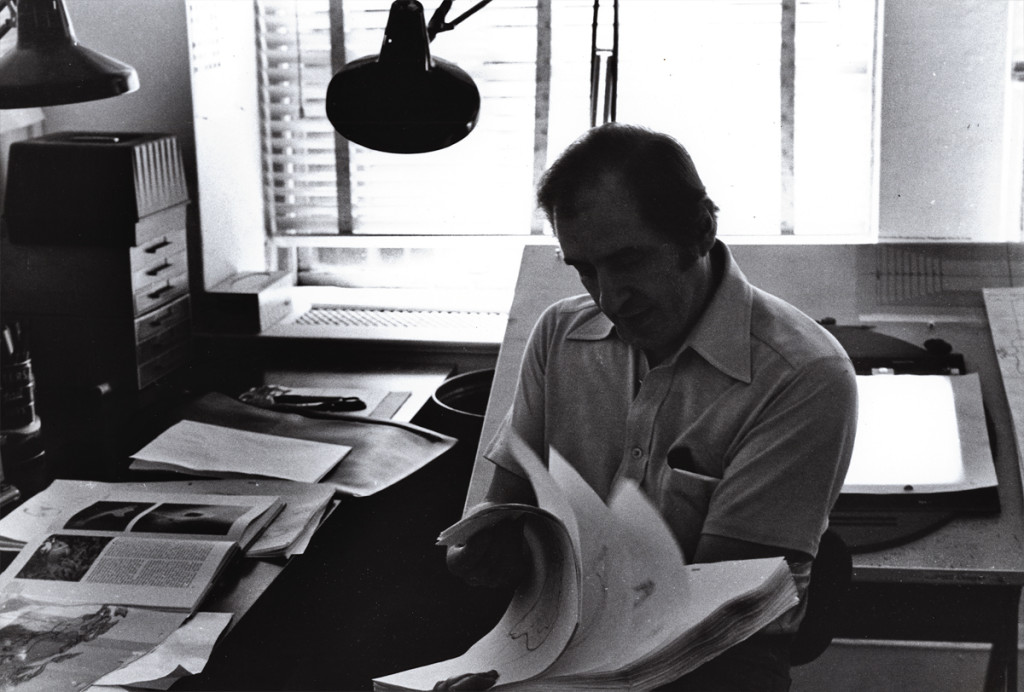 10
10
George Bakes was a fiercely independent animator who worked a short
while on the film. He must have started at Disney on Sleeping Beauty. He’d often
show a lot of Milt Kahl drawings he’d had from that film.
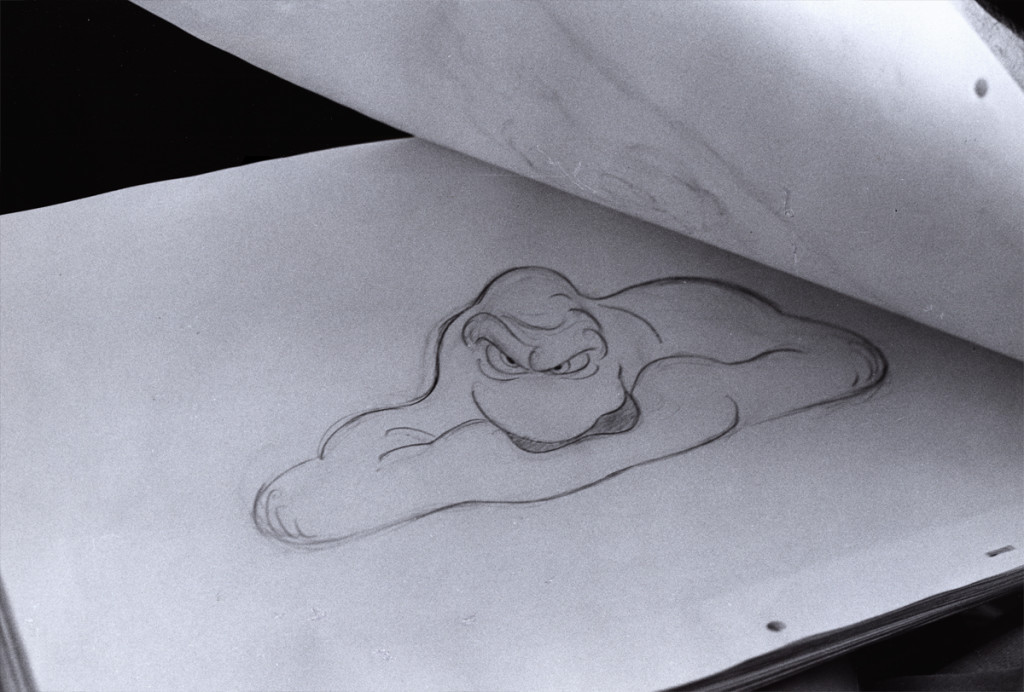 11
11
Baskes animated many of the cereal commercials of the day -
Trix, Honey Bee, Sugar Crisp bear, etc. For Raggedy he did the “gazooks.”
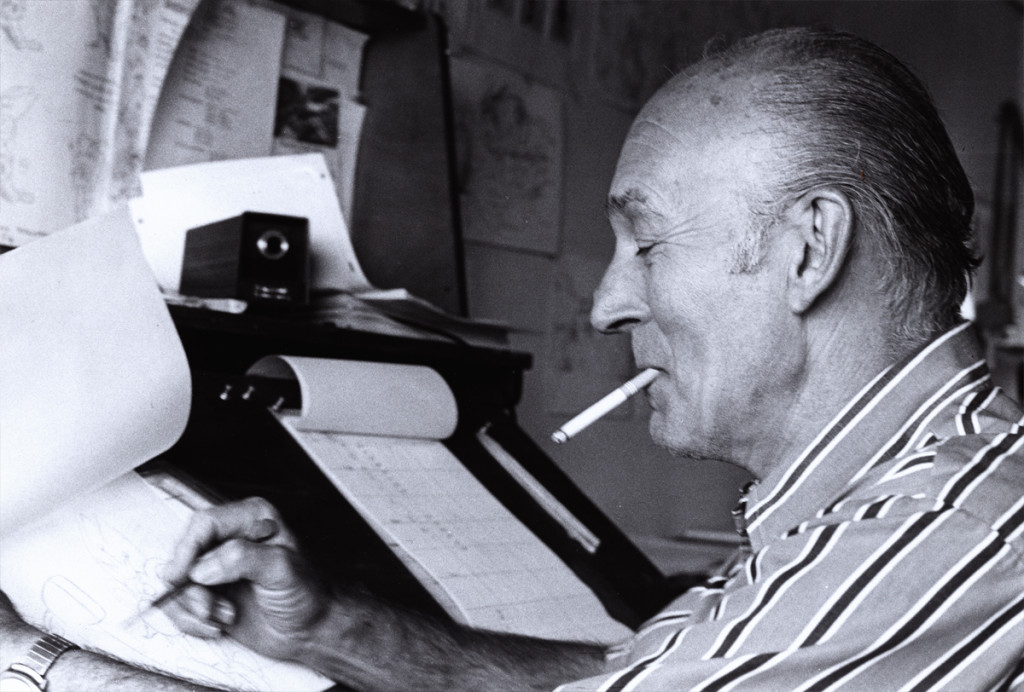 12
12
Gerry Chniquy was a brilliant animator straight out of WB.
He’d done a lot of Yosemite Sam animation for Friz Freleng.
It wasn’t far to go to cast him as the blowhard of a King, King Coo Coo.
Marty Brill voiced the character. Gerry Chiniquy,of course, did a fine job,
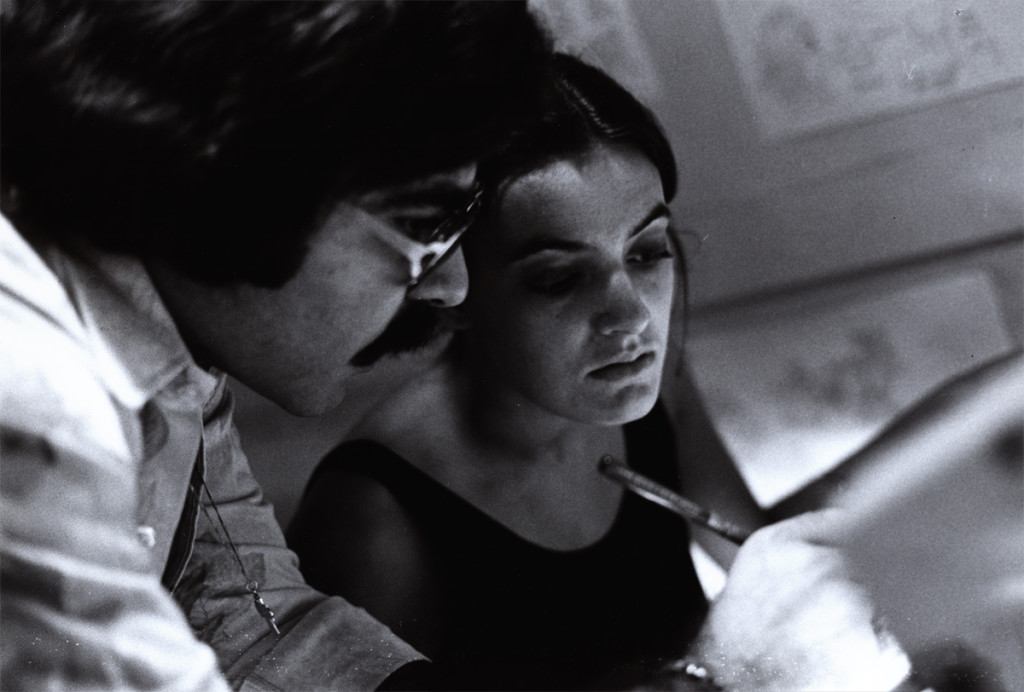 13
13
John Celestri had a style all his own although he idolized Bill Tytla.
Not a bad person to pick for a role model. John was an Assistant on
the film. Here he’s working with inbetweener, Amanda Wilson. Amanda was
the daughter of the great cartoonist and animation designer, Rowland Wilson.
The last of these photos will come next week. Many thanks to John Canemaker for the loan of the images. Any opinions tossed about here, are all mine and John is not to blame for them.
commercial animation &Errol Le Cain &Illustration &Independent Animation &repeated posts &Richard Williams &Rowland B. Wilson &Tissa David 10 Apr 2013 05:55 am
Dick’s Christmas
Richard Williams, when he had his own studio, was known for doing everything in a LARGE way. All of the commercials, title sequences, shorts were all done with a large, elaborate vision.
The Charge of the Light Brigade was a collection of 19th century graphics that are completely wrong, stylistically, for animating. All those cross-hatched lines. God bless the artists that pulled that off. The same was true for The Christmas Carol.
If the rendering style wasn’t impossibly difficult, then the animation was complex. Think of any of the scenes from Dick’s dream-feature, The Thief and the Cobbler. The many scenes where backgrounds were animated, with those backgrounds complete with complicated floor patterns or an entire city to be animated. Raggedy Ann was covered in polka dots and Andy was clothed in plaids. Both of the characters had twine for hair with every strand delineated. The commercial for Jovan featured a picture-perfect imitation of a Frank Frazetta illustration. Even the mountain on the background had to be animated and rendered.
Well, when it came to Christmas cards, Richard Williams was the same. Enormous and beautiful cards were printed and signed by anyone who knew the recipient of the card. You were lucky being on the receiving line for these stunning cards. Tissa David once gave me a number of these cards. I held onto my copies of the cards until my space was flooded and the cards were damaged. I thought I’d post a few.
With card #1, a take-off of Muybridge with frame grabs from several of the better Williams commercial spots from that year, capped off by a number of key staff personnel positioned to continue the Muybridge motif.
(Here, I first post the entire card, followed by a break up of the card into sections
so you can more ably see the details.)
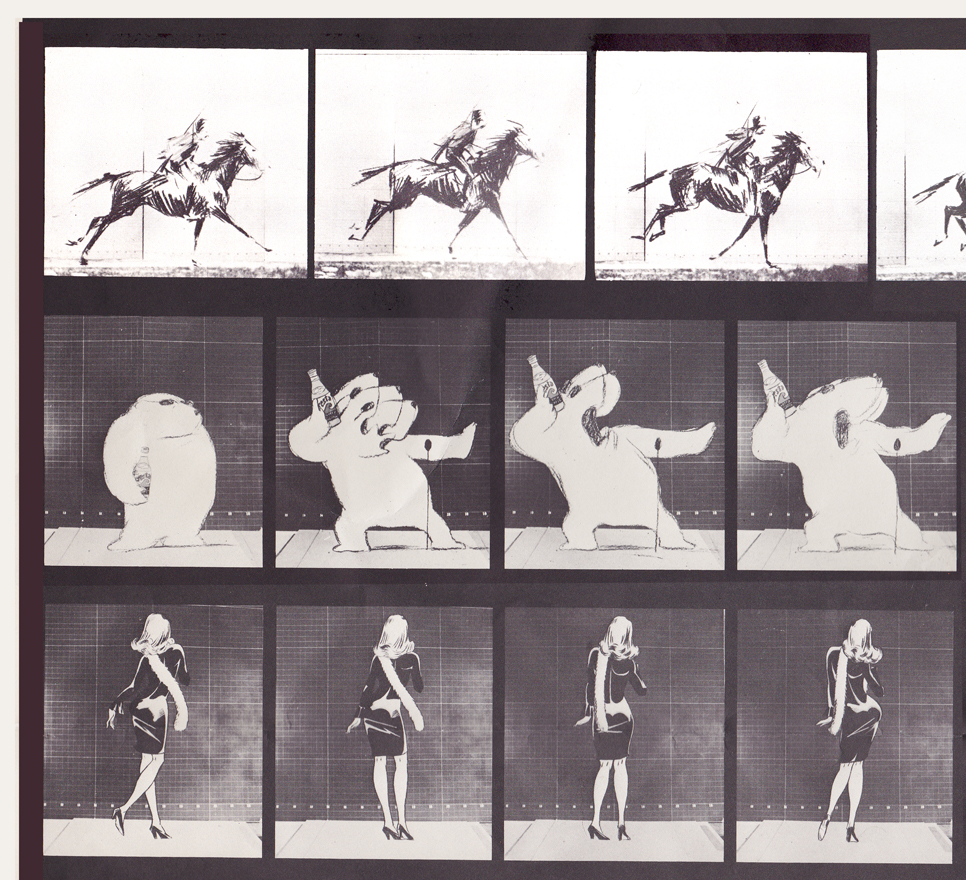
Top rows left side / Row 1: Pushkin Vodka ad
Row 2: Cresta Bear ad / Row 3. Tic Tac ad
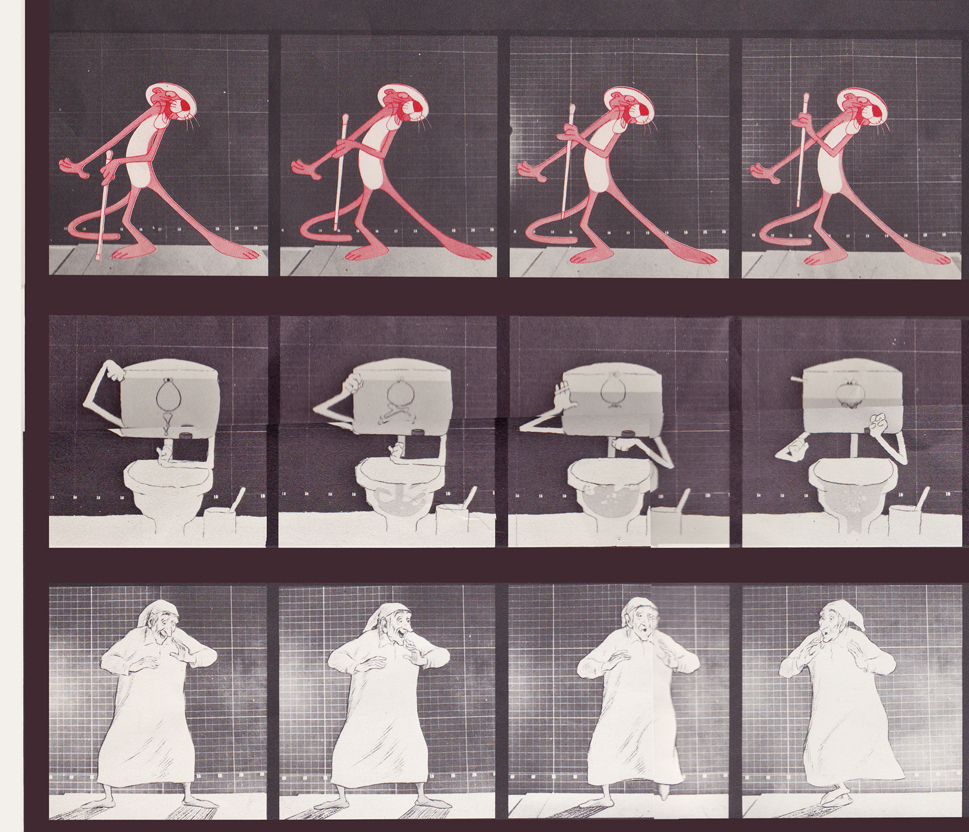
Middle rows left side / top row: Pink Panther titles
Middle row: Bloo toilet cleanser ad / Bot row: The Christmas Carol
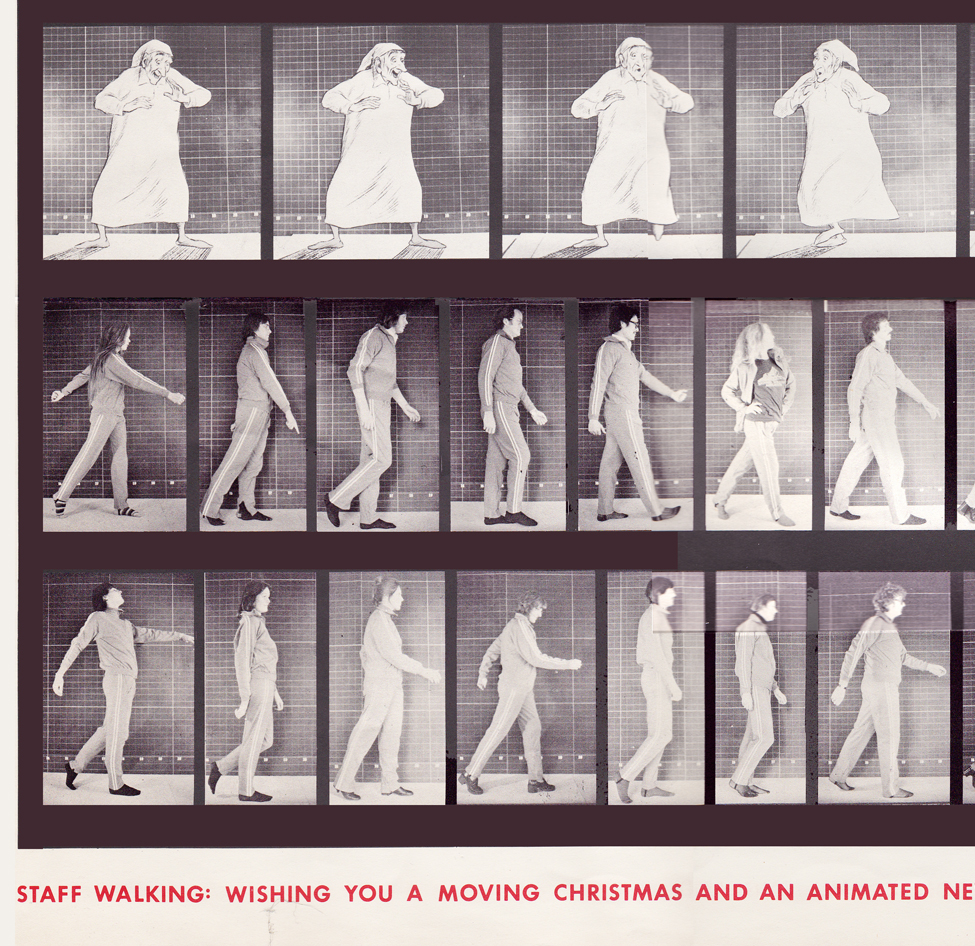
Bottom rows left side / top row: The Christmas Carol (repeated)
Middle row: staff / bottom row: more staff
With card #2 we see Soho Square. The green front door
marks the location of Dick’s studio at 13 Soho Square.
(As with the first card, I posted the entire Christmas card,
followed by a sectional divide so you can enjoy the details.)
This is a folding card.
It comes folded so that you see the far left of the card
revealing part of the far right.
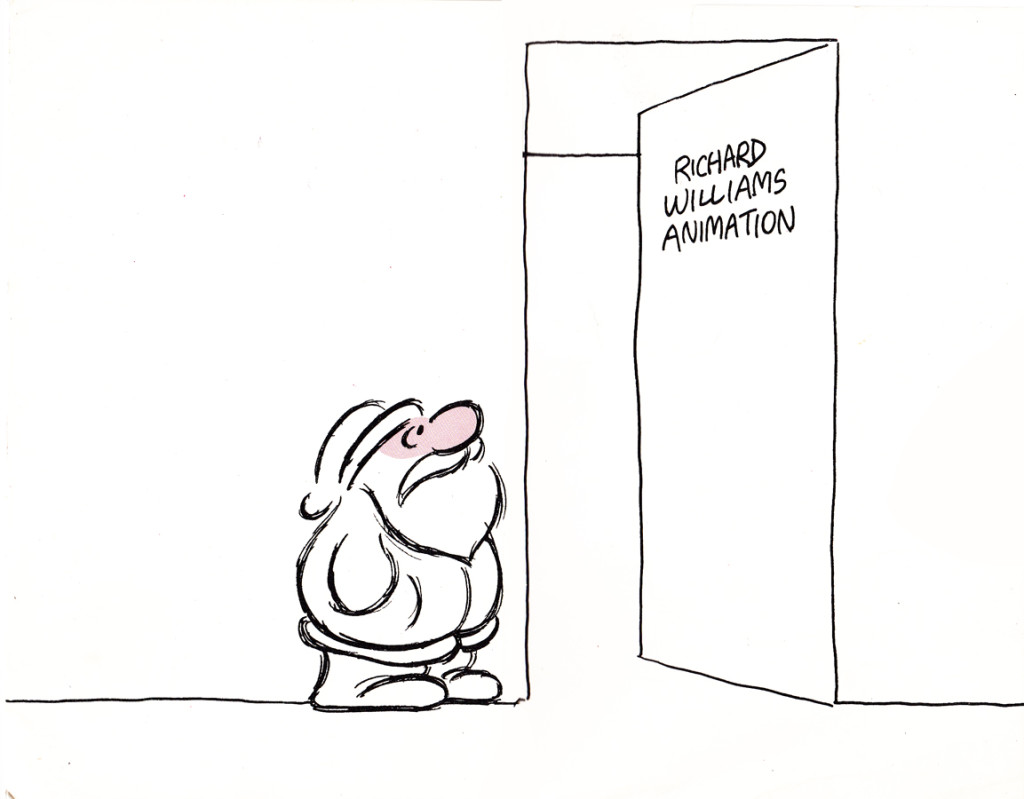
The card comes folded like this.
The left side (Santa up to doorway) is on the left side of the card.
The right side, on bottom, reveals the empty office.

It unfolds to reveal this long line of Santas.
Each Santa is in the style of the many illustrators’ styles
of those who designed ads for the studio in the prior year.
Suzanne Wilson sent in a Pink Panther Chistmas card; it was drawn by her late husband Rowland Wilson:
Below is a close up of that same card.
Here’s another full card.
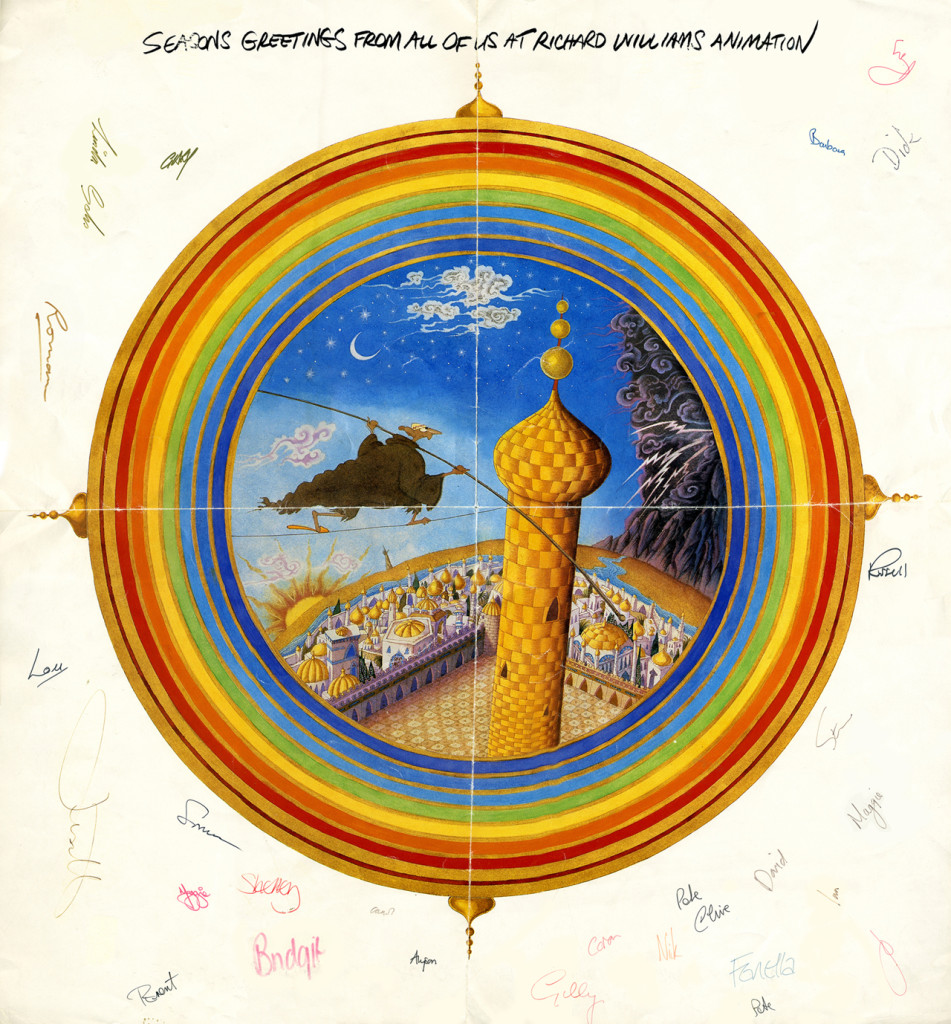
This one is designed after the McGuffin of Dick’s feature,
three golden balls over the city.
from The Thief and the Cobbler.
Bill Peckmann &Books &Guest writer &Illustration &Rowland B. Wilson 12 Nov 2012 07:26 am
The Secrets Behind Trade Secrets
- Suzanne Lemieux Wilson, wife of the late Rowland B. Wilson, just sent me a guide to how she, with information from Rowland, put together their invaluable book of notes called Trade Secrets. Seeing the skeleton come together for this book is quite an informative document, and I couldn’t be happier that she trusted my blog to relay the information..
Some of these illustrations and pictures have passed across this blog before, but they take on a very new meaning here, so I’m glad to post them anew. I have to thank Suzanne for the gift of this post especially given some of the hard work I know it took to scan and send documents that are large enough to work here.
By the way, if you don’t have this book, you should. The book offers an enormous amount of information about his design for animation as well as for the printed cartoon and illustration trade. How ofen does a genius of his craft offer such a guide to the “trade secrets”? Trade Secrets is an invaluable book.
May I suggest that you click any image as you go through to enlarge them and get a better look at the illustrations and the type. It’s great stuff.
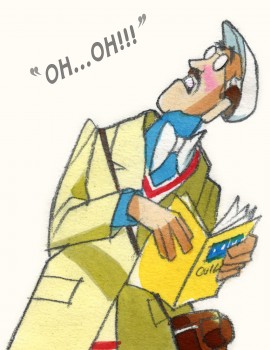 1
1
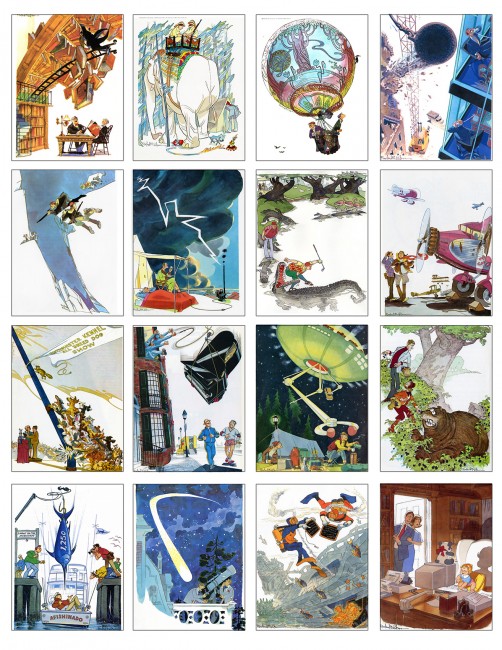 4
4
The insurance campaign ran for eighteen years–
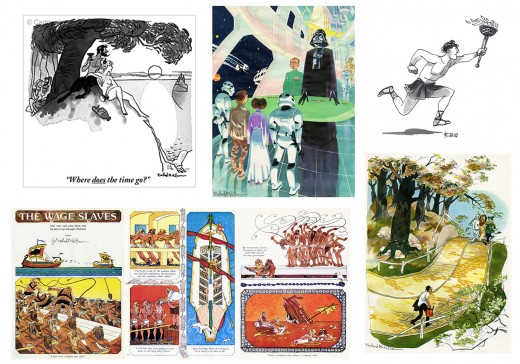 5
5
Rowland also drew cartoons for the New Yorker, Esquire,
The Saturday Evening Post, Playboy and others.
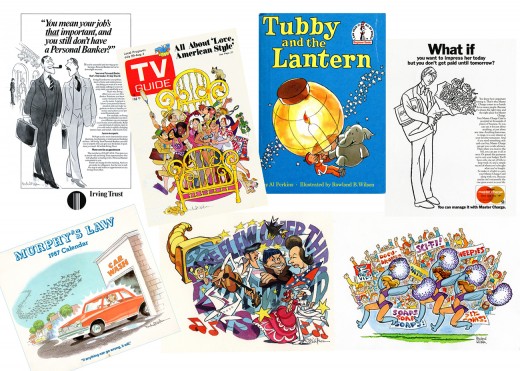 6
6
As well as illustration and advertising.
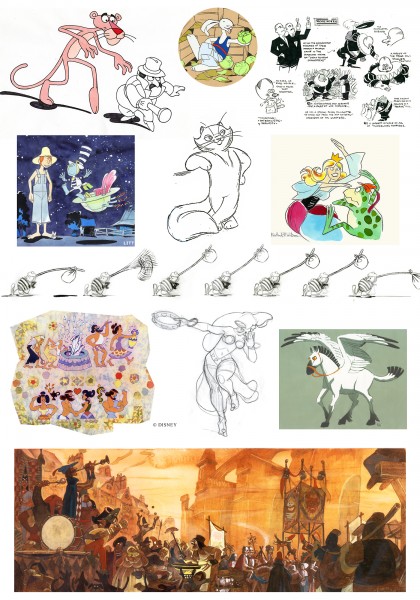 7
7
Rowland’s first and last jobs were in Animation, with many
interspersed throughout his career.
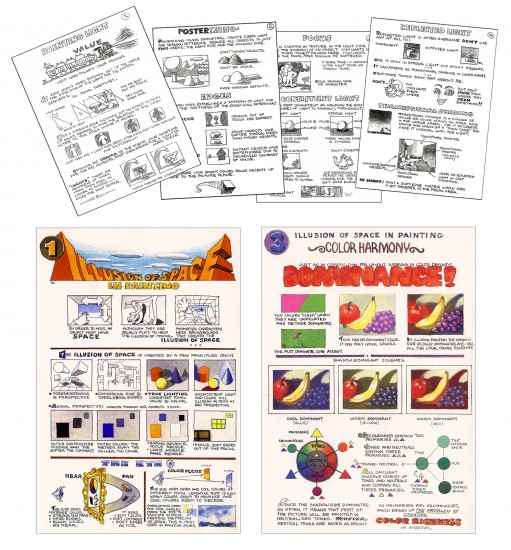 8
8
Rowland devised illustrated instruction pages as quick reference
guides for the Layout, Background and Animation staff when he worked
at Don Bluth and Walt Disney Studios.
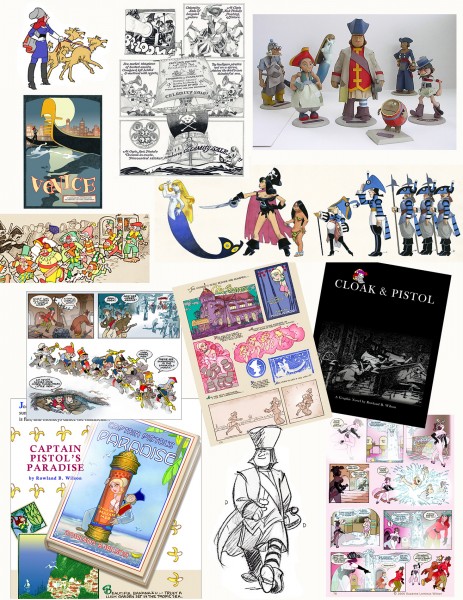 9
9
He worked on the Captain Pistol series of cartoon novels
from the 1970′s onward.
Captain Jack Pistol was a Retired Pirate and Rich Man who met with a
series of misadventures as he moved through various literary genres,
from swashbuckler to romantic comedy to spy thriller
to Western to science fiction.
Rowland sculpted three-dimensional models of the characters.
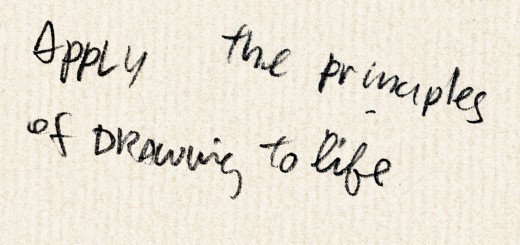
Rowland endeavored to apply the principles of drawing to life.

He created an artful environment to work and live in–
He designed and constructed a sunflower gate for the garden.
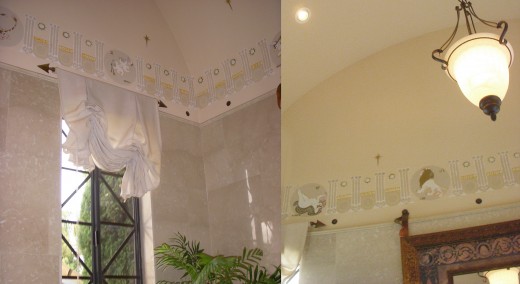
He painted the signs of the Zodiac around the base of a vaulted
ceiling…
He built a workbench for his woodworking projects and decorated it . . .
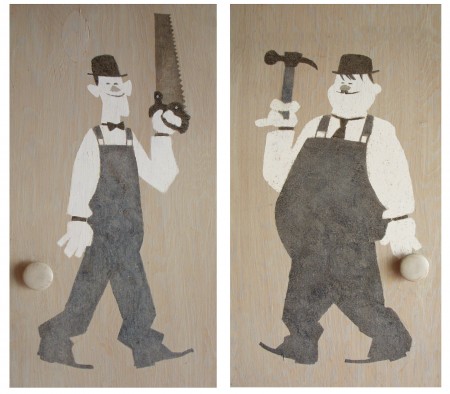 15
15
. . . with caricatures of Laurel and Hardy.
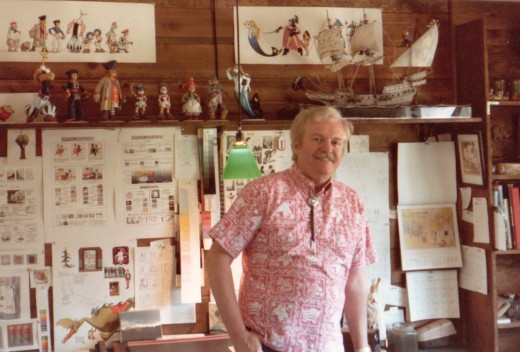
Because he worked in a variety of disciplines, Rowland sought
solutions that would apply to all of them and save him from “solving
the same problem over and over again”.
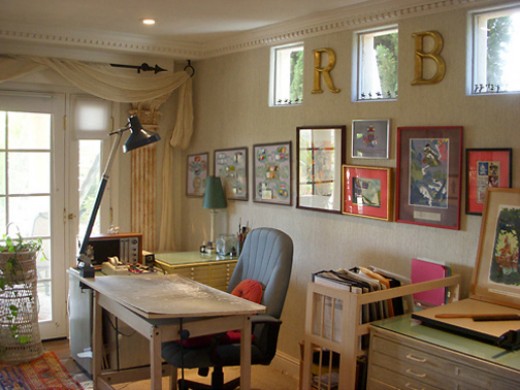
He consolidated the information into charts and hung them in his studio,
whether it was in Connecticut, New York, Ireland or California.
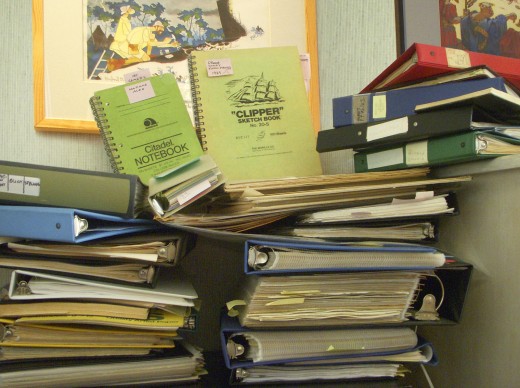
Rowland documented many techniques and observations.
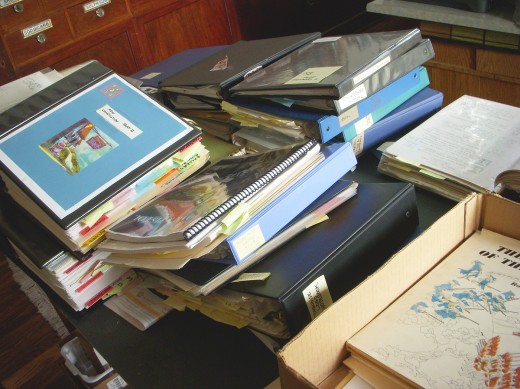
The writings and illustrations filled dozens of
notebooks, binders and sketchbooks.
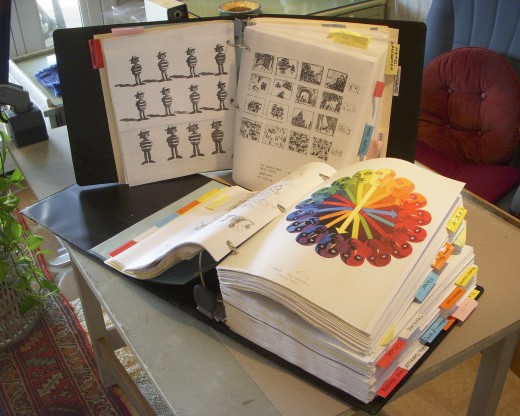
Much of it was xeroxed and consolidated into two giant binders as
resources for the book entitled Rowland B. Wilson’s Trade Secrets.
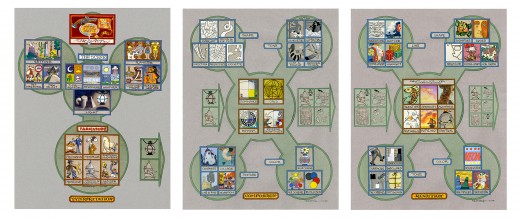
But the genesis for all of the notebooks and for Rowland’s oeuvre
were three flow charts that outlined procedures
that could be applied to any project.
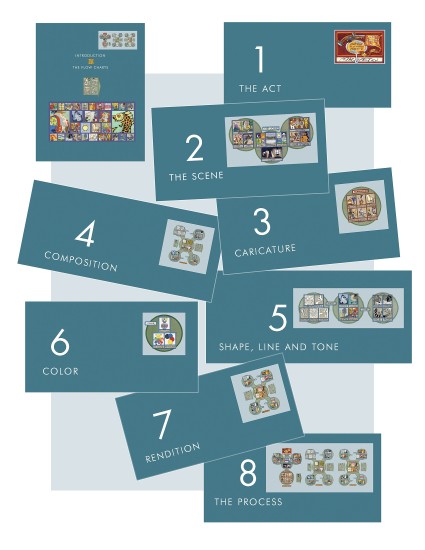 22
22
The Introduction of Rowland B. Wilson’s Trade Secrets describes the
Flow Charts in general. Then each chapter is based on an aspect
contained in them. The logo at the top right shows what aspect is
covered in the chapter.
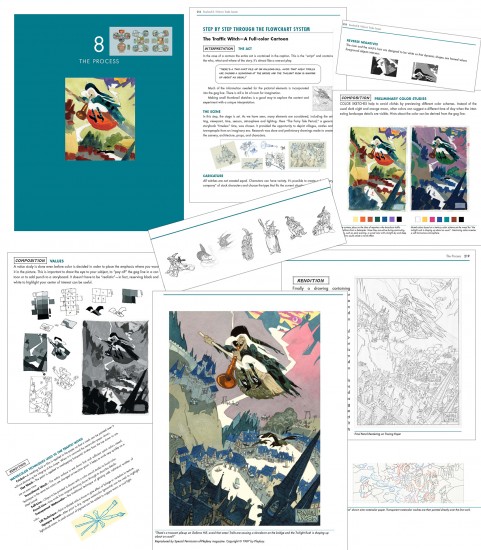 23
23
Chapter 8, the Process, follows a project from idea to finish
as it progresses along the Flow Charts.
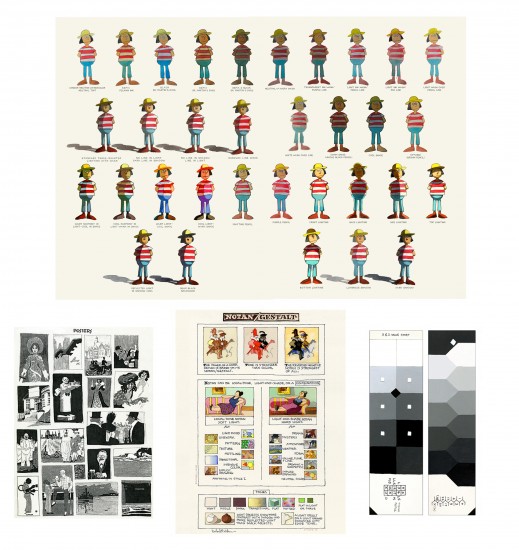
Chapter 9 presents many of the charts and posters
that actually hung on the studio walls.
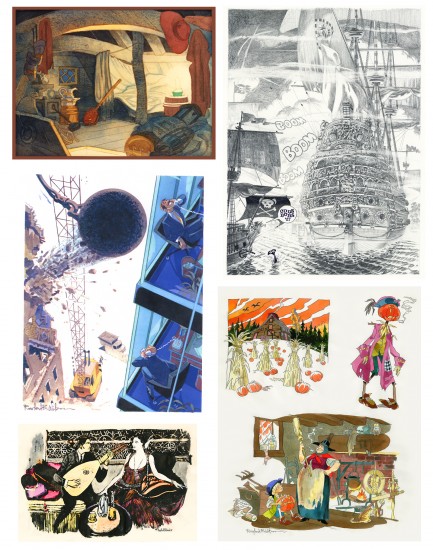 25
25
Chapter 11 shows a gallery of artwork throughout Rowland’s career,
including well-known images and some of his personal art,
never before published.
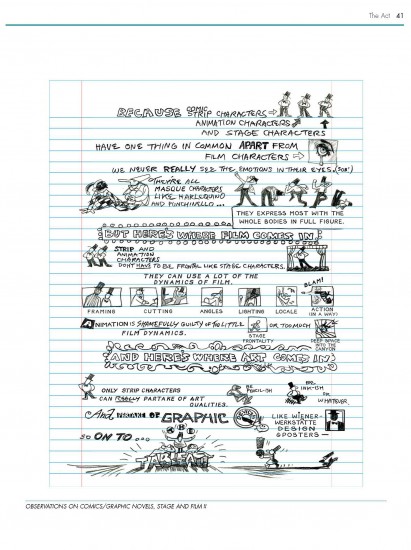 26
26
A page of observations on comics, graphic novels, stage and film:
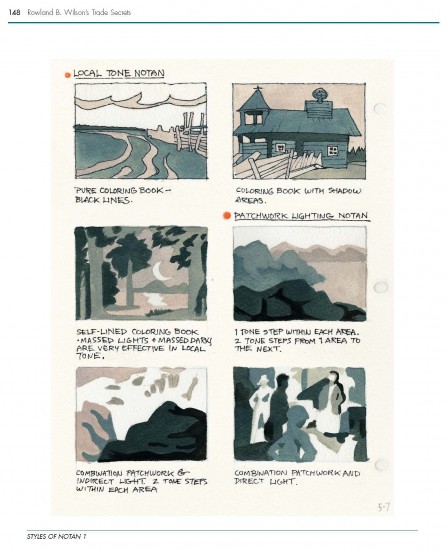 27
27
One of three pages illustrating Styles of Notan:
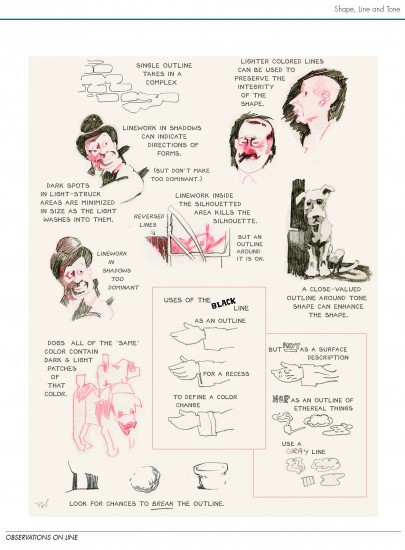 28
28
A page showing notes on various aspects of Line:
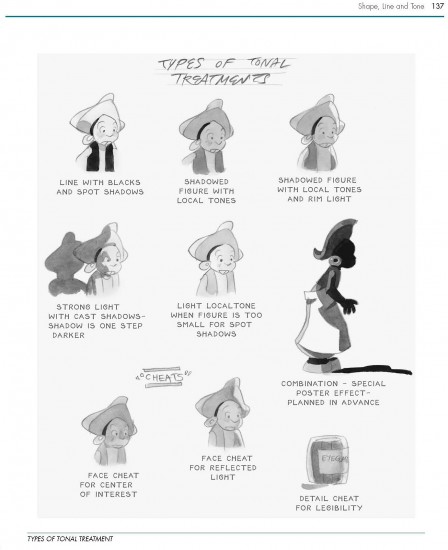 29
29
A page depicting various types of Tonal Treatments:
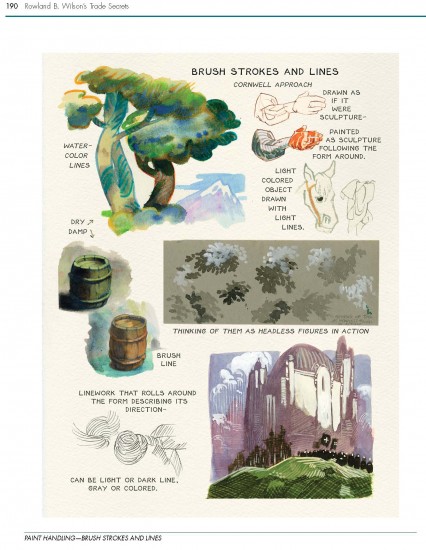 30
30
Demonstration of watercolor techniques:
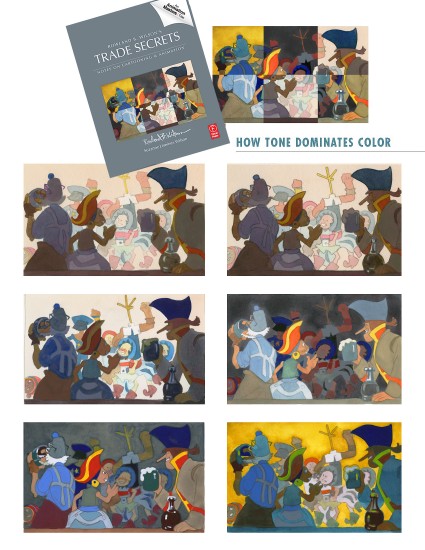 31
31
The cover image is a composite of 6 Value Studies showing the
dominance of Tone over Color:
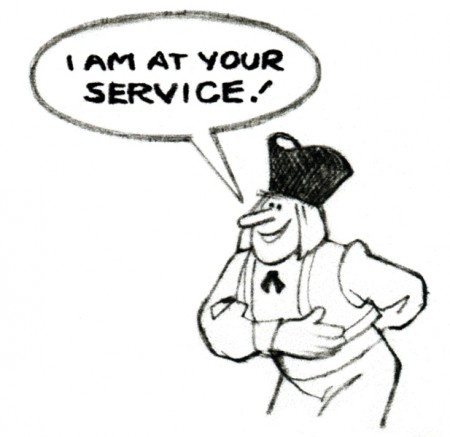
We hope you enjoy Rowland B. Wilson’s Trade Secrets and find
inspiration within.
With Special Thanks to Bill Peckmann for photograph of
Rowland B. Wilson in his studio.
_______________________
And as a bonus to this post, here are some drawings RBW did on a napkin at a lunch with Dick Williams.
Suzanne wrote:
- I discovered some vintage Rowland B. Wilson “doodles”, sketched on
napkins at Mario’s Restaurant in Westport, Connecticut–thought you
might enjoy them. The caricature of Suzanne and Rowland (image 2)
looks to me like the RBW take on Richard Williams’ drawing of us (image 3).
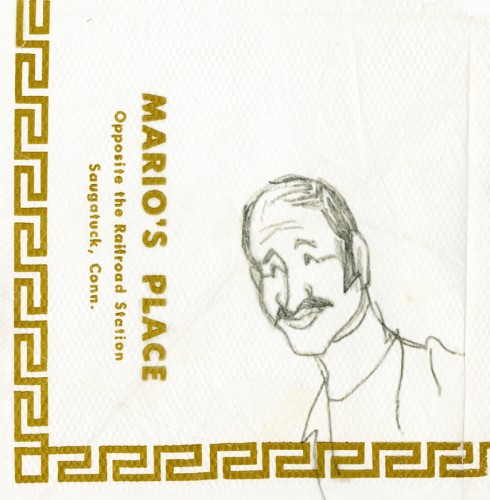 1
1Mario
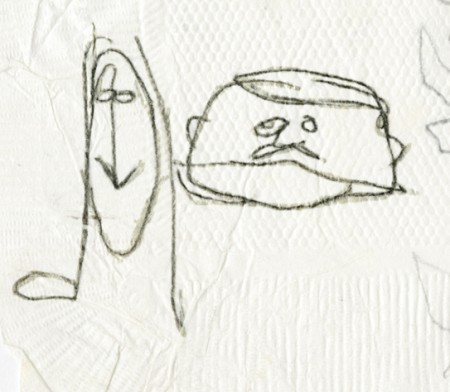 2
2
Suzanne and Rowland caricatures
Bill Peckmann &Commentary &Daily post &Rowland B. Wilson 21 Sep 2012 05:19 am
RBW at Auction and otherwise
- If you’ve ever wanted to own a Rowland B. Wilson cartoon, now’s your chance. A number of Playboy cartoons by Wilson are up for auction via Heritage Auctions. The auction will end on Oct. 13th, and you can make a bid now, if you like. I’ve posted the cartoons available below with some of the descriptive material from the auction house. Good luck.
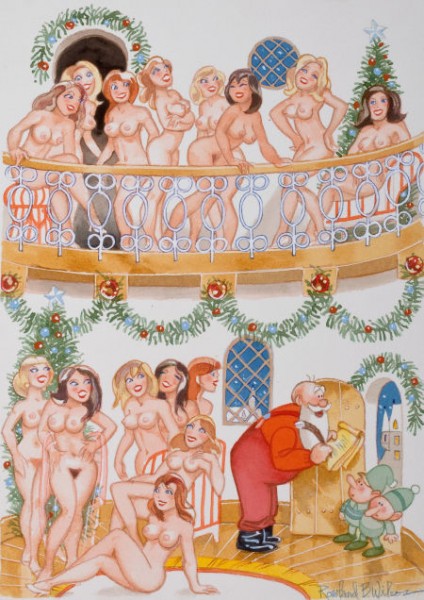 1
1“This Year I’m Putting in a Provision For Good Big Boys Too!”
Playboy page cartoon illustration, January 2002
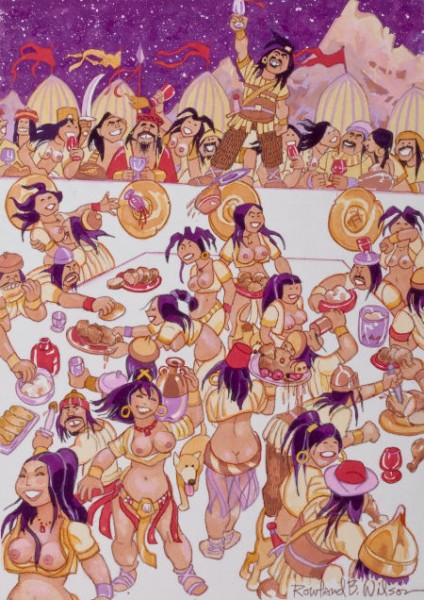 2
2
“A Toast to the New Year!
May It Be Another Prosperous One For Atilla and All Us Huns!”
Playboy cartoon illustration, January 2003
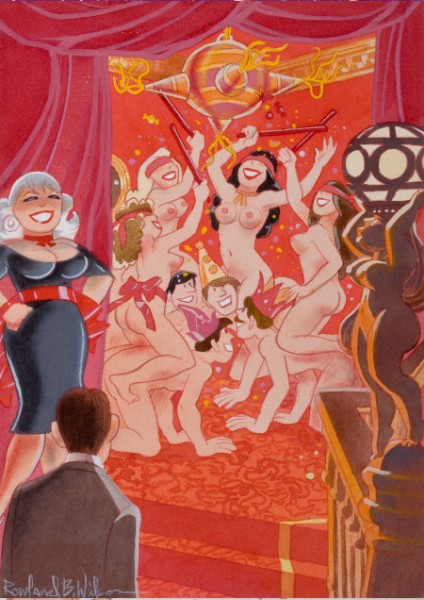 3
3
“We’ve Added a New Kink to the Piñata Tradition!
Playboy cartoon illustration
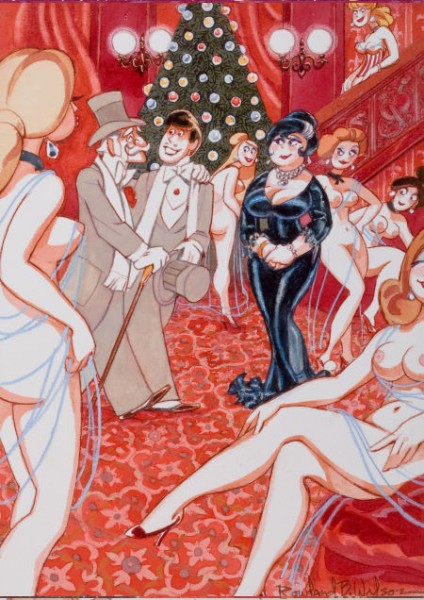 4
4
“At Long Last, Grandfather, You’ve Taken Me to See the Nutcracker”
Playboy cartoon illustration, January 2000
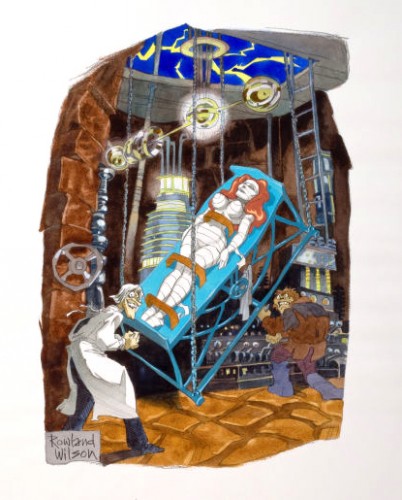 5
5
“If I Can Bring This Lovely Creature to Life,
She Will Bring Me Everlasting Immorality!”
Playboy cartoon illustration, November 1981
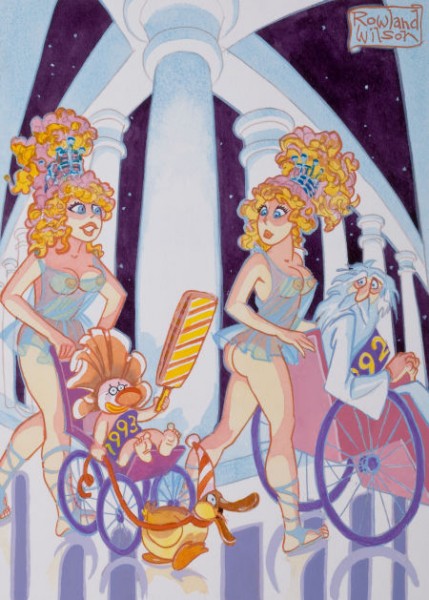 6
6
“I Have a Feeling ’93 is Going to Be a Very Weird Year”
Playboy cartoon illustration, circa 1993
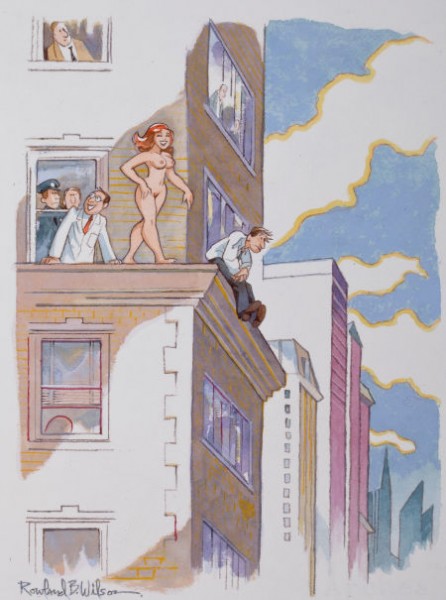 7
7
“Miss Perkins Has a Perfect Record in Dealing with Potential Suicides”
Playboy cartoon illustration, May 2003
______________________
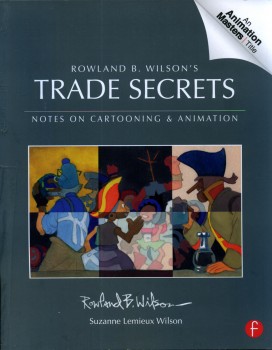 And as long as we’re talking about Rowland Wilson, I can’t pass up the chance to tell you, yet again, how great Trade Secrets is. Subtitled, “Notes on Cartooning and Animation,” the book is so much more than that. It’s a lifetime’s worth of invaluable notes, advice and commentary about illustration, cartooning and (most importantly to me) animation. I’ve read large chunks of this book over and over again. It all seems so basic and simple, when you’re deep into it, but the book is thick with brilliant comments about the art of drawing and painting. You’ve got to get your hands on it just to see how rich the material is. Once you do, though, you’re going to want to own it. I feel not only indebted to Rowland for the material but to Suzanne Lemmieux Wilson for having finished the book and making sure it looks as perfect as it does. It’s a treasure.
And as long as we’re talking about Rowland Wilson, I can’t pass up the chance to tell you, yet again, how great Trade Secrets is. Subtitled, “Notes on Cartooning and Animation,” the book is so much more than that. It’s a lifetime’s worth of invaluable notes, advice and commentary about illustration, cartooning and (most importantly to me) animation. I’ve read large chunks of this book over and over again. It all seems so basic and simple, when you’re deep into it, but the book is thick with brilliant comments about the art of drawing and painting. You’ve got to get your hands on it just to see how rich the material is. Once you do, though, you’re going to want to own it. I feel not only indebted to Rowland for the material but to Suzanne Lemmieux Wilson for having finished the book and making sure it looks as perfect as it does. It’s a treasure.
To give another view of some other advertising work done by Rowland Wilson, Bill Peckmann forwarded these pieces. Here’s Bill:
- I thought maybe you would enjoy seeing the original art of two Phil Kimelman & Ass. house ads. The first one is all Rowland Wilson, both concept and finished art, the second one is a collaboration of Rowlie and Alex Toth.
We’ll start with the printed ad as it appeared in Millimeter magazine in 1979, and then do close ups of the original art.
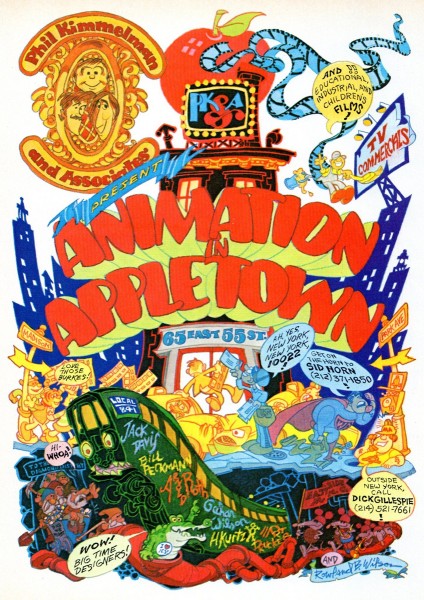
The full sized ad
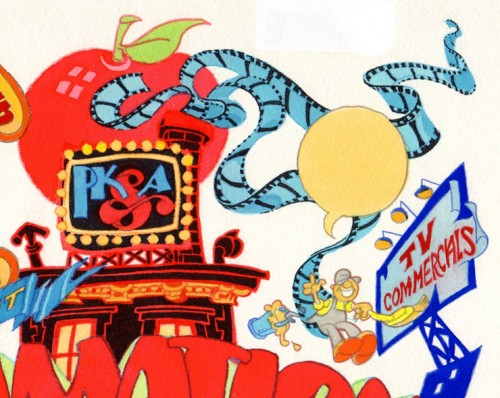
No lettering in the word balloons, that was done on a separate over lay.
The second PK&A house ad was written by Rowland Wilson, Alex Toth did the finished black and white art and then Rowland colored it with his water colors.
Here’s the black and white.
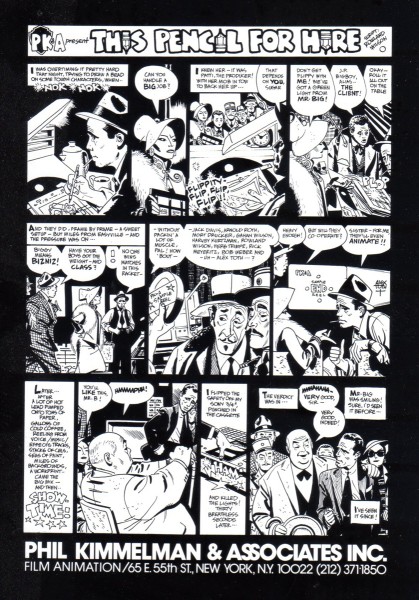
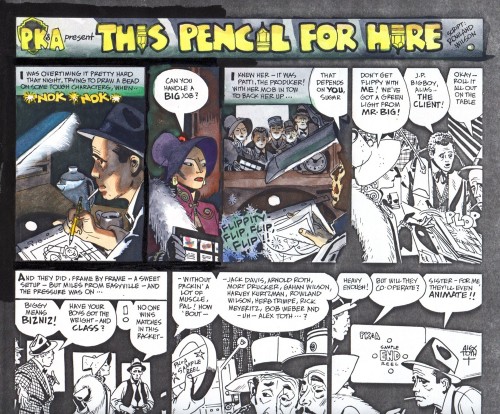
We took Alex’s original art, xeroxed that on to kid finished
Bristol board, the paper Rowland always worked on.
Here is an unfinished, experimental start by Rowland.
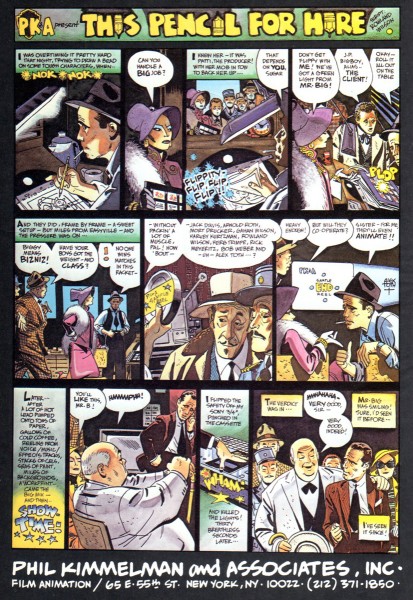
The only time the ad ever ran in color was here
in the 1982 International Film Guide paperback.
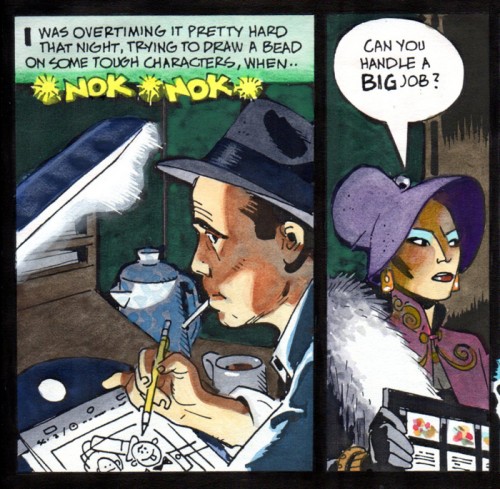
Hopefully all will enjoy these panels in their large format
and be able to see how each one works by itself
in the drawing and the coloring.
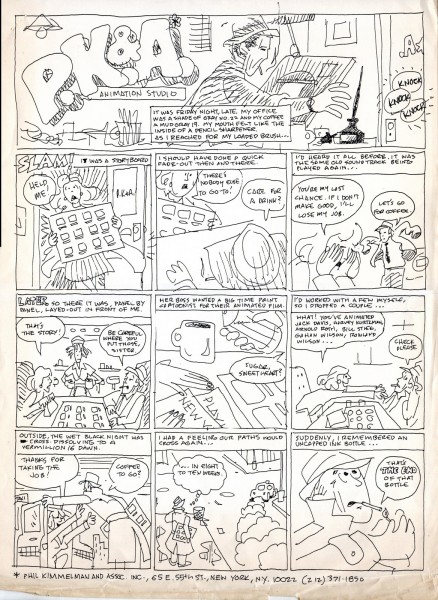
Here is a small footnote to the history of the ‘Pencil for Hire’ ad.
It’s my rough that started the ball rolling. I was hoping to entice
Alex into doing a take off on a Milton Caniff type Sunday comics
page for our house ad. Fortunately, Rowland was looking over
my shoulder and thought it was time for a rewrite!
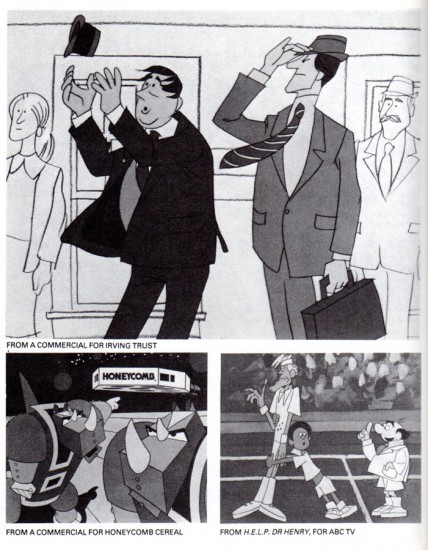
The 1982 Film Guide also contained this page, the “Irving Trust” commercial
and the “Dr. Henry” series were designed by Rowland, the “Honeycomb” spot by me.
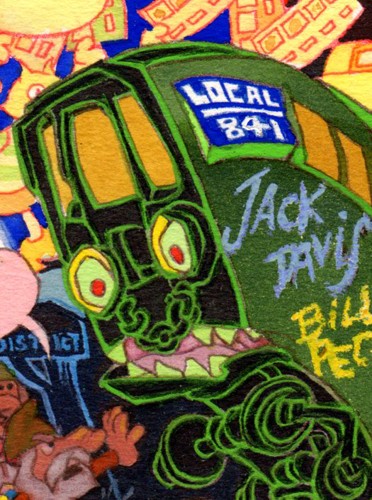
PS: I wanted to end on this button. For all of us who
still remember “Local 841″ and green subway cars!
Articles on Animation &Books &Rowland B. Wilson 10 Aug 2012 03:34 am
Trade Secrets
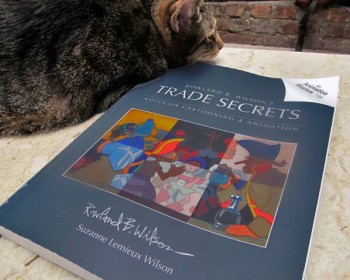 – Finally, I’ve received my copy of the book by Rowland and Suzanne Lemieux Wilson.
– Finally, I’ve received my copy of the book by Rowland and Suzanne Lemieux Wilson.
Rowland B. Wilson’s Trade Secrets / Notes on Cartooning and Animation.
I’d been waiting for this book to come to me since last April when I ordered it. With barely a few hours to scan through it, I can attest to the fact that I think it was well worth the wait. There’s so much there there.
The depth of information on every page is enormous, and just perusing the book, flipping the pages, takes time because the material within is elaborate and complicated. Yet, watching Rowland Wilson break down the information makes you realize what you already know from studying his cartoons: this guy knows a lot, and all of it goes into the choices he’s made in every cartoon.
Consequently, with the book in my hands for only a couple of days, I can’t possibly review it. It’s going to take a long bit of time. I’ll give you a couple of sample pages from the book, so you can see what you’ll be getting if you buy the book (and let me tell you, you should buy this book. It’s a gem, a masterwork of information that’s near-impossible to see collected anywhere. But it takes time.)
The book gives many and varied sheaves of information. At first, I’ve scanned a couple of pages of thoughts on character models. Here are two:
one on women:
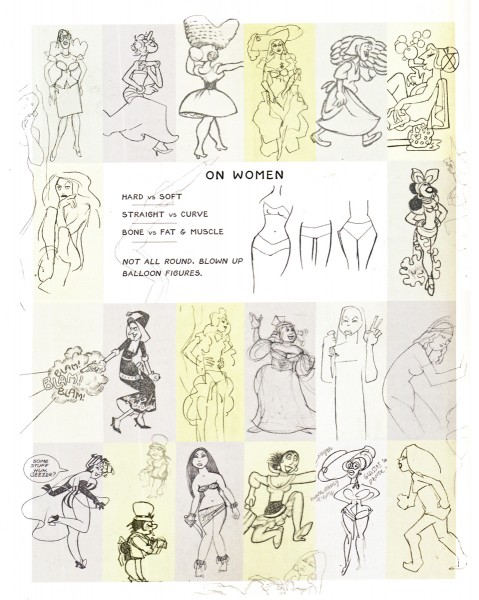 1
1and one on stocky characters:
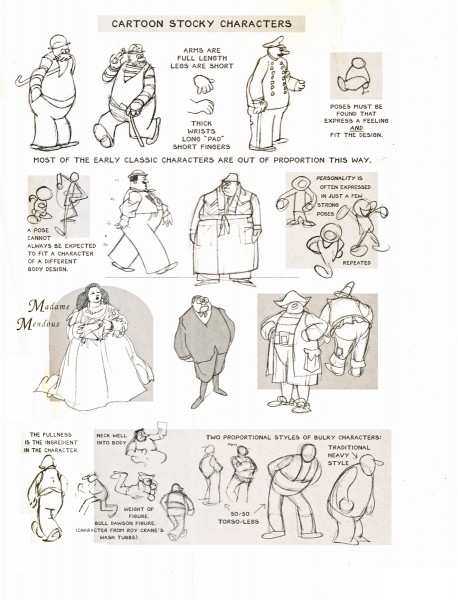 2
2When he gets into the images being created, there’s even a page about iconic imagery within the images being developed. Drawings within drawings.
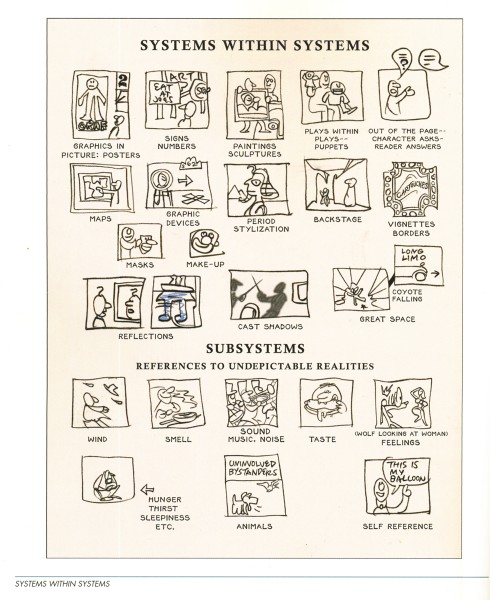 3
3Rowland gets very serious about color and color theories. Here are two adjoining pages which give an overview of color created by varying lighting systems within the drawing.
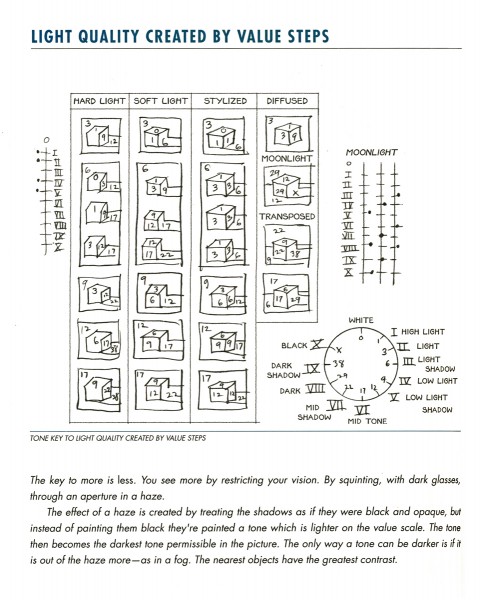 4
4
Then there is the section on notes by the great animators, Grim Natwick and Art Babbitt. This section comes from notes Rowland took at the Richard Williams studio when the two came through the London studio. There were lecture courses given for the studio, and this first page includes some caricatures done at the time.
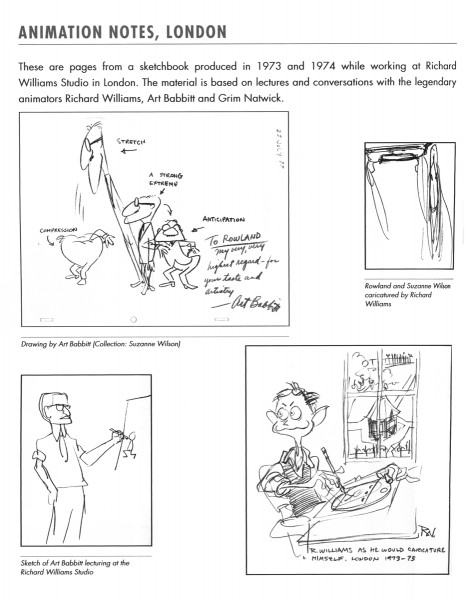 6
6Caricatures done at the Williams’ Studio in Soho Sq.
Here’s a bit of the commentary on Grim Natwick’s lessons:
- GRIM NATWICK AT RICHARD WILLIAMS STUDIO, LONDON
- Grim Natwick was considered one of the world’s greatest animators. He gave a series of talks to animators and was also available for informal conversation during this period (1973-74). We shared the same block of flats and I talked to him often at the studio and after hours. The following is a summation of these talks rearranged according to subject matter.
- GRIM AND THE TRACK— At the time Grim was here I was working on Count Pushkin Vodka (The Trans-Siberian Express animated commercial) and searching for a way to visualize dramatically a musical track. Grim placed great emphasis on the track and the importance of getting to know it thoroughly in order to draw it. At the time he was here I had not started to evolve the the theory of musical form being the basis for animation form. Although Grim never spoke of animation structure as being the same as music structure, on looking back, I see that a number of things he advocated fit into music structure. Art Babbitt’s successive breaking of joints and overlapping action is comparable to the idea of sounding a group of notes in succession, rather than simultaneously. I suspect that the best animators have worked intuitively to principles that are analogous with musical principles. Grim and Art never expressed them that way, exactly.
- DRAWING/ECONOMY— The most controversial theory of Grim’s was to set up a series of related drawings and go into them and out of them and through them in the course of a scene. The animators here felt that the system was not economical due to the amount of mental calculation it took to incorporate a pose in a new way once you had used it. They found the numbering confusing and the doping difficult. Grim presented the idea as an economy and they rejected it on that basis.
- Later in music class it occurred to me the analogy of Grim’s practice with musical practice. The practice of starting with a first and second subject, going through it, repeating it, et cetera,
- I think that Grim’s idea could be called “using a series of HOME KEYS” (animation keys] and is vindicated on aesthetic grounds if not on economic ones.
There’s plenty more where that came from.
Of course, finally, I had to copy this chapter page which includes this great self-caricature by Rowland.
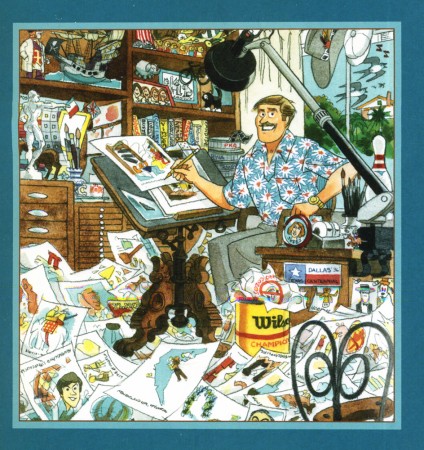
This is a book filled to overflowing with knowledge and information. It makes me realize how little I know and how much there is to learn from masters like Rowland Wilson. He talks briefly about the ad he designed/directed for Riichard Williams, Count Pushkin Vodka. Seeing this ad, alone, is enough to tell you how brilliant Mr. Wilson is and how key it is to learn from such a master. It also says a lot about the man that he spent time preparing these lessons. It also tells me how grateful I am to Suzanne Lemieux Wilson for organizing this material and getting it into shape for publication; I’m sure that was no easy task. I’ll have this book in hand for quite some time to come. In a way, it compares favorably to Richard Williams’ own book on animation, The Animator’s Survival Kit. The difference is that Williams’ book is about acting, performance, and animation; this book is about design, direction and the bigger picture.
Books &Comic Art &Illustration &Rowland B. Wilson 03 Aug 2012 05:38 am
Rowland Wilson – Esquire

Today’s the anniversary of Rowland B. Wilson‘s Birthday,
and I have a great post to celebrate it.
- Completing the scanning and posting of Rowland Wilson‘s book, Whites of Their Eyes, I received a note from Suzanne Wilson and a series of scans of some beautiful color art by Rowland. Here’s that note:
- Hello Michael,
- It’s exciting to see Rowland B. Wilson’s “The Whites of Their Eyes” revisited. Perhaps your posting will initiate another half-century of shelf life to these cartoons!
- Originally, most of them were presented in color but due to printing restraints of the time they did not appear that way in the book. I think Rowland said he had to rework some of them as line drawings.
- I thought it might be of interest to make a comparison with the color versions. In the process I came across additional material from Esquire that wasn’t included in “Whites”, as well as from some unknown publications. They are interspersed here in no particular order.
- Image 07, the lighthouse keeper, was selected by the great psychologist, Carl Jung as an illustration in “Man and His Symbols”. It was reprinted recently in “Understanding Psychology”, published by McGraw-Hill.
- Thank you for keeping the RBW humor and oeuvre alive.
- Sincerely,
Suzanne
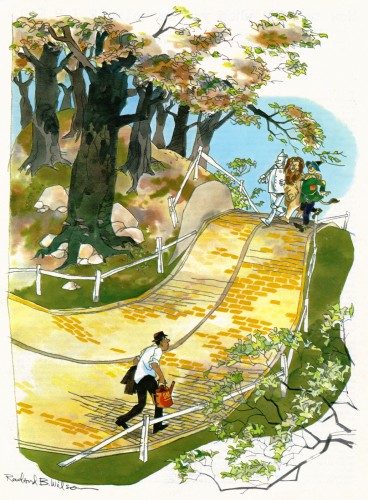 1
1
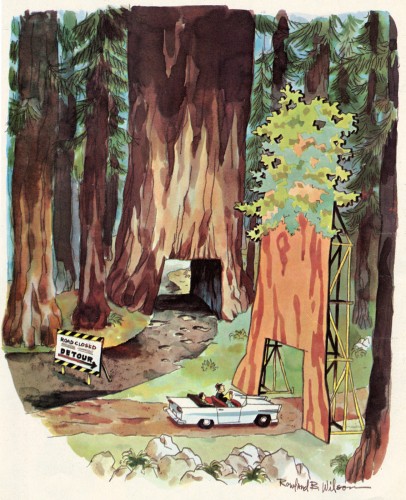 13
13
Finally, here are two drawings in honor of the Olympics:
According to Amazon, Suzanne Wilson’s book, Rowland B. Wilson’s Trade Secrets: Notes on Cartooning and Animation, was released yesterday, and is Out of Print with LIMITED AVAILABILITY. I guess that when I said to get one soon, a lot of people were listening.
This is a book I’ve been looking forward to reading for quite some time. I’m curious about the “Cartooning” part, but I’m wildly interested in seeing the “Animation” part. Rowland was a master of design when he worked in animation; I want to read anything he has to say about it.
Bill Peckmann &Books &Comic Art &Illustration &Photos &Rowland B. Wilson 02 Aug 2012 05:23 am
Whites of Their Eyes – 4
- This is part 4 of 4 of the Rowland B. Wilson book, Whites of Their Eyes. You can find the other three parts here: Part 1, Part 2, Part 3.
The book was scanned and sent to me by Bill Peckmann, and, of course, he’s the one to thank for this great material from this 1962 book. Here are the final images from the book, and boy are they good.
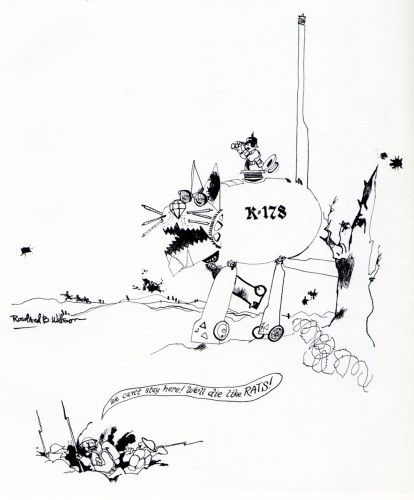 1
____________________________
1
____________________________Bill Peckmann sent me the following note with the scans:
-
For all fans and friends of Rowland B. Wilson, I just want to give Suzanne Lemieux Wilson a big standing ‘O’ and a shout out of our appreciation for authoring the very soon to be released book ‘Rowland B. Wilson’s Trade Secrets, Notes On Cartooning & Animation‘. Without her diligence and heavy lifting of putting this book together, we would never have seen this wonderful collection of RBW art in print form, plus the added topper of actually finding out Rowland’s thoughts and reasoning that went into producing the art that we’ve come to know and love. Suzanne, again, many, many thanks!
Here’s a little photo trip down memory lane with Suzanne and Rowland.
(England 1973.)
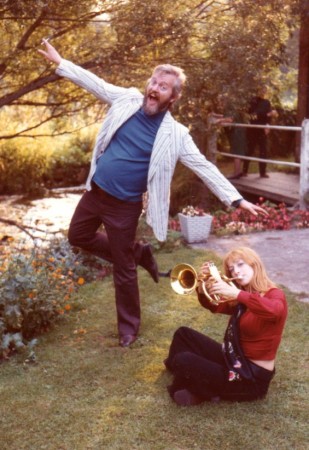
England 1973
Bill Peckmann &Books &Comic Art &Illustration &Models &Rowland B. Wilson 20 Jul 2012 05:43 am
Whites of Their Eyes – 2
- Several years ago, I’d posted Bill Peckmann‘s xeroxed copy of Rowland B. Wilson‘s 1962 book, Whites of Their Eyes.
Bill has now sent me new scans from the book, itself, and they’re worth posting in this better state. I hope you enjoy the diversity of Rowland’s style in the wide range of cartoons he’d done by 1962.
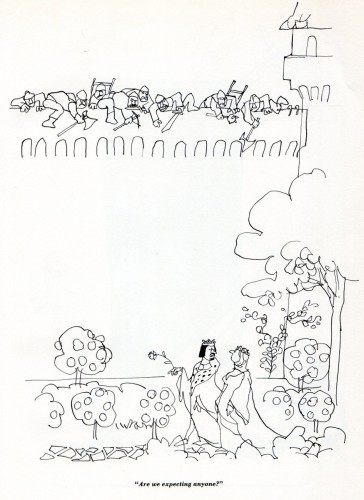 1
1
 26
26
In 1981, nestled in their idyllic abode in the cartoonist’s and
illustrator’s haven of Westport, CT., Rowland and Suzanne Wilson
had their own British invasion…
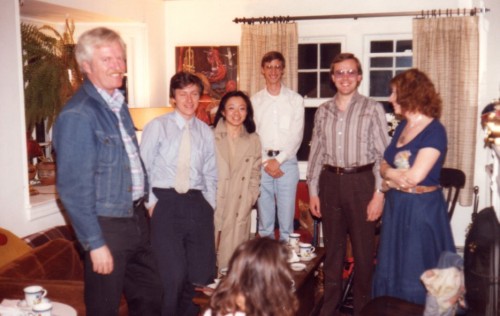 27
27
…It was colleagues and friends of Rowland’s that he had
worked with previously at Richard Williams Studios in London.
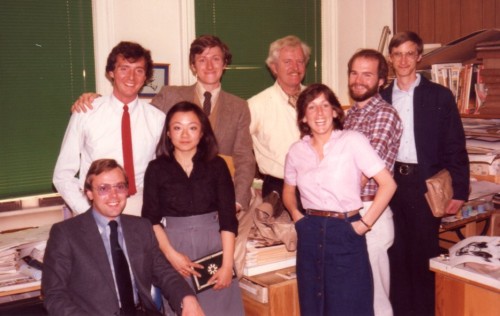 28
28
Following the visit to Rowland’s house, everybody dropped by
to see Row in his room at the PK&A Studios that he shared
with Bill Frake (Standing far left) and myself. Mark Mayerson (standing far right)
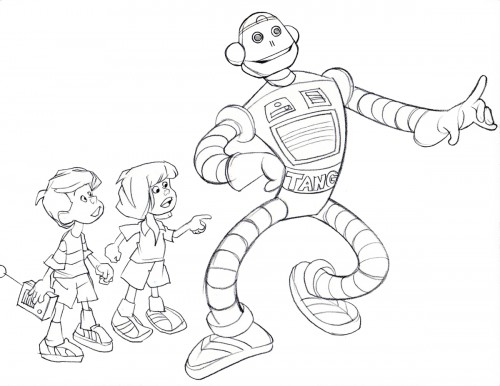 29
29
The following pencil sketches are by RBW, from about the same
time period as the visit. They were done for ‘Tang’ commercials,
Rowland designed the characters and did the BG’s.
